- Things to Do
- Food & Drink
- Shopping & Style
- Coca-Cola Foodmarks
- Restaurants & Cafes
- Music & Nightlife
- Neighborhoods
- Los Angeles


17 best art exhibitions in Tokyo right now
What's on right now at Tokyo's most popular museums and galleries, from conceptual sculptures to immersive digital art
With an abundance of art shows happening this season, it'll be hard to catch all of the latest installations before they disappear. Nonetheless, we've got a list of the top art exhibitions taking place in some of Tokyo's most popular galleries to help you figure out where to start – we've also included free exhibitions in this list.
For a full day of art excursions, you should also check out Tokyo's best street art and outdoor sculptures , or fill your Instagram feed at the newly reopened teamLab Borderless .
Note that some museums and galleries require making reservations in advance to prevent overcrowding at the venues.
RECOMMENDED: Escape the city with the best art day trips from Tokyo
Don't miss these great shows

Does the Future Sleep Here?
- Ueno Until 12 May 2024
Since opening in 1959, the National Museum of Western Art has been known for its showcase of Western art dating from the 14th to the mid-20th century. During its 65-year history, the museum has never hosted a contemporary art exhibition – until now.
‘Does the Future Sleep Here?’ is NMWA’s first contemporary art exhibition. From March 12 to May 12 2024, you’ll be able to see works from more than 20 artists of all ages who are creating experimental art in Japan.
With its inception, the museum hopes that its extensive collection of Western art would spark the creativity of a future generation of artists. Therefore this special exhibition features contemporary art inspired by NMWA’s permanent collection.
The diverse selection of contemporary art in this showcase are interspersed with classics from the museum’s main collection, including masterpieces by Monet, Cézanne and Pollock. Here you’re able to see how NMWA has inspired a new wave of artists. So don’t miss this groundbreaking exhibition that gives you the opportunity to admire the best of Western art alongside thought-provoking contemporary pieces from today’s talented array of artists.
The exhibition is closed on Monday (except May 6) and May 7.

Brancusi: Carving the Essence
- Kyobashi Until 7 Jul 2024
One of the most influential figures in twentieth-century sculpture finally gets a comprehensive career retrospective in Japan. Romanian-born Constantin Brancusi (1876-1957) is considered one of the pioneers of modernist sculpture, thanks to his bold exploration of pure form. Around 90 exhibits, including 2D works such as fresco, tempera and drawings as well as sculptures, demonstrate how his muse flourished after a period working as assistant to Auguste Rodin.
Brancusi’s artistic practice came to combine wild shapes influenced by non-Western art forms, such as African sculpture, with an acute sense of the materials he was working with. In earlier, plaster sculptures such as ‘The Kiss’ (1907-10), human and animal figures are abstracted yet still clearly identifiable. By the late 1920s however, as illustrated by the bronze-cast ‘Bird in Space’ (1926), Brancusi’s subjects are rendered as abstract silhouettes almost entirely distinct from their natural form.
This retrospective includes over 20 sculptures on loan from the Brancusi Estate, as well as works from other collections both Japanese and international.
The exhibition is closed on Mondays (except April 29, May 6), April 30 and May 7.

Theaster Gates: Afro-Mingei
- Roppongi Until 1 Sept 2024
This debut Japanese solo show from Chicago-born Theaster Gates takes place at one of Tokyo’s most prestigious art venues. Gates’s rise to prominence is very much part of the art world’s increasing recognition of the voices of African-American and other non-white communities. A truly multi-disciplinary creative – focused primarily on sculpture and ceramics but also working in architecture, music, performance, fashion and design – Gates strives to preserve and promote Black culture via projects as large as a Chicago initiative that has transformed over 40 abandoned buildings into public art spaces.
Also key to Gates’s vision, and a central theme of this show, is the influence that Japanese cultural and craft traditions have had on the artist over the past two decades. From initially travelling to Japan in 2004 to study ceramics, encounters and explorations over the subsequent decades have led Gates to formulate 'Afro-Mingei'. This is a creative ideology inspired by Gates’s identification of a spirit of resistance shared by Afro-American culture and Japan’s Mingei folk crafts movement. It imagines Black aesthetics and Japanese craft philosophies coming together in our globalised era to form a future hybrid culture.

Giorgio de Chirico: Metaphysical Journey
- Ueno Until 29 Aug 2024
Giorgio de Chirico (1888-1978; Greek-born and of Italian parentage) astounded the art world of the 1910s with paintings of town squares and interior scenes that combined sharp clarity with distorted perspectives, disparate motifs, and a fantastical atmosphere in order to convey the strangeness that he felt was concealed just beyond the everyday. The artist later dubbed this style ‘metaphysical painting’.
This major retrospective is the first large-scale showing of de Chirico’s work in Japan in a decade. The artist’s almost seven-decade-long career is explored comprehensively through a series of themed sections including ‘Metaphysical Interior’, ‘Mannequin’ and ‘Piazza d'Italia (Italian Piazza)’. As these exhibits trace, after 1919 the artist pursued a more classical style of painting, yet still drew upon motifs from his earlier, more dreamlike work.
Surrealist trailblazers Salvador Dalí and René Magritte, themselves no strangers to the uncanny, were among those blown away by de Chirico’s metaphysical paintings. This show, which also includes the artist’s sculptures and set designs, is a rare opportunity to immerse oneself in de Chirico’s singular vision.

Universal / Remote
- Nogizaka Until 3 Jun 2024
As the Covid-19 pandemic fades from our collective memory, the realities that were revealed over that distressing period come into greater focus for those willing to look back. The National Art Center, Tokyo’s first group exhibition in five years explores the idea that the pandemic, with its enforced social distancing, international travel bans and remote working, shattered the illusion that geographical and spatial distances between us had been eliminated by the tech innovations and globalisation of recent decades.
Through a post-pandemic lens, ‘Universal / Remote’ looks mainly at art created prior to the globally disruptive event. Works by eight international and Japanese artists, and one art collective, are sprawled across two expansive sections.
‘Constant Growth at a Pan-Global Scale’ looks at how supposedly 'universal' capital and information continue to drive post-Covid society, with the balance between state power and individual freedom becoming increasingly tense. ‘The Remote Individual’ then investigates the paradox that, despite ever-greater connectivity, a sense of personal isolation is also growing.
Highlights include ‘Dragonfly Eyes’, a video work by Beijing/NYC-based Xu Bing that stitches together actual surveillance camera footage to create a poignant love story, and Danish photographer Tina Enghoff’s desolate images of places where people have died alone.

Tokyo Contemporary Art Award 2022-2024 Exhibition
- Kiyosumi Until 7 Jul 2024
The Tokyo Contemporary Art Award, established in 2018, is a prize intended to encourage mid-career artists to make further breakthroughs in their work by providing winners with several years of continuous support. Here, the two winners of the award’s fourth edition each present shows that, despite their creative diversity, both involve visitors and their actions becoming key elements of the art. Through this, both shows lead audiences to examine their relationships: with fellow humans, animals, and society’s expectations.
Saeborg , born in 1981 and based in Tokyo, creates and performs as a latex bodysuit-clad ‘imperfect cyborg, half human and half toy’ that enables the female behind this guise to transcend such characteristics as age and gender. Here Saeborg presents ‘I Was Made for Loving You’, for which a section of the venue has been transformed into a life-sized toy farm. Visitors will experience a highly immersive installation-performance that transcends the boundaries between the body and synthetic materials, and between human and animal.
Michiko Tsuda (born in 1980 and working in Ishikawa prefecture) presents ‘Life is Delaying’, an installation that uses video to explore the notion of physicality. The work recreates the private world experienced by a family at home through the perspective of someone operating an old-school video camera. The piece was inspired by Tsuda’s childhood memory of a video camera appearing in her family residence. Here, fictitious documentation of a family, the smallest basic unit of society, is expanded upon to examine the positions of individuals within larger groups and systems.
The exhibition is closed on Monday (except April 29 and May 6), April 30 and May 7.

MUCA: Icons of Urban Art
- Roppongi Until 2 Jun 2024
Opened in 2016 in Munich, the Museum of Urban and Contemporary Art (MUCA) holds one of Europe’s foremost collections of urban-inspired contemporary art, encompassing the likes of Kaws, Banksy and Shepherd Fairey. Now Tokyo, a key city in global street culture, finally gets a taste of the MUCA collection with the arrival of this touring exhibition that has already wowed Kyoto and Oita City.
Over 60 major pieces, including career-defining work by the above-mentioned figures as well as fellow legends including JR, Invader and Barry McGee, are being shown in Japan for the very first time. Highlights include Banksy’s ‘Bullet Hole Bust’, in which the artist’s anti-establishment attitude is rendered in 3D form: the cultural bust form associated with classical art is brutalised by a bullet to the forehead. Kaws’s ‘4ft Companion (Dissected Brown)’, meanwhile, cuts away the left-side ‘skin’ of one his signature ‘Companion’ characters to reveal its inner organs.

Ecology: Dialogue on Circulations – Dialogue 2 ‘Ephemeral Anchoring’
- Ginza Until 31 May 2024
An art gallery operated by luxury house Hermès and located within the brand’s Ginza flagship store, Le Forum presents the second exhibition of a two-part series exploring the practice of ecology in art. ‘Ephemeral Anchoring’ brings together diverse work from four international creators to examine contemporary art's potential to be a site for dialogue between nature and human energy.
Photographs by Nicolas Flocq, shot during dives into oceans and rivers across the globe, use both conceptual and scientific methods to capture 'underwater landscapes' together with their ecosystems. As the representative work included here demonstrates, the results of Flocq’s shots range from documentary of subaquatic human activity normally hidden from view, to abstract images formed from the green and blue tones of the sea. Texas-based Kate Newby, meanwhile, contributes colourful abstract installations that appear to proliferate across the gallery space.
Japan’s Takeshi Yasura presents installations themed on various natural and sensory phenomena ('noise', 'cosmos') that are partly the result of the artist’s daily practice of literal 'field work': sowing seeds, ploughing and replanting. Finally, French sculptor Raphaël Zarka presents a series of photographs in which the latent dynamism of public artworks is revealed by skateboarders riding their geometric forms.
The exhibition is closed on March 27 and April 3.
Text by Darren Gore

TOKAS-Emerging 2024
- Hongo Until 16 Jun 2024
Tokyo Arts and Space (TOKAS) has since 2001 been holding this annual exhibition as part of its multi-faceted support for young and emerging Japanese talent. 2024 sees the event comprise solo shows by six up-and-coming artists, whose work encompasses painting, photography, video, installations and more, split into two sessions running from April through to June.
Part one (April 6 to May 5) features Chisa Takami’s ‘℃ | The Ring of 23 Degrees’, which comprises videos and performances on the themes of ‘ambiguity’, ‘voids’, and the ‘presence of mediating objects’ (performances held on Saturday and Sunday only; see website for schedule). Naoto Nakamura, meanwhile, presents ‘Fernweh Trupp’, in which a narrative written by the artist unfolds in an apartment-like installation which combines imagery, furniture, and sound design. Finally, Chiho Okuno contributes ‘Training for My New Body: I Want to See My Back’ in which videos, engravings and three-dimensional pieces depict the world as seen by rabbits, an animal that has a near-360-degree field of vision.
Part two (May 18 to June 16) then presents Kanako Hiramatsu’s ‘Heap Up Sand’, in which the artist takes inspiration from the activity of ants to create an environment that incorporates multiple perspectives. This is joined by ‘Dogs and FPS’ from Satoshi Kikuya, an animated work giving viewers the perspective of a character who becomes lost while following a dog. Finally, Sayaka Toda’s ‘Echoes of the Unspoken: The Silent Voices of the Vanishing’ presents photos and videos depicting the atelier of a fictitious artist who spent his life creating terracotta figures of naked women. In this Toda aims to give a voice to women who in the present day are increasingly liberated from such objectification.
This compelling programme takes place inside a downtown venue with distinct character: TOKAS’ Hongo space occupies a building constructed back in 1928, with its rugged concrete shell emblematic of an architectural style that flourished following 1923’s Great Kanto earthquake.
The exhibition is closed on Monday (except April 29), April 30 and May 6-17.

Will Truth Be Resurrected? Goya's The Disasters of War, the Complete Set
- Ueno Until 26 May 2024
This is the very first opportunity to view the National Museum of Western Art’s complete set of ‘The Disasters of War’, a series of prints by Francisco de Goya (1746-1828) depicting the Spanish War of Independence. Across some 82 monochrome images, the Spanish artist unflinchingly documents the suffering, both civilian and military, caused by this conflict against invading French forces that lasted from 1808 until 1814. Goya also sharply satirises the political moves that went on behind the scenes.
A number of techniques are used to achieve murky depths of grey and black appropriate for such subject matter, including etching, burnishing, drypoint and aquatint. In a print titled ‘Against the Common Good’ we see the ‘accounting’ of war being carried out by a demon with bat wings extending from his skull, while the less figurative ‘Cartloads to the Cemetery’ shows the body of a long-limbed young female being unloaded from a cart prior to her funeral.
Together, these works convey the wretchedness that accompanies human conflict in any era. Furthermore, the series asks a question that is more pertinent than ever, in a present marked by the ‘fake news’ phenomenon: what should we do when truth and justice break down, and the dark side of civilisation is revealed?
The exhibition is closed on Monday (except April 29 and May 6) and May 7.

Animals, Animals, Animals! From the Edo-Tokyo Museum Collection
- Marunouchi Until 23 Jun 2024
Opens Saturday April 27
Animal life is not something commonly associated with Tokyo – a city that, arguably more than any other world capital, is built for human convenience. Nonetheless, as this exhibition vividly demonstrates, the relationship between Tokyoites and animals has run deep ever since the city’s establishment as Edo over four centuries ago.
Around 240 exhibits, on loan from the vast collection of the Edo-Tokyo Museum , explore this human-beast connection from the establishment of the Edo Shogunate in 1603 through to more recent times. This show is an expanded ‘homecoming’ edition of ‘Un Bestiare Japonais’, a highly acclaimed event held at Paris’ Maison de la culture du Japon in 2022 and 2023.
Tokyo’s love of cats and dogs, still highly evident today, is seen here in pieces ranging from ukiyo-e woodblock prints from the masters of that genre, to the often cute motifs used in both traditional crafts and more modern toys and ornaments. A print by the legendary Utagawa Hiroshige (1797-1858; shown in the exhibition’s second half) features a plump domestic cat as it gazes from a window, with Mt Fuji on the distant horizon. Less lovable creatures are referenced too, as in Harunobu Suzuki’s (1724-1770; exhibition’s second half) depiction of a mother and her child hanging up a mosquito net.
Edo and Tokyo history is illuminated through this diverse selection of exhibits. Pre-mass industrialisation, the city relied heavily upon the ‘labour’ of horses, and a section unique to this Tokyo edition features works, including nishiki-e paintings, depicting the horse-drawn carriages that ran on the streets from 1882 until 1903 as a form of public transportation.
Note: Content varies across the exhibition’s first (April 27-May 26) and second (May 28-June 23) terms. The exhibition is closed on Monday (or Tuesday if Monday is a public holiday).

8th Yokohama Triennale
Yokohama’s largest art festival, and one of Japan’s longest-running, is now underway and wowing visitors with work from some 93 international artists, 20 of whom are exhibiting brand new creations. The Yokohama Triennale takes place every three years at venues across a broad stretch of this historic port city, and this eighth edition reflects Yokohama’s famously cosmopolitan outlook by inviting two Chinese contemporary artists onboard as artistic directors.
Liu Ding and Carol Yinghua Lu have given the title ‘Wild Grass: Our Lives’ to this Triennale that tackles issues such as globalisation and the resurgence of nationalism in spectacular fashion, reaffirming art’s relevance to our daily existence. From the many exhibits and events centred around the newly renovated Yokohama Museum of Art , BankArt Kaiko and the Former Daiichi Bank Yokohama Branch, as well as numerous smaller venues, we’ve picked five of the most compelling things to see and do...

Henri Matisse: Forms in Freedom
- Nogizaka Until 27 May 2024
Renowned 20th century master Henri Matisse (1869-1954), though best known as a painter, was a true multimedia artist whose creativity also spanned sculpture, printmaking and other forms. This is the very first exhibition in Japan to focus on the French artist’s work with paper cut-outs, the medium he energetically pursued in the last decade-and-a-half of his life.
Works on loan from the Matisse Museum in Nice, France show how the artist began creating expressionistic collages composed of scissor-cut pieces of paper in a multitude of colours. The subjects and themes of these cutout works included the female form, avian life, and a distinctive two-dimensional take on the flowers-and-fruit still life. While initially modest in size, these cut-outs grew in scale to become murals spanning entire walls: the largest example featured here is some eight metres wide.

Oscar Oiwa: Oil Octopus in the Era of Turbulent Currents
- Shibuya Until 12 May 2024
Brazilian-American visual artist Oscar Oiwa is returning to Tokyo with a solo exhibition at Shibuya Hikarie. Oiwa is known for his unique way of expressing global issues through social satire and plenty of humour, which he builds into his multimedia compositions. Born in São Paulo, Oiwa started his artistic career in Japan before moving to New York, where he is currently based. He has previously held large-scale exhibitions at prominent museums and art festivals around Japan, including the Museum of Contemporary Art, Tokyo and the Echigo-Tsumari Art Triennale.
Oiwa's upcoming exhibition in Tokyo centres on the fictional aquatic creature ‘Oil Octopus’, and how it lives through turbulent times as an expression of ongoing environmental issues. The show features a range of new artworks including 25 paintings, videos and three-dimensional pieces. ‘Oil Octopus’ made its first appearance in Oiwa's 1999 painting 'Aquarium', but here you'll get to experience the creature as a guide to the exhibition as it drifts in and out of Shibuya Hikarie via banners and artwork displays on multiple floors of the building.
Another highlight of the exhibition is the massive mural on the fourth-floor Hikarie deck. The final touches of the mural will be completed by Oiwa himself during a public showcase on May 3, and the piece will remain on display until September. Additionally, a giant balloon which was previously shown at the Keelung Art Festival in Taiwan will also be on display.

Galaxy & teamLab: Catching and Collecting in the Dinosaur Forest
- Digital and interactive
- Harajuku Until 30 Jun 2024
Step into an enchanted digital forest in this collaborative exhibition between teamLab and Galaxy. Now in its third iteration, the interactive experience is based on the concept of catching different digital creatures to study them before releasing them back into their habitat. As it's a digital art experience, you'll be using an app on the Galaxy smartphone to collect different prehistoric animals in the mystical forest.
Be gentle when approaching these critters! If you try to touch them they might run and disappear into the forest. If you're lucky, they might become curious instead and turn towards you. Nevertheless, the exercise here is to point your phone camera at them, release a Study Arrow in their direction, and capture them onto your screen so that you can learn more about their nature.
You can also work together with other visitors and shepherd the dinosaurs projected on the floor. This allows you to then deploy the Study Net and capture them into your phone. Once you've done studying them, you can release them back into the space.
While the exhibit is free, reservations are required so as to avoid overcrowding the venue. Each session is an hour long, with the exhibition open from 11am until 7pm daily. You can book a timeslot as early as three days in advance via the event website .

Mark Leckey: Fiorucci Made Me Hardcore feat. Big Red Soundsystem
- Omotesando Until 18 Aug 2024
British-born artist Mark Leckey is a product of the UK’s ever-vibrant pop culture, and through diverse mediums he confronts youth, dance music, nostalgia, social class and history from an often countercultural perspective. The subcultural edge of his work – which encompasses film, sound, sculpture, performance, collage and more – additionally takes on a gritty incongruousness when enjoyed at Louis Vuitton’s sleek Omotesando exhibition space.
The French luxury house here presents two Leckey works from its collection. 'Fiorucci Made Me Hardcore feat. Big Red Soundsystem' (1999-2003-2010) is a film that, through a mash-up of archive footage, vividly traces the development of the UK’s underground dance music scene from 1970s disco through to the ’90s rave scene.
2013’s 'Felix the Cat', meanwhile, is a giant inflatable rendering of the cartoon cat that Leckey considers a pioneer of the digital age. Almost a century ago, this feline character was one of the first subjects to be transmitted as a TV signal.
More art in the city

11 best art museums in Tokyo
Our picks for the best art museums in Tokyo, from traditional Japanese paintings to Renaissance classics and contemporary works

Best public art sculptures in Tokyo
- Outdoor art
Get out of the museum – Tokyo has plenty of artworks that are free to see out in the open
[image] [title]
Discover Time Out original video
By entering your email address you agree to our Terms of Use and Privacy Policy and consent to receive emails from Time Out about news, events, offers and partner promotions.
🙌 Awesome, you're subscribed!
Thanks for subscribing! Look out for your first newsletter in your inbox soon!
- Terms of use
- Work for Time Out
- Time Out Group
- Advertising
- Modern slavery statement
- Manage cookies
Time Out Tokyo
- Magazine subscription
- Digital edition
- Buy the guide to Tokyo
Time Out products
- Time Out Worldwide
Truly Tokyo
A Tokyo Travel Guide
Tokyo 1-Day Art Lovers Itinerary
In Tokyo, art lovers are spoiled for choice: There are just so many good museums and galleries to choose from. This 1-Day Art Lovers Itinerary is the best way to see the four best museums in Tokyo without tiring yourself out.

Tokyo Art Lovers Itinerary Summary
- This itinerary includes the Tokyo National Museum (Ueno), the Mitsubishi Ichigokan Museum ( Tokyo Station Area ), the Nezu Museum (Harajuku/Aoyama), and the Tokyo Metropolitan Teien Art Museum (Meguro).
- Base yourself somewhere central to save time (see Notes below).
Tokyo Art Lovers Full Itinerary
- 9:00am: Ueno – Tokyo National Museum Head up to Ueno and walk across the park to the Tokyo National Museum. Try to arrive right at 9:30am, when the museum opens, because it gets very crowded later on. This museum gives you a great overview of the major periods and categories in Japanese art.
- 10:30am: Tokyo Station Area – Mitsubishi Ichigokan Museum Take the JR Yamanote Line south from Ueno to Tokyo Station . Walk south from the station to the superb Mitsubishi Ichigokan Museum. Focusing on Western art, this museum is one of Tokyo's great treasures.
- Noon: Tokyo Station Area – Lunch The area in and around Tokyo Station is crammed with restaurants. The Marunouchi Brick Square, just outside the Mitsubishi Ichigokan Museum (above) is a good place to eat and is slightly less crowded than places closer to the station at lunch hour. For more choices, see my Tokyo Station Area Places to Eat section.
- 1:30pm: Harajuku – Nezu Museum Take the Ginza subway line from Nijubashimae Station (very close to the Mitsubishi Ichigokan Museum) to Omotesando Station in Harajuku . From this station, it's a short walk east to the wonderful Nezu Museum. The museum alone is well worth a visit, but the garden (admission is included with museum entry) is breathtaking – it's probably my favorite place in all of Tokyo! Don't miss it.
- 3:00pm: Meguro - Tokyo Metropolitan Teien Art Museum Take the Chiyoda subway line one stop west to Meiji Jingumae (Harajuku) Station and switch to the JR Yamanote Line and ride it south three stops to Meguro . Exit and walk east for about 15 minutes to this seldom-visited Art Deco (by tourists at least) building which houses an every-changing schedule of fine exhibitions. Don't miss the adjoining garden.

- If you're only going to be in the city for one day, you should try to base yourself in a central location so you don't waste time moving around. I'd suggest Shinjuku, Shibuya, Ginza or the Tokyo Station area . For more on where to say, check out my Where to Stay in Tokyo page .
- If you're tired or just want to sleep in, cut out Ueno and the National Museum and start at the Mitsubishi Ichigokan Museum in the Tokyo Station Area. This allows for a much more relaxed pace during the day.
- Don't try to do any more than this in one day in Tokyo – you'll tire yourself out. If you want to relax, subtract one or two places from this itinerary. As usual, it's better to enjoy a few places properly than to sprint through many places.
Check Hotel Availability
Destination, check-in date, check-out date.

Where Are These Places Located?
- Open the Tokyo map
- You will see the list of places on the left hand side. (Click the 3-line icon in the top left corner if not). Scroll down or use the map search (the magnifying glass icon) to find the place you want.
- Click the name of the place in the list. Its location pin will be highlighted on the map.
- Map pins are color coded - BLUE: Hotels / Ryokan / Guesthouses | VIOLET: Ryokan | PINK: Places to Eat | GREEN: Shops | YELLOW: Things to See and Do
- If you're using the map on your phone, open the map and then search for the name of the place. The map will then zoom in on its location.
Tokyo Vacation Checklist
- For all the essentials in a brief overview, see my First Time In Tokyo guide
- Check Tokyo accommodation availability and pricing on Booking.com and Agoda.com - often you can book with no upfront payment and free cancellation
- Need tips on where to stay? See my one page guide Where To Stay In Tokyo
- You can buy shinkansen (bullet train) tickets online from Klook - popular routes include Tokyo to Kyoto , Tokyo to Osaka and Tokyo to Hiroshima
- You can buy a Japan SIM card online for collection on arrival at Tokyo Narita or Haneda airports. Or rent an unlimited data pocket wifi router
- See my comprehensive Packing List For Japan
- Compare airline flight prices and timings for the best Japan flight deals . Check my guides to arriving at Narita Airport and at Haneda Airport .
- If you're visiting more than one city, you might save money with a Japan Rail Pass – see if it's worth it for you
- A prepaid Welcome Suica card makes travelling around Tokyo much easier - here's how
- World Nomads offers simple and flexible travel insurance. Buy at home or while traveling and claim online from anywhere in the world
Tokyo District Map

- Imperial Palace Area
- Tokyo Station
- Shimbashi Shiodome Hamamatsucho Shinagawa
- Akihabara Kanda
- Roppongi Akasaka
- Harajuku Aoyama
- Ebisu Daikanyama Meguro
Disclosure: trulytokyo.com is a participant in the Amazon Services LLC Associates Program, an affiliate advertising program designed to provide a means for sites to earn advertising fees by advertising and linking to amazon.com and amazon.co.uk. World Nomads provides travel insurance for travellers in over 100 countries. As an affiliate, we receive a fee when you get a quote from World Nomads using this link. We do not represent World Nomads. This is information only and not a recommendation to buy travel insurance.
For a limited time, book your 2020, 2021 & 2022 group tour packages with no deposit required!!!

- Custom Groups Custom Groups Overview Student Groups MICE Special Interest Groups
- About Japan About Japan Destinations Attractions Must See & Do
- About Us About Us Contact us Testimonials Terms & Conditions Travel Agent Services Disclaimer Site Map
- News Press Releases Blog Media
- Your Trip Get Started How to make a reservation Travel Tip FAQs Inquiries
Last Name *
Japan Pottery, Garden & Art Tour with Tokyo Extension
- Japan Group Tours

Japan Deluxe Tours
Visit the must see sites of japan with group sizes ranging from 12 to 35 people..
These tours are great for first time visitors to Japan looking for comfortable accommodation with all entrance fees and most meals included. Our Japan Deluxe Tours are accomodated with professional tour guides, fluent in both Japanese and English, to ensure an educational and valuable visit. Air-conditoned, private coaches are also included, so you can enjoy a comfortable and hassle-free time in Japan. Our tours range from 7 to 21 days, to various regions of Japan.
Deluxe-Plus Small Group Tours
Experience the culture of japan at a slower pace with groups of 10 to 18 people. (smaller group departure available).
These tours combine enrichment, enjoyment, and education with time to truly absorb and appreciate your surroundings. Our Deluxe-Plus small group tours are created to cater to those who are interested in having a deeper understanding of Japan's culture. You will have the opportunity to participate in culturally rich activities and visit destinations only locals may know. Experience luxurious hotels and travel at a leisurely pace when you book a Deluxe-Plus small group tour.
Budget Group Tours
Our budget tours are designed for our guests who are on a limited budget..
Explore the must-see sights and enjoy the hassle-free trip to Japan at an affordable price. Our most cost-effective way to see the highlights of Japan while staying in budget-friendly accommodations. If you would like to have a quick stop to sample the must-see sights of Japan, or plan to explore Japan on your own but would like to take a short trip to learn about Japan before your self-guided journeys. These are the tours for you.
Active Small Group Tours
Travel japan more flexibly in groups of 6 to 13 people using public transportation..
Explore Japan off the beaten path via Japanese public transportation, walking, hiking, cycling and more. Take more time to enjoy local experiences and picturesque landscape. Our Active Small Group Tours combine the best of cultural destinations with off-the-beaten-path via Japanese public transportation, Discover the country of Japan the way the locals do and see Japan from a different angle. A focus on getting away from the crowds and into the real Japan, see the diversity of Japan’s countryside unfold before your eyes.
Group Tour | Deluxe-Plus Tour Code: GTO4009643 6 reviews
Single Supplement:
The price is per person, based on twin or triple room occupancy
For single travelers, this tour has a single supplement. This guarantees a single room throughout the tour
Prices are excluding international flights

Single Room
Single room types are rooms for single room occupants. One person will be occupying the hotel room throughout the tour.

Twin room types are rooms set for two people who will occupy one room, but will have two separate beds.

Double Room
A double room is a room that has one bed for two people to share.

Triple Room
A triple room is one room where three people may share the same room. It has three separate beds.

Japanese Style Room
A Japanese-style room traditionally does not have a western-style bed, it is a tatami floor room with futon bedding. However, if you prefer a western-style bed, you may request one though we cannot guarantee it.
Please note: If you would like to request neighboring rooms next to your traveling companions, you and your traveling companions must have the same room types in order to be next to each other. For example, if you have requested a double room, but your traveling companions have requested a twin, or triple room, then neighboring rooms cannot be accommodated. However, if both you and your traveling companions match in room type, then neighboring rooms will likely be arranged for your convenience.
Take an immersive tour into the artistic genius of Japan during our Japan Pottery and Art Tour, with Tokyo Extension! As a perfect blend of sights and experiences related to Japanese ceramics, art, and architecture, this one-of-a-kind Japan tour creates the perfect opportunity to study in-depth the country's artistic and creative history and culture - revealing a different side of Japan missed by more general tours of the country. Our 17-day extended Japan Pottery and Art Tour i... View More
Take an immersive tour into the artistic genius of Japan during our Japan Pottery and Art Tour, with Tokyo Extension! As a perfect blend of sights and experiences related to Japanese ceramics, art, and architecture, this one-of-a-kind Japan tour creates the perfect opportunity to study in-depth the country's artistic and creative history and culture - revealing a different side of Japan missed by more general tours of the country. Our 17-day extended Japan Pottery and Art Tour includes our original 14-day Pottery and Art Tour, which starts on the island of Kyushu. This gorgeous island is well known for its traditional Japanese ceramics - with a history going back over 400 years. Our tour features Japanese pottery villages in Karatsu, Arita (the birthplace of Japanese ceramics), Sasebo, and Hasami - each with their own regional pottery traditions and techniques. Our tours of these villages are native-level experiences, and include visits to private ceramics workshops such as Kyozan- gama in Karatsu, where you will meet with Japanese potters and artisans. They offer our guests an intimate perspective on local Japanese pottery-making customs and history. We also include tours of private pottery studios at Toho Village, Sasebo, Arita, Bizen, and Kyoto. At Arita, we study the history of Japanese pottery at the Kyushu Ceramics Museum, Imaemon Ceramics Museum, Tozan Shrine, and the Izumiyama Ceramic Stone Field. We also study the local ceramics at Sasebo and Hasami before visiting art museums and galleries at Okayama and Naoshima Art Island, plus a visit to Takamatsu and gorgeous Ritsurin Garden. We visit the old Imbe Bizen Pottery Village for an introduction to the Bizen-ware pottery style before continuing to a brief tour of Kobe After, the city of Osaka beckons, where we experience an Architecture Tour of Japan's second-largest metropolis. Our exploration of the world of Japanese pottery continues in Kyoto, where we examine the rich local pottery known as Kiyomizu-ware (or simply, "Kyo-ware") at a local artist's studio. We include a tour of the Kawai Kanjiro Memorial Museum to study the famous ceramicist's work, as well as a chance to find your own souvenirs at the Shinmonzen and Furumonzen Antique Streets. You can't visit Kyoto without seeing some of its UNESCO Heritage Temples, and we include the Golden Pavilion, Kiyomizu Temple, Kodaiji Temple, and Tenryuji Temple, plus a quick trip over to Nara to see Horyu-ji Temple. We also look into the Geisha sub-culture, including an enchanting Night Walking Tour through the Gion Geisha District. As a tour made expressly for travelers who can't get enough of Japanese pottery and art, this special itinerary features four extra days, starting with a bullet-train ride to the Mount Fuji region. We explore beautiful arts locations around Lake Kawaguchiko - the Kawaguchiko Muse Museum featuring dolls made by Yuki Atae, and the Itchiku Kubota Art Museum, which displays Kubota's spectacular Fuji-inspired kimono silk-dyeing art. We even stop at Oishi Park for a chance to see Mount Fuji if the weather is clear. From there, we head into Tokyo, renowned center of modern Japanese art, yet with a traditional heart that still beats strongly. We will visit ceramics galleries in the upscale Ginza district, browse the traditional art collection at the Nezu Museum and the modern collections at Roppongi Hills' Mori Art Museum. We include time for tranquil relaxation at the gardens of Hamarikyu, the New Otani Hotel, and the Imperial Palace, as well as discover the history and heritage of Tokyo at Asakusa Sensoji Temple and Meiji Shrine. Our dining and accommodation also reflect the tour's Pottery and Art theme, with such experiences as lunch at a Japanese restaurant which uses traditional Arita-ware pottery, a special meal of Kyoto cuisine accompanied by Maiko entertainment, and a couple nights at an onsen ryokan offering a traditional Kaiseki dinner. Transport for the tour is facilitated by our comfortable private coach, and you travel in the company of one of our knowledgeable and friendly English-speaking guides, who are on hand to help you navigate the country, and who share a passion for Japanese traditional pottery and art. The historic wonders of Japan Pottery and Art are yours to discover on this special itinerary that starts in Kyushu's pottery villages, and journeys through Takamatsu, Osaka, Naoshima Art Island, Kyoto, and Nara, plus our special extension through Mount Fuji and Tokyo. Browse our detailed itinerary for additional information.
Tour Information
Experiences.
- Accommodation
Dates & Price
Please Note: All prices are per person, based on twin (double on request) or triple occupancy. International flights are not included on our tours - this allows you the flexibility to choose your own departure and get the best value for your money! We can arrange international flights for US customers if needed, please ask for details.
We require US$200 deposit per person to hold the space at time of booking and the final payment is due 2 month prior to departure.
What's included
- 14 nights Western style and 2 nights Japanese style accommodation
- Meet and greet upon arrival at Fukuoka Airport
- Private airport transfers on arrival and departure
- Private coach transfers between destinations in Japan
- Comprehensive escorted with AJT professional English speaking tour guide
- Breakfast everyday
- 10 lunches and 5 dinners
Admission fees and activities
- All entry fees to sites, activities listed in the itinerary
What's NOT included
- International Airfares
- Meals that are not included in the itinerary
- Travel Insurance
- Alcoholic beverages and soft drinks
- Personal expenses such as telephone and laundry bills
Additional Information
Travel by air conditioned, luxury private coach, baggage handling free.
Arrival Departure Airports
For arrivals at Fukuoka Airport (FUK), this tour starts in Fukuoka and ends in Tokyo, with departures at Tokyo Narita Airport (NRT) or Haneda Airport (HND).
Meal Requests
Vegetarian or special meals can be arranged.
Meet and Greet
Please note that the meet and greet and airport transfer to the first hotel is ONLY available on the first day of the tour. If you plan to stay extra nights before the start of the tour, please contact us for the transfer if needed.
Itinerary In Brief
- Day1 Arrive in Fukuoka
- Day2 Toho Village - Sasebo - Hasami
- Day3 Arita
- Day4 Karatsu
- Day5 Bizen - Kurashiki
- Day6 Yasugi
- Day7 Naoshima
- Day8 Takamatsu - Awaji Island - Kobe
- Day9 Osaka - Nara
- Day10 Kyoto
- Day11 Kyoto
- Day12 Kyoto
- Day13 Kyoto
- Day14 Mt. Fuji
- Day15 Tokyo
- Day16 Tokyo
- Day17 Tour ends
Tour schedule and prices subject to change without notice
Detailed itinerary, fukuoka airport.
Welcome to Fukuoka! We will pick you up from the airport and take to the hotel.
Hotel Nikko Fukuoka or similar class
NOTE 1: The meet and greet and airport transfer to the first hotel is ONLY available on the first day of the tour. If you plan to stay extra nights before the start of the tour, please contact us for the transfer if needed.
NOTE 2: If you wish to stay extra nights before the tour starts, please contact us to book hotel accommodations.
Toho Village (Koishiwara Ware Center / Koishiwara Ware Village), Sasebo (Visit 2 Kilns of Mikawachi Ware), Hasami (Hasami Ware Center)
In the morning, we depart first for Toho Village, a center of "Koishikawa Ware" pottery, Browse the works of the Koishiwara Ware Center and the Koishiware Ware Village which makes produces the sleek and colorful craft work of the region. After stopping to eat a lunch of delicious Italian cuisine, we head to the city of Sasebo to visit 2 local kilns producing "Mikawachi Ware" - a deceptively simple yet elegant white porcelain painted in intricate blue patterns. Then we head to Hasami, where the Hasami Ware Center depicts the household tableware produced in the town. After. we head to the evening ryokan for a relaxing dip in an onsen and mouthwatering dinner prepared at the hotel.
Breakfast / Lunch / Dinner
Shiibasanso or similar class, arita (izumiyama ceramic stone field / tozan shinto shrine / lunch at arita house and aritaria outlet / meet an artist at his studio - introduce arita ware style / arita ware village / imaemon ceramics art museum / kyushu ceramic museum).
In the morning, we travel to Arita, to the Izumiyama Ceramic Stone Field, which could be considered the birthplace of Japanese porcelain. This is where Korean potter Yi Sam-Pyeong discovered clay suitable for firing into porcelain 400 years ago. Next, visit Tozan Shrine with porcelain gates and enshrining Yi Sam-Pyeong whom Arita potters owe a lot. We visit some ceramics shops at the Arita Ware Village including Koransha, which has led Arita- ware ceramics since the end of the Edo period. From there, we go to Arita House, which features Italian lunch using modern Arita-made ceramic dishware. Meet a local ceramics artist at his studio for an introduction to the history and techniques behind the Arita style. Then, at the Imaemon-gama & Ceramics Art Museum and Kyushu Ceramic Museum, we learn the history of Arita Ware. Finally, we return to the Onsen, for another delicious kaiseki dinner and relaxing onsen bath.
Karatsu (Karatsu Castle Observatory / Karatsu City Mini Walk / Arupino - Karatsu Ware Showroom / Meet an Artist at His Studio - Introduce Karatsu Ware Style)
In the morning we travel to Karatsu, first to have a panoramic view of the city and the sea from Karatsu Castle Observatory. Then take a mini walk through Karatsu City, from Karatsu Shrine to a shopping center near Karatsu Station, where there are nice pottery shops. Then we visit Arupino, with a large showroom displaying various works of Karatsu Ware and a hall exhibiting gorgeous festival floats of the famous Karatsu Festival, followed by an introduction to the studio of a local artist, who will give you a basic introduction of the history and techniques of the Karatsu Ware Style.
Breakfast / Lunch
Notes: We will courier your big baggage to your hotel in Okayama (Included for up to one piece of baggage per person). Please pack your essentials for 1 night in a small bag to carry with you.
Fukuoka to Okayama by Bullet Train, Bizen (Meet an Artist at His Studio - Introduce Bizen Ware Style), Imbe (Bizen Pottery Village), Kurashiki (Ohara Museum of Art / Canal Area)
After breakfast, transfer from Fukuoka to Okayama by bullet train, traveling from there to the ancient pottery town of Bizen by private coach. While in Bizen, meet an artist at his studio who will introduce to you the local style of Bizen Ware, then browse around the Imbe Bizen Pottery Village, which contains many ancient kilns from the region, as well as galleries displaying famous local ceramics. Then travel to Kurashiki, where we visit the Ohara Museum of Art, which features a limited collection of choice Western Art - especially works as well as Japan's Folk Art (Mingei) including Mingei ceramics wares and wooden block prints of renowned artist Shikoh Munakaka. After, we stroll the gorgeous Canal Area in the Bikan Historical Quarter. Once used to ferry rice to the town's storehouses, the canal and neighboring storehouses have since been preserved as for its history and beauty, and has become a popular spot for a leisurely stroll along a picturesque promenade lined with weeping willows.
Kurashiki Royal Art Hotel or similar class
Yasugi (adachi museum and garden).
After breakfast, we take a day trip to Yasugi to appreciate the beauty of the Adachi Museum of Art. The museum is the dream of Japanese entrepreneur Adachi Zenko, combining an impressive collection of Japanese art both classical and contemporary with an idyllic landscape garden that has been acclaimed as one of the finest gardens of its kind in Japan. The garden surrounds the museum, offering different enchanting scenes depending on what part of the museum you find yourself in. The Adachi Museum of Art has been listed as the top garden in Japan by the Journal of Japanese Gardening and is a 3- star location in the Michelin Green Guide Japan. After enjoying browsing the museum, return to the hotel in Kurashiki.
Ferry to Naoshima, Naoshima (Art House Project / Ando Museum / Chichu Art Museum / Benesse House)
Today, take a ferry to Naoshima Art Island for a day of inspiration, full of buildings designed by renowned Japanese architect Tadao Ando. We start with the Benesse House, a combination of modern museum and deluxe hotel, with myriad works of artists from all over the world. These include a series of outdoor sculptures set up on the park and shoreline, including the famed giant yellow pumpkin. Next, we will visit the Chichu Art Museum. Built into a hill on the southern coast, Chichu Art Museum’s underground display rooms use natural light to showcase works from a limited selection of artists including Claude Monet and James Turrell. Then head over to the Art House Project, where artists renovate old houses, turning the house and the space inside into a new work of modern art. After, we travel to Takamatsu and enjoy a relaxing evening at the hotel.
Hotel Clement Takamatsu or similar class
Takamatsu (ritsurin garden), awaji island (akashi-kaikyo bridge), kobe (suwayama observatory / ikuta shrine / china town).
After breakfast, we tour Takamatsu's loveliest landmark: Ritsurin Garden. It’s a large landscape garden built during the Edo period, which is considered by many in Japan to be among the country's loveliest gardens. We go to Kobe City through Awaji Island where you have a magnificent view the Akashi Strait Bridge - currently the world's second-longest bridge - stopping at a restaurant by the bridge to enjoy a delicious lunch of Italian cuisine. The tour continues across the bridge to Kobe, where we will take in the view from Suwayama observation deck, where you can get a panoramic view of Kobe City. We then go to Ikuta Shrine, loved by locals since olden times. Then take a stroll around Kobe's Chinatown - known locally as "Nankinmachi" which features a number of little stalls, shops and restaurants selling Chinese food.
Hotel Nikko Osaka or similar class
Osaka (harukas 300 observatory / shitennoji temple), nara (horyuji temple), osaka (osaka architecture walking tour - louis vuitton maison osaka midosuji - galleria akka - daimaru shinsaibashi - etc. / wagyu beef dinner).
In the morning, we begin by enjoying a view from Harukas 300 Observatory - Japan's tallest skyscraper. Next, we visit Shitennoji Temple, which was a temple built by Prince Shotoku - a semi-legendary prince regent who lived over 1500 years ago. We head for Horyuji Temple - home to some of the most ancient wooden buildings in the world. Then explore the diverse collection of structures in the city with an Osaka Architecture Walking Tour. We will see the Louis Vuitton Maison Osaka Midosuji, designed by architect Jun Aoki with architecture that looks like billowing sails. Then we travel to the Galleria Akka which was designed by Tadao Ando. We will also visit the Daimaru Shinsaibashi, which features a blend of art-deco and neo- gothic design by American architect William Merrel Vories. We will visit other iconic buildings around the city as well before we enjoy a delicious Wagyu Beef Dinner. Wagyu has become world-famous as a richly-flavored, high-quality beef that is so tender it practically melts in your mouth, and tonight you will be able to savor for yourself the mouthwatering taste of this prized meat.
Kyoto (Nijo Castle / Imperial Palace / Lunch on Own at Nishiki Market / Visit a Private Garden - Namikawa Yasuyuki Sippo Memorial Museum / Heian Shrine & Garden / Kimono Wearing Experience)
In the morning, a short drive takes you to the ancient capital city of Kyoto, where our first attraction of the day is Nijo Castle, a UNESCO World Heritage Site from Japan’s feudal era, and palatial former residence of the Tokugawa shogun. The gilded buildings and elegant interior are well preserved – the foremost example of Edo-era castle architecture. Next, we pay a visit to the Kyoto Imperial Palace. This was the former residence of Japan’s Imperial Family from the middle of the 14th Century until 1868 when the capital moved from Kyoto to Tokyo. Then you will have time to find your own lunch at Nishiki Market. This narrow shopping street, commonly referred to as 'Kyoto's Kitchen,' is filled with more than 100 restaurants and shops showcasing Kyoto specialties such as Japanese sweets, pickles, dried seafood, and sushi. Then enjoy exclusive access to a local private garden and museum in Kyoto that is the Namikawa Yasuyuki Sippo Memorial Museum. Namikawa Yasuyuki was a Japanese cloisonne artist known for his naturalistic style and transparent black enamel, and this museum houses some of his most famous works. After, we go to the Heian Shrine, which was built to honor the foundation of Kyoto (once known as Heian) over a thousand years ago. The shrine itself is known for its enormous torii gate and spacious inner courtyard. Behind the main building are the Shin-en Gardens - a series of five gardens with various ponds, traditional buildings, and plants. Finally, enjoy a Kimono Wearing experience where you will be able to try on a colorful kimono, and take pictures while in the traditional Japanese attire.
Cross Hotel Kyoto or similar class
Kyoto (kintsugi experience / free time in the afternoon / kyoto cuisine with maiko dinner / gion night walking tour).
The tour of Kyoto continues with a Kintsugi Experience. Kintsugi is also known as "Japanese broken pottery". Broken pottery pieces are put back together with a lacquer made of precious metals like gold., leaving a shining lines running throughout the pottery. Enjoy free time in the afternoon to explore Kyoto before having a meal of Kyoto Cuisine in the company of a Maiko (a Geisha apprentice). Then enjoy an enchanting Night Walk through the Gion Geisha District, an old-fashioned district full of traditional wooden shops, restaurants and teahouses. You may see geisha or maiko walking the streets between the old buildings.
Breakfast / Dinner
Kyoto (kiyomizu temple / meet an artist at his studio - introduce kiyomizu ware style / kiyomizu ware area / tempura lunch at kadokyuu / kawai kanjiro memorial hall / shinmonzen & furumonzen antique streets).
In the morning, we will tour Kiyomizu-dera, a famous temple in Japan that is best known for its large wooden stage that overlooks a hillside of gorgeous natural scenery. Next, meet a local Kyoto artist at their Studio for an introduction to the local style of pottery: Kiyomizu Ware. Savor a Tempura Lunch at Kadoyuu before we visit Kawai Kanjiro Memorial Hall, where you can see folk art created by ceramics master Kawai Kanjiro at his former studio. Then we tour the Shinmonzen and Furumonzen Antique Streets for a chance to browse for that perfect antique souvenir.
Kyoto (Kodaiji Temple - Zen Meditation & Green Tea Ceremony / Arashiyama - Tenryuji Temple & Garden - Bamboo Grove / Ryoanji Temple / Golden Pavilion)
After breakfast, we will travel to Kodaiji Temple, which is a lavish temple built in the memory of Toyotomi Hideyoshi. Here, we can experience Zen meditation and Green Tea Ceremony. Then we will tour the Arashiyama district. First is a visit to see Tenryuji Temple where you can catch a glimpse of the traditional landscape garden design. Then we walk through a dense grove of towering bamboo trees before our visit to Ryoanji Temple. Ryoanji is home to a world-famous rock garden, or "karesansui". While the exact meaning of the garden is a mystery, one can't help but feel a sense of peace and tranquility from its simple, elegant design. Next, we visit the Golden Pavilion, which is perhaps Kyoto's most renowned landmark. The three-story temple is covered in shining gold-leaf and topped with a representation of a phoenix.
Bullet Train to Shin-Fuji Station, Mt Fuji (Kawaguchiko Muse Museum / Itchiku Kubota Art Museum / Oishi Park)
We begin with a trip on a smooth and speedy bullet train to the gorgeous Mount Fuji region. Disembark at Shin- Fuji Station near Lake Kawaguchi to visit the Kawaguchiko Muse Museum, featuring charming dolls made by renowned artist Yuki Atae. Continue around the lake to the Itchiku Kubota Art Museum, located on the other side. This art museum is devoted to the works of silk-dyeing artist Kubota Itchiku, who devoted his life to recreating elaborate kimonos using the lost art of silk- dyeing. Then, if the weather is sunny, we will take a stroll around Oishi Park, which sits on the shores of Lake Kawaguchiko and offers spectacular views of Mount Fuji.
Hotel New Otani Tokyo or similar class
Notes: We will courier your big baggage from Kyoto to your hotel in Tokyo (Included for up to one piece of baggage per person). Please pack your essentials for 1 night in a small bag to carry with you.
Tokyo (New Otani Hotel Garden / Meiji Shrine / Nezu Museum / Omotesando Street - Lunch on Own / Imperial Palace East Garden / Visit Pottery Galleries in Ginza - Aobana-do, Mon & etc)
After breakfast, we will make our way to the garden of the hotel we are currently staying at. This beautiful garden with a dynamic waterfall is steeped in 400 years of samurai lord history and possesses a peaceful ambience while nestled in the heart of Tokyo. Next, we will go to enjoy the natural atmosphere of the Meiji Shrine, dedicated to Emperor Meiji and Empress Shoken. Then, at the Nezu Museum, you can enjoy a collection of pre-modern Japanese and East Asian art that Nezu Kaichiro put together. After bombing in World War II destroyed some of the collection, Nezu Kaichiro’s son continued to add to it to ensure that his father’s collection remained impressive. Stroll the trendy and modern Omotesando Street in search of your own lunch, then visit the Imperial Palace East Garden, which, in addition to its meticulously manicured landscape, retains some old fortifications from when Edo Castle stood there. Finally, visit some local pottery galleries in Ginza. These include Aobana-do and Mon, each featuring a fine collection of ceramic works.
Tokyo (Asakusa Sensoji Temple / Sumida River Cruise / Hamarikyu Garden / Tsukiji Fish Market - Lunch on Own / Roppongi Hills - Mori Art Museum and Observatory)
The second day of Tokyo sightseeing begins with a visit to Asakusa Sensoji Temple, Tokyo’s oldest temple with Kaminarimon gate - a gate hung with an enormous paper lantern in the midst of old areas of Tokyo. Next, board a Sumida River Cruise, where you can enjoy urban scenery of the city on your way to Hama Rikyu Garden, a huge traditional landscape garden next to the sea surrounded by Tokyo's skyscrapers. Visit the famous Tsukiji Outer Market, home to tasty and fresh sushi, and have lunch on your own. After, we tour Roppongi Hills, a modern urban development project that has become a sort of "city inside a city" with residential apartments, offices, shops, restaurants, an observation deck...all centered around Mori Tower, which is one of Tokyo's tallest skyscrapers. Finally, we tour the Mori Art Museum – displaying modern art from new artists around the world. Though modern art can sometimes be complex, the Mori Art Museum aims to have exhibitions which are accessible to the everyday viewing public.
After breakfast, our tour officially ends. Checkout time is 11 am. Transfer to Tokyo Narita Airport or Haneda Airport by private car.
NOTE 3: The departure airport transfer is ONLY available on the last day of the tour. If you plan to stay extra nights after the tour, please contact us for the transfer if needed.
NOTE 4: If you would like to stay longer in Japan, please contact us to book hotel accommodations.
Toho is a village in eastern Fukuoka prefecture, formed of the combination of two smaller villages: Hoshuyama and Koishiwara. The village is blessed with an abundance of rural mountain scenery (mostly in the Hoshuyama area), but is most well known as the center of Koishiwara-ware, a local style of pottery practiced in the area for over 350 years. The Koishiwara pottery village gained a reputation over the years of producing ceramics that were both dependable and beautiful, and you can still see the quality pottery there in its kilns and workshops. The Koishawara Ware Center is a gallery that showcases the local style. Other regional landmarks in Toho include tall arched stone bridge built to accommodate the local railway, the “Gyoja” Sugi Cedar, and Iwaya Shrine, which houses a mysterious “wishing stone”.

Koishiwara Ware is a style of pottery from the village of Koishiwara, known for its ideal blend of beautiful, yet practical pottery.
Koishiwara Ware pottery comes from the village of Koishiwara (now a part of Toho Village), in Fukuoka prefecture. It originated when the lord of the Fukuoka Domain invited potters from Imari pottery village to move there during the Edo period. This style of Japanese ceramics produces tableware for use around the house, such as teacups, saucers, and bowls. Koishiwara Ware is both elegant and utilitarian, with rich earthy textures and glaze decorations, using a variety of techniques involving a potters’ wheel. The different decorative variations of Koishiwara Ware include “uchikake”, which pours on glaze little by little, “nagashikake”, which adds glaze at regular intervals as it spins on a potter’s wheel, and “tobikanna” which shapes contiguous patterns into the ceramic through use of a curved plane, or “kanna”.

Koishiwara Ware Village is the pottery village within Toho Village, which maintains the style and techniques of Koishiwara Ware Pottery.
Koishiwara Village (now a part of Toho Village), is a pottery town within Fukuoka Prefecture. It is well known in the area for its namesake Koishiwara Ware pottery, which have been produced in the area for over 350 years. This local style of ceramics is a beautiful, yet functional type of ware that produces teacups, saucers, flower vases, and other household items. Within the village, visitors will find an array of preserved kilns, workshops, artist studios, and galleries dedicated to Koishiwara ceramics. Some of these places even offer hands-on learning experiences where you can learn to shape clay in the Koishiwara style, and make your own Koishiwara Ware.
The city of Sasebo started as a fishing village up until the Meiji period, when the town was selected by the Japanese Imperial Navy as the site of a new naval base. The city became a major naval shipyard and repair port up to the modern era. A local style of pottery, called "Mikawachi- ware", has been produced in the region for around 400 years. This pottery style is elegant yet simple, with blue pictures painted over a smooth white surface. While touring Sasebo, you can see pottery workshops that display the techniques used in Mikawachi-ware production. Also in the area is Huis Ten Bosch, a Dutch- themed amusement park. The theme park depicts a Dutch city and landscape, with large windmills, gorgeous flower gardens, and classical European architecture. The park also holds festivals to celebrate seasonal flowers.

Mikawachi-ware is an elegant style of pottery from Sasebo city, known for having a white base decorated with simple blue designs.
Mikawachi-ware is a kind of porcelain crafted in Sasebo, in Nagasaki prefecture. It is thought that Mikawachi-ware comes from Korean potters that were brought to Sasebo during the Imjin War, and these potters produced a sleek white porcelain with delicate pictures painted in blue. MIkawachi-ware is not mass-produced, but hand-crafted with grate care a single piece at a time. The porcelain became used throughout the country and abroad, even as far as Europe. The modern city of Sasebo still preserves this traditional craft with kilns and shops that sell works by contemporary Mikawachi-ware ceramists. There is also the Mikawachi-ware Museum of Art, which works to promote this traditional art by exhibiting masterpieces of Mikawachi-ware produced around 400 years ago.
Hasami is a town in Nagasaki prefecture in Japan which is primarily known for its production of "Hasami-ware" pottery. This style of ceramics is around 400 years old, and was brought to the town by the same Korean potter who developed Arita-ware. The most important historic places in Hasami are its old ceramic kiln ruins. The town has five old kiln ruins (plus two other ceramic-related ruins) that have been designated by Japan as national historic sites. These include the Hatanohara kiln ruins which offers a look at the start of porcelain production, Mimata Kiln site and Nagatayama Kiln ruins which both produced celadon pottery, and Nakanoe Noboru Kiln ruins which was one of the largest kilns in the world at 160 meters. You can also walk around Hasami Yakimono Park, which features the "World's Kiln Plaza", that presents different kilns throughout history. Additionally, the town hosts an annual Hasami Spring Festival as well as a Hasami Ceramics Festival.

Hasami-ware is the term for traditional Japanese pottery from the town of Hasami, with around 400 years of history.
Hasami-ware is one of the most popular types of porcelain in Japan, popularizing ceramics from the Nagasaki region - especially when it comes to everyday dishware. The history of Hasami-ware dates all the way back to the late Sengoku period, and in the pottery town of Hasami, at least seventeen major kilns still practice this time-honored art today. The original Hasami-ware were what potters call "slipware", and while porcelain was a luxury for most Japanese people of the Edo period, a moderately successful household would find Hasami-ware to be reasonably priced - especially the little serving dishes called "kurawanaka bowls". Many modern Hasami-ware products are what Western minds imagine when they think of Japanese ceramics - a simple, smooth white base and delicately painted indigo designs - but some makers have included red, green, gold, and other bright colors to add more variety. And although Hasami-ware can be delicate and refined like many other types of Japanese porcelain, they also are said to have originated the reinforced porcelain that schools across the country use for school lunches.
This small town located in the western part of Saga prefecture is famous throughout Japan for its Arita yaki, which means Arita porcelain. It is said that the history of Arita porcelain goes back to the Sengoku period when Toyotomi Hideyoshi brought back skilled Korean craftsmen, who later found the kaolin material used to make porcelain in Arita. During that time Arita became the first place in Japan to produce porcelain. Travelers visiting Arita can find many of the town’s attractions heavily related to porcelain making, including museums, archaeological sites, local shops and even shrines located in Arita. Some of the popular tourist attractions located here includes Tozan Shrine, The Kyushu Ceramic Museum and Arita Porcelain Park. Tozan Shrine was dedicated to the most influential Korean potter who helped making porcelain in Arita. Porcelain is used in making the torii gates and the guardian dogs of the shrine, making it a unique shrine in Japan. The Kyushu Ceramic Museum houses historical artifacts also providing information on the history of porcelain, which is regarded as one of the best museums in Kyushu. Lastly, the Arita Porcelain Park is a large open air theme park with a large palace, museum and a porcelain workshop for visitors to explore.

The Izumiyama Ceramic Stone Field was where clay was first discovered suitable for making into porcelain, starting the Japanese ceramics industry.
Izumiyama Ceramic Stone Field, also called the Izumiyama Quarry, was where clay was first mined to make the first Arita-ware porcelain back during the early Edo period. The clay for porcelain had to be of a high quality, and so the discovery of kaolin clay at Izumiyama was important to begin producing finer-quality ceramics. Ceramics artisans were gathered to the area (including a good number of Korean potters) by the Nabeshima family, who were lords of the region. Their goal was to make porcelain for the Imperial court, shoguns, and noble samurai families. Izumiyama Quarry contains a shrine that has a monument dedicated to Yi Sam- pyeong, who they recognize as the Korean potter who first fired the clay of the quarry into fine porcelain. Today, little digging goes on the area, and it serves mainly as a tourist attraction.

Tozan Shrine is the principal Shinto shrine in the town of Arita, known for its torii gate made of porcelain, and honored by local ceramicists.
Tozan Shrine is a Shinto shrine in the pottery town of Arita. Its actual name is Sueyama Shrine, but many call it Tozan, or “Pottery Mountain”. The shrine is dedicated to Emperor Ojin, Nabushima Naoshige (a famous samurai during the Edo period), and Yi Sam-Pyeong, considered by many to be the father of Arita Ware and Japanese porcelain. There is an especial monument to Yi Sam Pyeong in the shrine. What sets Tozan Shrine apart is that its torii gate, guardian dragons, pillars and other parts of its architecture were constructed of porcelain, not the more common wood and stone. Likewise, the small plaques that are traditionally used to write wishes or prayers are also made of porcelain. The shrine is held sacred to local ceramicists, who pray there for good fortune.

Arita House and Aritaria Outlet are a restaurant and shopping center that surround you in locally produced Arita Ware ceramics.
From the moment you step into the Aritaria Outlet, you will be surrounded by locally made Arita ceramics. In this outlet shopping center, local ceramicists display their recent wares and visitors come looking for a good bargain. The outlet has 22 different ceramic shops to browse for that unique souvenir. Within the Aritaria sits the Arita House, which is a combination restaurant and hotel that serves delicious cuisine on Arita porcelain. The porcelain, together with the simple décor, creates an atmosphere of rustic charm and hospitality. The food is prepared with the passion of their in-house chef, who aims to embody the culture of Arita, not only with seasonal offerings but his own distinct gastronomic taste.

Arita-ware is a traditional form of Japanese pottery from the Arita region, known for bright colors and intricate painted designs.
Arita-ware is a term for Japanese porcelain from the Arita region of Kyushu Island. Because the region was once called Hizen, the pottery is also called "Hizen-ware". This type of porcelain was especially identified with export porcelain, which was often known for its smooth white surface with a blue underglaze. The original Arita-ware focused on the simple white and blue patterns, but later versions of the craft incorporated red, gold, and black. After it was exported, Arita-ware porcelain was often called Imari-ware, for the port city of Imari where the ceramics were shipped for trade in Western markets. Some of the first kinds of Arita-ware were called "Nabeshima-ware" after the lords of the region who first gathered potters to the area to begin production of porcelain. Travelers looking to study this traditional art start with the town of Arita, where outdoor decor, galleries, and shops celebrate the local style.

The Kyushu Ceramic Museum celebrates the famous pottery styles of Kyushu, especially those of former Hizen province, such as Karatsu-ware, Arita-ware, and Imari-ware.
The Kyushu Ceramic Museum was opened in 1980 with the purpose of collecting and preserving the history and traditions of pottery from the Kyushu region. The museum is supported by Saga prefecture, aiming to celebrate the local ceramics and pottery culture of the area. Kyushu has such a rich history related to ceramics, with such time-honored styles as Karatsu-ware, Arita- ware, and Imari-ware, which are still crafted and sold by master artisans in the region today. The museum features extensive collections of ceramic works, which includes the Kanbara Collection of Imari-ware ceramics once exported to Europe, and the Shibata Collection of Arita-ware pottery that was crafted during the Edo period. Their exhibits aim to make Kyushu ceramics accessible to visitors, and many contain the work of modern ceramists as well as the more traditional works.
Karatsu is a port city in Saga prefecture on the island of Kyushu. The city was once a point of transit for ships connecting Japan with Korea and China, being one of the nearest cities to the Korean Peninsula and mainland Asia. The major attraction of the city is its local pottery called Karatsu-ware, which is a simple style of pottery that has historically been fired in climbing kilns. There are still many kilns and ruins of kilns in the area that tell the story of Karatsu-ware, as well as museums that preserve its history. Another point of interest is its festival, which has occurred every year for a hundreds of years in November, when fourteen massive floats take to the streets, drawn by families living in the fourteen heritage neighborhoods of Karatsu. A prominent feature of Karatsu is its hill castle, which is a reconstruction of a castle built during the early Edo period, and now houses a museum displaying the history of the castle and Karatsu pottery. The region near Karatsu also holds Nagoya castle, which was used by Toyotomi Hideyoshi to launch his unsuccessful invasion of Korea.

Karatsu Castle is the primary landmark of Karatsu City – initially built during the early Edo period, and reconstructed in 1966.
Karatsu Castle is a magnificent hilltop castle initially built just before the start of the Edo period. It is Karatsu’s most impressive structure, and a symbol of the city. It was destroyed during the Meiji Era, and rebuilt in 1966. The current castle has a large central keep, but some think that was a recent edition to the castle, and that the original structure didn’t have one. Visitors to the castle, when they stand from the upper castle balcony, can see an impressive view of the town. Within the keep is a museum that displays exhibits about the castle’s history and about local ceramics. Karatsu is also known as “Dancing Crane Castle”, because the tall central keep looks like the head of a crane, with the surrounding walls folded around the castle like wings.

Arupino is a showroom and shop that displays cultural items from Karatsu, like Karatsu Ware ceramics and floats from the Karatsu Kunchi festival. It also sells local products.
The Karatsu City Furusato Kaikan Arupino is a combination cultural exhibition hall and shop dealing in local goods. It is an essential stop for visitors looking to dive into the history and culture of the city, especially when it comes to Karatsu Ware ceramics. Locally made ceramic artworks from the Karatsu Pottery Cooperative Association are on display in a special gallery within Arupino, and visitors can get a good introduction to the Karatsu Ware style of pottery. A pottery decoration experience is also offered at the gallery. Another major part of Arupino is a section devoted to the Karatsu Kunchi festival, which takes place in early November, and is the town’s chief festival. The colorful floats that are pulled through the streets during the festival are displayed here. In addition to the exhibition space, there is also a store that sells locally produced produce and souvenir items.

Karatsu-ware is a traditional style of Japanese pottery from the Karatsu area, valued especially for use in Japanese tea ceremonies.
Karatsu-ware (or "Karatsu-yaki") is the name for the style of porcelain native to Karatsu, Japan. Karatsu-ware has been produced since the 16th century. The craftsmanship is similar to Bizen-ware in its unassuming style and tones, created with a lack of ornate or intricate designs, favoring simple glaze painted artistry and light accents. The clay used in Karatsu-ware is a high-iron clay, resulting in ruddy, earthen tones. The pottery style's acceptance of imperfection and change over time well expresses the Japanese "wabi-sabi" aesthetic, and is highly sought after for use in Japanese tea ceremonies. It even found its way into a Japanese traditional proverb expressing which tea sets are most valued for tea ceremony: "First Raku, Second Hagi, Third Karatsu". Various styles of Karatsu include "Brush-painted Karatsu" which involve hand-painted images of birds, plants, and mythological creatures, and "Korean Karatsu", which was brought over to the region from Korea.
Japan's main islands of Honshu, Kyushu and Hokkaido are served by a network of high speed train lines that connect Tokyo with most of the country's major cities. Japan's high speed trains (bullet trains) are called shinkansen and are operated by Japan Railways (JR). The shinkansen network consists of multiple lines, among which the Tokaido Shinkansen (Tokyo - Nagoya - Kyoto - Osaka) is the oldest and most popular. All shinkansen lines (except the Akita and Yamagata Shinkansen) run on tracks that are exclusively built for and used by shinkansen trains. Most lines are served by multiple train categories, ranging from the fastest category that stops only at major stations to the slowest category that stops at every station along the way.

High-speed railway at speeds up to 300 km/hr.
The shinkansen (or "bullet train") is a type of high speed train that travels between most of the major cities in Japan. By taking the shinkansen, trips between destinations that might take almost a full day by car can be reached in a few hours. The bullet trains can run up to 320 kilometers per hour (close to 200 miles per hour), and are known to be generally on time, comfortable and safe.
Bizen is a town located in Okayama Prefecture. The town is home to one of Japan's most distinctive pottery styles, which is called Bizen-ware after the town. This particular style is as old as the 6th century, and is made by firing clay without using a glaze, and commonly has reddish, earthy hues. You can see examples of the famous pottery style all around Bizen and pottery workshops in the Imbe- Bizen Pottery Village produce ceramics using age-old traditions. The town also has a museum that celebrates traditional and contemporary examples of Bizen-ware. The town of Bizen is also famous for being the location of Japan's first public school. Shizutani School was built in 1670 as the first school open to the general public, and now features learning opportunities for children of the area. The grounds are pretty in spring and fall, when the cherry or maple trees bring seasonal color.

Bizen-ware refers to the highly-prized pottery from Japan's Bizen region, with an ancient history as far back as the 6th century.
Bizen-ware traditionally comes from the Bizen region - specifically from the village of Imbe, located in what is now Okayama prefecture - but the roots of Bizen-ware can be seen in the Sue-ware produced during the 6th century Heian period. Known as one of Japan's "Six Ancient Kilns", the pottery produced in Bizen was known for its rustic, earthen tones, and was a popular set of dishware for use in Japanese tea ceremony. Bizen-ware pottery is usually fired in a type of kiln called a "wood-fired kiln", and the works that are created are often unpretentious and simple. The style is also notable in that it doesn't use glaze, giving it a rough, almost unfinished appearance, in keeping with the Japanese aesthetic of "wabi-sabi", which emphasizes natural beauty and a state of transience. Bizen-ware was supposedly the type of tableware favored by samurai warlord Toyotomi Hideyoshi, and by famed tea master Sen no Rikyu, and many contemporary Bizen artisans have been designated by the government as Living National Treasures for their work.
The Imbe Bizen Pottery Village offers guests a look at a style of local pottery centuries old.
The Imbe Bizen Pottery Village is a town in the Bizen area that is home to the traditional pottery-making artform called "Bizen-ware". Bizen-ware is an artform going back over 1000 years, with some of the workshops and guilds in the village being kept in the same family for many generations. There are even ruins of ancient kilns from as far back as the 16th century. The clay is locally sourced and has a high iron content, leading to its distinctive earthen colors. There are examples of Bizen-ware pottery decorating the entire village, and there are even special shrines where the potters go to pray. The village hosts the Bizen Pottery Festival in October, where many locally- made ceramics are sold at discount, and there are even workshops where visitors can try making Bizen-ware for themselves. The village also has the Bizen Pottery Traditional and Contemporary Art Museum, which celebrates Bizen-ware past and present.
Located near Okayama City in the Okayama Prefecture is the city of Kurashiki, which is known for its well preserved Edo Period canal area. Guests can visit one of the most beautifully canal areas in Japan, where many of the buildings that were once storehouses have been turned into modern attractions. The Ohara Museum of Art is also a great museum for tourist to visit while exploring Kurashiki. Other popular destinations include the Ohashi House, Ivy Square, and many museums.

The oldest Western art museum in Japan.
Located in Kurashiki’s historic canal area is the Ohara Museum of Art was Japan’s first museum of Western Art. This museum was the first museum built for western art in all of Japan and holds many displays of western art. There are many masterpieces of art on display from famous artist, such as Picasso, Pollock, Modigliani, and many more. There are three buildings that visitors can visit, the main gallery, annex, and the Kojima Museum. Each building features different displays of western art, Japanese art, sculptures, and other forms of art.

Beautiful canal lined by old warehouses.
The Otaru Canal was employed by businesses to transport their merchandise to warehouses with smaller ships since the bigger ships could not directly unload their goods to their destinations. However, eventually there was no use for the smaller vessels when the facilities were modernized, making the use of canals less necessary. Now the area is a tourist attraction, during the day people take leisurely walks about the scenic route where there are museums, restaurants, and shops. Furthermore, Otaru Canal is the main site of the Snow Light Path Festival which is celebrated annually during February as a winter festival.
Yasugi is a city at the eastern end of Shimane Prefecture. Directly to the west is the town of Higashi Izumo and then Matsue city. Directly to the east is the city of Yonago (Tottori Prefecture). On October 1, 2004, the towns of Hakuta and Hirose merged with the city of Yasugi. It used to be important for its steel production. It is best known for the comedic yasugibushi dance and as the home to the Adachi Museum of Art.

Art museum with a spectacular garden.
The Adachi Museum of Art is another one of Matsue’s most popular museums and destination. This museum is best known for its award winning garden and art exhibits. Guests are able to enjoy one of the best gardens in Japan and view over more than one thousand pieces of art. One of the most popular exhibits is the museum’s ceramics exhibit.
Located in the Seto Inland Sea of Japan is the Naoshima Island. This island is best known for its modern art, museums, architecture, and sculptures. The most popular attraction in Naoshima Island is the Benesse House, which is a modern art museum and hotel. There are plenty of museums to visit for guests at this destination. The most popular museums include the Chichu Museum, Lee Ufan Museum, Ando Museum, and other various attractions with unique artwork.

Art scattered around a small port town.
A collection of abandoned structures renovated into special venues dedicated towards contemporary art in Naoshima Island, Japan

A traditional residence with an unusual interior.
The Ando Museum is a work of modern architectural beauty designed by and dedicated towards Tadao Ando, also known as one of the most famous modern architects of Japan. Located by the Honmura Port as one of the featured buildings of the Art House Projects on Naoshima Island, visitors are greeted by the perfect fusion of traditional and modern traits featured at this museum. The Ando Museum infuses new life in the century year old traditional wooden house of Honmura by adding the signature use of concrete to the overall design. The contrasts between the elements of past and the present with traditional aspects of wood intertwined by the harmony of concrete fused together to form the atmosphere created by Tadao Ando, attracting thousands of visitors to travel to Naoshima Island every year. Travelers can learn the history of art on Naoshima through varies photographs and models, along with Ando’s architectural work which consists of most venues on the island. The gift shop in the museum has gained popularity for selling items related to Ando including post cards with the Chichu Art Museum and personally autographed by Tadao Ando himself, a perfect souvenir for friends of all ages.

One of the most popular museums located on Naoshima Island in the Seto Inland Sea.
The Chichu Art Museum is one of the most popular museums located on Naoshima Island in the Seto Inland Sea. The museum itself is a combination of art and architecture, even though most of the building is underground, it uses natural light to brighten up the artwork. Only a few people are allowed in at a time for the museum because appreciating the artwork in the museum is best viewed with as few people around as possible. There is a small café and waiting area, and it is also advised for guests to arrive early because the crowds will get rather large.

Combination of art museum and hotel.
The Benesse House is the most popular destination for guests visiting Naoshima Island in the Seto Inland Sea. This building is both a modern art museum and a resort hotel. The main attraction is building is the modern art museum, where different works of art are displayed from both Japan and all over the world. Visitors staying at the hotel have twenty-four hour access to the museum and there is also restaurants, cafes, shops, and a spa. Visitor do not have to stay at the hotel to have access to all the amazing facilities at the Benesse House.
The city of Takamatsu is the capital of the small Kagawa Prefecture. It is the home of one of Japan’s most beautiful gardens and is famous for its udon. There is plenty for visitors to explore and experience in this city. One of the most popular attractions is the Ritsurin Koen Park, which is one of Japan’s most beautiful gardens. There are also many museums available, like the popular Shikoku Mura Village and the Isamu Noguchi Garden Museum. Other attractions and activities include tasting the famous Sanuki Udon, hiking, bike riding, shopping arcades, and many more.

Outstanding Japanese style landscape garden (Place of Scenic Beauty).
Ritsurin Koen Park is one of Japan’s most beautiful landscape garden located in the city of Takamastu. Many consider this garden to belong on the list of Japan’s three most beautiful gardens. This spacious and beautiful park features many ponds, hills, trees, bridges, and pavilions. There are a number of walking routes throughout the park and provides views that would leave any guest satisfied.
Kobe is one of Japan’s largest cities and popular destination for tourist visiting Japan. There is plenty for visitors to see and do in the capital city of the Hyogo Prefecture. Guests can try the world famous and expensive Kobe beef in the many restaurants available here. There is plenty of museums, shopping, food, and sight-seeing to experience in this modern port city.

Suwayama Observatory is a scenic viewing area that lets you offers a delightful view of the city of Kobe, and across the bay all the way to Awaji Island.
Suwayama Observatory is a viewpoint located in Suwayama Park, Kobe. The park is built on Mount Suwa, and its observation area is one of the best places to get a view of the Kobe city skyline. On clear days you can see out into Osaka Bay and all the way to Awaji Island. There are a few other places around the park where you can enjoy the view, including Venus Bridge and Terrace, and the “Love Key Monument” – an old piece of playground equipment appropriated by visiting couples as the place to place a lock in representation of their bond. As a children’s park, it includes a well-maintained playground with the play facilities built from reused zoo equipment, so it’s a fun and engaging place to bring kids to play. The park also includes an easy nature walk, on a path which leads to a nearby shrine.

Ikuta Shrine in Kobe is considered by many to be one of the oldest shrines in the country, and a “power spot” for couples wishing for a happy relationship.
Ikuta Shrine is a little shrine in Kobe that has been around, supposedly, since the 3rd century, and was mentioned in the classical Japanese work “Nihon Shoki”, and existed before the city of Kobe. The city derives its name from the families who were originally sent there by the emperor to care for the shrine, called “Kambe” or “Kobe”. Today, it is often missed by tourists, tucked between the tall buildings, but it has become for many a spot of calm in bustling Kobe. Ikuta enshrines the Shinto deity Wakahirume-no- mikoto, a goddess of the dawn, who is also associated with weaving. Venerated by the old, but popularized by the young, Ikuta Shrine is often visited by lovers looking to weave their fates more tightly together and is a prominent location for Shinto weddings.

Kobe Chinatown, or “Nankinmachi”, is a Chinese-dominated region in Kobe, and a good spot to find some delicious Chinese food.
Kobe Chinatown is the center of the Chinese community in the Kansai Region. The compacted area is also known as Nankinmachi and is located in central Kobe. When foreign trade began in 1868, Chinese merchants settled near Kobe Port and developed Nankinmachi into what it is today. The name Nankinmachi derives from Nanjing, the former capital of China. It is a popular tourist area because there are plenty shopping and dining options available. There are plenty of food stands selling popular items like steamed buns, tapioca drinks, and a variety of Chinese dishes. Some of the Chinese dishes have a Japanese twist to them. The two main streets of Kobe Chinatown run though the district and meet at a small plaza in the center of the area. A total of three archways were erected at the east, west, and south entrances to Nankinmachi.
Osaka is the second largest city in Japan in terms of size located not too far from Kyoto. This city is one of the top three destinations for tourist visiting Japan after Tokyo and Kyoto. Osaka is the location of the popular Universal Studios Japan, Osaka castle, and Namba. There is plenty to experience in Osaka, from shopping to visiting temples and shrines, Osaka has plenty of destinations to experience Japan.
Harukas 300 Observatory is the top three floors of the Abeno Harukas skyscraper - the tallest building in Japan.
Abeno Harukas is a skyscraper in the city of Osaka, and the tallest building in Japan (not counting the towers). Standing at 300 meters tall, the building contains 60 stories, with a department store, art museum, hotel, and observation deck housed inside. The top three floors comprise the observation deck, and are called "Harukas 300". This observation deck is accessed via an exciting elevator ride from the 16th floor. Every wall Harukas 300 consists of large glass panels offering a spectacular view of the city of Osaka. Floor 60 is especially popular for its 360-degree panoramas of the impressive cityscape. Looking down on the city, you can see a mix of both traditional and contemporary buildings, painting a picture of Osaka in the past and present. On clear days, you can see as far as Kyoto, Kobe, and the Rokko mountains. The view is especially thrilling at night when the city below becomes a dazzling scene with millions of lights. The 58th floor of the observation deck offers a cafe and beautiful inner court area, and many seasonal events are celebrated in the skyscraper.

Shitennoji Temple is one of the oldest Buddhist temples in the country, with buildings constructed in a style from the 6th century.
Shitennoji Temple is an ancient Buddhist temple located in the city of Osaka. The temple was originally built in the 6th century, making it one of the oldest Buddhist temples in Japan, and the first to be officially founded by a member of the imperial family. Although some of the temple buildings were destroyed by fire over the centuries, they were always rebuilt to match the original architectural style. The temple is named for the "shitenno" - four heavenly kings in Buddhism who protect the world from evil. Walking through the Gokurakumon (the Paradise Gate), the temple has several noteworthy buildings including the Chushin Garan, or "inner temple complex", which has a main hall, lecture hall, five-story pagoda, and three gates. The Gokuraku-Jodo Garden is a gorgeous Japanese garden based on the Buddhist concept of paradise and is a tranquil place to relax and meditate. The temple also has a Treasure House that houses important items connected to the temple. Within the Treasure house, displayed in reverent style, are various scriptures, paintings, and other important temple items.

The Osaka Architecture Walking Tour explores the modern landscape of Osaka with buildings designed by some of the country's foremost architects.
Take an Osaka Architecture Walking Tour for an informed look at some of the most fascinating modern buildings you can see in Osaka. View the Louis Vuitton Maison Osaka Midosuji, a flagship store for the famous fashion chain designed by architect Jun Aoki to create the impression of billowing sails. It's an appropriate expression of Osaka, which is a city of rivers and canals. Discover the symmetrical stone design of the Galleria Akka, a trendy local fashion shop which was designed by famed Japaense architect Tadao Ando. This architect is known for his shapely stone designs and has designed many significant buildings in Japan and throughout the world. You can also view the Daimaru Shinsaibashi, which in one of the most significant buildings in the Shinsaibashi area. Daimaru is a prominent Japanese shopping district, and the original Daimaru Shinsaibashi was built in 1933 by American-born architect William Merrell Vories, and preserved by the city of Osaka as an example of Taisho-era architecture. In addition, the Osaka Architecture Walking Tour includes other priminent buildings in the city.

Japanese cattle.
There are many restaurants located within Kobe that serve Japanese or international cuisine, but there are many places that offer Kobe beef. Kobe is known around the world for its famous Kobe beef, which is beautifully marbled, delicious, and very expensive beef. The most popular way to enjoy Kobe beef is in a restaurant where the chef grills the meat in front of the guests. Eating Kobe beef is a popular activity for tourist visiting Kobe and can provide a delicious and unforgettable experience.
The city of Nara was once known as the first capital established in Japan. Nara is located only less than an hour away from both Kyoto and Osaka. Nara is home to some of Japan’s oldest, largest, and historic temples. The landmark and symbol of Nara is the Todaiji Temple, which was built in the 7th century. One the most popular attractions is Nara Park where visitors come every day to see the wild deer that roam free throughout the park.

Horyuji Temple is a Buddhist temple in Nara, and is one of Japan's most ancient temples, with some of the oldest surviving wooden buildings.
Horyuji Temple, founded in Nara by Prince Shotoku in 607, is one of Japan's oldest temples. The temple grounds are full of fascinating locations, including the world's longest- standing wooden structures. The temple's Main Hall, or "Kondo" is one of these buildings, and features dragon- themed decor and architecture from Japan's Asuka period. Such an important building also contains some of Horyuji's most important relics - such as bronze images of venerable Buddhas, and wooden statues of the Four Heavenly Kings. Another of the temple's ancient structures is its five-story pagoda, which also houses some of the temple's treasures, and offers a sense of grandeur as you look at these incredible historic wonders. These buildings and more are housed in Horyuji's Western Precinct, but there is also an Eastern Precinct (which holds the fantastic "Hall of Visions"), as well as a Gallery of Temple Treasures, located between the two precincts, which displays various Buddhist statues, paintings, and other historic artifacts. Horyuji Temple was made a UNESCO World Heritage Site in 1993.
Kyoto was once the old capital of Japan and is filled with historic temples, shrines, buildings, and other structures. Kyoto is filled with many temples and shrines such as the famous Fushimi Inari Shrine and the Golden Pavilion. It is also home of the Gion Festival, which is the most famous festival in Japan. Kyoto is the number two destination for tourist bound for Japan, and is the number one destination for tourist looking for a full Japanese cultural experience.

Former Kyoto residence of the shogun (UNESCO World Heritage Site).
In the northern part of central Kyoto is Nijo Castle, where it was once the former Kyoto residence of the shogun. This area is also listed as one of Japan’s UNESCO World Heritage Sites. This area was once home to the shogun when he would visit Kyoto. This place serves as the best examples of castle palace architecture from Japan’s feudal era because most of the buildings here survived since they were originally built.

Large Kyoto park complex, and the Imperial Seat of Japan's former capital.
The Kyoto Imperial Palace was the former residence of the Emperor until the capital city was moved from Kyoto to Tokyo in 1868. Located in the Imperial Park complex behind a broad earthen wall with a slanted roof, the Palace itself is surrounded by gravel paths, some excellent gardens, and groves of tall trees. Many of the buildings had been destroyed by fire over the years, but each time the Palace was scrupulously rebuilt. In the same Park enclosure is Sento Palace, a former imperial retirement home.

Longstanding food market of old Kyoto - often referred to as
Nishiki Market is the longest traditional food market in Kyoto. It specializes in locally grown and prepared foods of superior quality. Displayed so as to tempt the senses and make passing mouths water, such savory delights as chicken skewers, dried fish, pickled vegetables, tofu, tea, and many others are found in stall after stall. Additionally, specialty kitchen utensils from high-quality makers, including hand-crafted kitchen knives and engraved chopsticks, make Nishiki Market worthy to be called "Kyoto's Pantry".

Tour the Namikawa Yasuyuki Sippo Memorial Museum to see the artist's famous cloissone artworks, and view the museum's private garden.
While in the city of Kyoto, tour the Namikawa Yasuyuki Sippo Memorial Museum, including the museum's Private Garden. Namikawa Yasuyuki was a famous master artist of cloisonne - which is the art of adorning metal objects with enamel, or melted, colored glass. Namikawa Yasuyuki, along with other artists of the time, began a golden age of Japanese enamel art, with his work winning prizes at national exhibitions and world's fairs. Famed for a naturalistic kind of decoration featuring smooth, transparent black glaze, his works are often known for intricately detailed designs featuring nature motifs, involving such elements as plants and birds. The museum itself is housed in Namikawa's old house and workshop. Outside the museum is a private garden maintained in a traditional style, with bushes and trees bordering a small pond. This intimate garden is decorated with stone lanterns and offers a spot of tranquil reflection while you view Yasuyuki's cloisonne artworks.

Modeled after the ancient Imperial Palace
The Heian-Jingu Shrine is located in eastern Kyoto, only thirty minutes away by bus from Kyoto Station. This shrine has a short history compared to other shrines in Kyoto since it was only built and completed in the year 1895. The main area is large with a spacious wide open court. For a fee, visitors can stroll the gardens behind the main building.

Garden in Heian Shrine with many weeping cherry trees
This beautiful garden circles behind the main building of the Heian-Jingu Shrine. Visitors can find the entrance on the northwestern side of the spacious courtyard and exit on the northeastern side. This beautiful garden features a variety of plants and ponds. Guests can see the koi fish or even turtles that swim in ponds and lucky guests can even see a crane which is said to bring good luck. During cherry blossom season, many people come here to view the beautiful weeping cherry trees in bloom.

Continue exploring Japan, but wearing a kimono for a more traditional flavor.
Japan is a very unique cultural experience because much of Japan’s history is still preserved, protected, and celebrated. One of the best ways to experience a visit to Japan would be to explore it while wearing a kimono. The kimono is one of Japan’s most oldest and traditional pieces of clothing. There are many places available in Japan to rent a kimono to wear and explore this beautiful country.

Kintsugi is the beautiful Japanese art of mending broken pottery with patterns of golden lacquer, reflecting the Japanese aesthetic of wabi-sabi.
Kintsugi is a Japanese word meaning "golden joinery", which is the art of putting pieces of shattered pottery back together again with a lacquer that has been dusted or mixed with powdered gold. Silver or even platinum may also be mixed with the lacquer for use in Kintsugi. This unique method of repair is similar to maki-e, which uses lacquer to draw patterns on lacquerware before dusting them with gold. Kintsugi is a reflection of the Japanese philosophy of "wabi-sabi", which finds value in simplicity, imperfections and flaws - embracing them as a part of the pottery's character and history rather than just something that needs to be fixed. It has also been compared to the Zen meditative principle of Mushin, or "no mind", which is all about non-attachment and accepting what changes fate brings. The scars in the pottery are not hidden, one might expect, but brought out to the forefront for all to see. The most common items mended with the Kintsugi technique are ceramics used in Japanese tea ceremony.

Enjoy a traditional Japanese kaiseki dinner in the company of a Maiko.
Kyoto is known for its Gion district which is famous for its geisha (geiko in Kyoto dialect) and apprentice geisha called maiko. There are many locations within Kyoto and the Gion district where visitors can have a maiko experience. Enjoy a traditional Japanese kaiseki dinner in the company of a Maiko.

A Gion Geisha District Night Walk Tour brings alive the magic of one of Kyoto's most historic areas, where visitors may still see Geisha walking the streets.
Gion is a historic district in the ancient city of Kyoto. It's full of old-fashioned wooden ochaya (teahouses), as well as a host of other tight-packed traditional shops built in the style of the Edo period, and because geisha and their apprentices (known as "maiko") frequent the area and can be seen walking about on their way to entertain guests, the area is also called the Gion Geisha District. The Gion Geisha District Night Walk Tour explores this gorgeous area at its most enchanting time, when the little lights of lamps and paper lanterns along the stone-paved streets cast a warm and inviting glow on the old wooden buildings. The narrow alleyways of Gion might be a bit easy to lose oneself in, but with a knowledgeable guide by your side, guests on this tour will be able to easily understand the Japanese language used around them. Plus while on this Night Walk Tour, you will be able to enjoy a local-level knowledge of the Gion district and its history, as well as an inside look at the world of Geisha and Maiko.

Temple famous for its large wooden terrace (UNESCO World Heritage Site).
The Kiyomizu-Dera Temple is located only 15 minutes away by bus from Kyoto Station to the eastern side of Kyoto. This temple is one of the most popular temples in Kyoto and is listed as one of Japan’s UNESCO World Heritage Sites. The temple features a large wooden terrace that offers a fantastic view of the cherry blossoms in the spring and autumn colors during the fall season with the city of Kyoto in the background.

Kiyomizu-ware are a type of ceramics from Kyoto, but it especially refers to pottery created in workshops around Kiyomizu Temple.
Kiyomizu-ware (also called simply, "Kyo-ware") is a kind of pottery created in Kyoto. Originally, Kiyomizu-ware specifically referred to the pottery that came from the artisans who live along the road leading to Kiyomizu Temple, but now Kyo-ware is a more broad term, taking in various styles of ceramics produced in the city of Kyoto. Kyo-ware was first produced as early as the 700s, and became popular with the development of the Japanese tea ceremony. Kyo-ware is considered a highly individualistic form of Japanese pottery because of the freedom involved in choosing the materials and techniques in their creation. A similarity common to traditional Kyomizu-ware is that they are often sophisticated in design and elegantly decorated, as befitting the pottery of Japan's ancient imperial capital. Being a city that prizes tradition, many of the time-honored techniques used in producing Kiyomizu- ware are still used by the city's artisans, and their workshops are found in historic commerce centers like the Higashiyama district.

Kawai Kanjiro Memorial Hall is a museum dedicated to the pottery of Kawai Kanjiro, who was a key figure of the
Kawai Kanjiro was a potter in Kyoto who built his own climbing kiln outside his workshop, where he produced a variety of unsigned ceramics that reflected his simple aesthetic sense. He became well known for his use of glazes such as cobalt, chrome, iron, and copper. The museum now occupies what was once Kanjiro's home and studio, not only collecting his works but showing how he lived and what he treasured. He was, in fact, a multitalented artist, and although his pottery is what he is most known for, he left behind a collection of other works that include calligraphy, wood-carving, and hand-drawn art designs, which were collected by the memorial hall. Moreover, he had a love of poorer artists and their work, and collected their artworks, which influenced his own philosophy. A tour through the Kawai Kanjiro Memorial Hall offers a chance to study the aesthetics of this simple, yet profound ceramicist, which included the disdain he felt for honors during his lifetime, preferring only to be known through his work.

The Shinmonzen and Furumonzen Antique Streets are home to Kyoto's antique district, especially if you are looking for Japanese handcrafted pottery.
A definite must-visit for lovers (and collectors) of Japanese pottery, the Shinmonzen and Furumonzen Antique Streets are a grouping of the finest traditional antique stores and old-fashioned art galleries in the city of Kyoto. As a pair of streets behind the more famous Gion Geisha District, Shinmonzen (the New Street in front of the Sate) and Furumonzen (the Old Street in front of the Gate), go unnoticed my many tourists to Kyoto. But for those fortunate enough to find this lesser-known selection of shops, a treasure trove of antiques await to be browsed. As mentioned, this is a go-to place to find traditional hand- crafted Japanese porcelain - and not only the pottery of Kyoto, but Kutani-ware, Arita-ware, and more. But shops in these antique streets aren't limited only to ceramics: Kimono, woodblock prints (ukiyo-e), incense, lacquerware, screens, and more. Those not looking to do some antiquing can still enjoy the magic of these streets, constructed in a traditional style, and even find a teahouse to enjoy a time-honored Japanese tea ceremony.

Built in memory of Toyotomi Hideyoshi.
Kodaiji Temple is located in eastern Kyoto in the Higashiyama district and is only fifteen minutes away by bus from Kyoto Station. This beautiful temple is one of Kyoto’s most popular temples during the autumn colors season. Visitors can enter the main hall of the temple and also view the beautiful gardens that surround the temple as well.

Zazen is a type of meditation unique to Zen Buddhism that functions at the heart of the practice.
Zen meditation is unique and is central in Zen Buddhism. This form of meditation calms both the body, mind, and to also gain enlightenment by seeking insight into the nature of existence. There are lessons and classes available for visitors where a Zen priest guides guests to practice Zen meditation and teaches the significance of Zen as part of the Japanese culture.

Traditional way of preparing and drinking tea.
Green tea has a rich history in Japan and has been the most popular non-alcoholic beverage for years. A green tea ceremony is the ceremonial way of preparing and drinking green tea that has been practiced for hundreds of years. The ceremony is full of many rituals and has a strong Zen Buddhism influence. The tea is prepared by the host for the guests and is usually green tea made from powdered tea leaves.

Pleasant district at the outskirts of Kyoto.
Arashiyama is located on the western outskirts of Kyoto and is a well-known destination for both the cherry blossoms and fall colors seasons. North of the famous Togetsukyo Bridge is Sagano, and together they make this place a nice little getaway from temples and shrines to enjoy nature. Popular destinations include the Togetsukyo Bridge and the Bamboo Forest of Arashiyama.

Zen Temple in the Arashiyama district (UNESCO World Heritage Site).
Located in the Arashiyama district in Kyoto, the Tenryu- Ji Temple is Arashiyama’s most popular temple. The temple is listed as one of Japan’s UNESCO World Heritage Sites. The original buildings of Tenryu-Ji Temple was lost many times throughout its history, except for Tenryu-Ji’s garden. The Tenryu-Ji Temple Zen Garden that visitors see today is the original garden and landscape.

One of the most popular and well-known spots for visitors in Arashiyama.
One of the most popular and well-known spots for visitors is the Arashiyama Bamboo Forest. A nice walking path takes visitors through the groves of bamboos. The Arashiyama Bamboo Forest is also one of the most famous and photographed places in all of Kyoto and brings many visitors every year during the autumn color season.

Zen Temple with famous rock garden.
The Ryoan-Ji Rock Garden is located only one mile down the road from the famous Kinkaku-Ji Temple (Golden Pavilion) in northern Kyoto. It is the location of Japan’s most famous rock garden and attracts hundreds of visitors every day throughout the year. The surrounding area features a beautiful pond with a nice walking trail that circles the area.

Temple building covered in gold (National Special Historic Site).
The famous Kinkakuji (Golden Pavilion) Temple is located in northern Kyoto and is most known for the building covered in gold leaf. This famous building is the number one most popular destination for tourist visiting Kyoto. The Golden Pavilion sits overlooking a large pond and various small attractions and shops are available for visitors.
The highest mountain in Japan, Mt. Fuji is 3,776 meters above sea level, and is located more or less in the center of Japan, stretching over Shizuoka and Yamanashi prefectures. Its elegant conical form has frequently been depicted in many paintings and literary works since ancient times. Many artists have been captivated by the diverse expressions shown by this mountain depending on the season, or depending on the time of the day, whether in the morning or early evening. It is widely believed that Mt. Fuji is unparalleled worldwide as a mountain that has so frequently been narrated, sung in verse, and drawn.

The Kawaguchiko Muse Museum displays the cute cloth dolls of Yuki Atae, as well as a charming flower garden.
The Kawaguchiko Muse Museum is a museum located on the edge of Lake Kawaguchi near the iconic Mount Fuji, and is considered a branch of the Kawaguchiko Museum of Art. Named after the Greek goddesses of the Arts, the Muse museum features a rotating series of exhibits displaying the cute and expressive dolls designed by renowned Japanese dollmaker Yuki Atae. These dolls are made of simple cotton cloth, yet have delicate and life-like features. The museum also has a outdoor garden that adds to the atmosphere of whimsical fantasy, which includes lavender blooms, roses, and other flowers in all colors.

Excellent museum about the kimono artist.
The Kubota Itchiku Art Museum is located on the north coast of Lake Kawaguchiko near Mount Fuji. This museum showcases the works of the late Kubota Itchiku, a famous Japanese kimono artist. This museum showcases several of Kubota Itchiku’s kimono art, which are based on themes of nature, the seasons, and the cosmos.

Lake Kawaguchi is the most famous of the Fuji Five Lakes, with breathtaking landscape scenery in the spring and autumn seasons.
Lake Kawaguchi is one of Mount Fuji's Five Lakes, and is by far the most famous, attracting visitors to the hotels that dot its shoreline throughout the year. It is arguably the most picturesque, being displayed prominently below the iconic mountain on postcards for the region. The landscape around the long lake is dramatic and stunning in every season, especially during spring cherry blossoms and autumn leaves. Despite the lake's proximity to Mount Fuji, the mountain is not always visible from the lake due to the cloud cover, with the early morning and late afternoon being the best time to get a good glimpse. A number of other attractions sit around the lake, including the Kubota Itchiku Museum, Kawaguchiko Muse Museum, FujiQ Highland amusement park, and a number of hot spring bath resorts.
Tokyo is the number one destination for tourist bound for Japan. It is the number one most populated, the biggest city, and is the capital of Japan. From shopping to sightseeing, this city offers everything that tourist want to see. There are a number of places to see the entire city, tourist can visit the Tokyo Skytree or Tokyo Tower to get a breathtaking view of the city. For shopping, visitors can head to the most popular areas such as Ginza, Ikebukuro’s Sunshine City, or Shinjuku. There are also many museums available such as the Edo Tokyo Museum or the Tokyo National Museum. This modern city still has many parks, temples, and shines for anyone interested in a cultural experience.

Luxurious Tokyo Hotel with 400-year old samurai garden.
The New Otani Hotel has been around since the Tokyo Summer Olympics in 1964, but the Japanese garden near it is far older, having been the former private garden of various samurai officials for the past 400 years. This tranquil little garden is characterized by narrow strolling walks bordered by dense hedges and other foliage, a broad variety of flowers, charming little scarlet bridges, and small ponds with bright koi swimming through their shallows.

A shrine dedicated to the deified spirits of Emperor Meiji and his consort.
The Meiji Shrine is located next to Harajuku Station and next to Yoyogi Park. The shrine is located within a small forest with large trees and the entrance is designated by a large torii gate. This is also one of Tokyo’s most popular shrines, with more than a million visitors after New Year’s Day.

Old-fashioned museum with impressive display of traditional and Buddhist artwork.
This modern museum was built to house the collection of traditional and Asian artworks amassed by businessman and avid collector Kaichiro Nezu, being founded and opened to the public by Nezu's sonafter his father's passing. The museum includes a permanent collection of traditional paintings, sculptures, ceramics, handicrafts, and more, with an especial focus on Buddhist artworks, and a more prominent exhibit that rotates every month or so.

Main residence of the Imperial Family.
The Imperial Palace is located in the center of Tokyo, only a short walk away from Tokyo station. The palace is home to the current Imperial Family. The inner grounds of the palace is not open to the public, except on January 2nd and December 23rd where guests are able to enter and see the current members of the Imperial Family from a balcony. Visitors can view the Nijubashi, two bridges that form an entrance to the inner palace grounds. The stone bridge in front is called Meganebashi (Eyeglass Bridge) for its looks. The bridge in the back was formerly a wooden bridge with two levels, from which the name Nijubashi (Double Bridge) is derived.

Discover the Pottery Galleries in Ginza, a little-known treasure trove of ancient and modern Japan ceramic art.
Our tour of the Pottery Galleries in Ginza offers Japan pottery enthusiasts the chance to examine contemporary ceramics crafted in a wide range of styles. Ceramics galleries can be found all around Japan. And while Ginza is known among tourists and locals alike as an upscale shopping district, who would have guessed there was, hidden among the trendy shops, a nuumber of quality ceramics galleries? By far the best is Kuroda Toen, which, in addition to its gallery, hosts pottery exhibitions featuring specific styles like Karatsu and Bizen. The gallery is managed by the Kuroda family, who also have a gallery in Shibuya. Gallery Kogei Murata has a small shop that showcases quality ceramics sourced from specific individual potters, and, being in Ginza, features some fairly pricey porcelain. Other galleries include Gallery Ima and Gallery Pousse, which offers exhibitions from current artists.

Buddhist temple with souvenir shopping street, an atmosphere of old Tokyo.
The Sensoji Temple located in Asakusa is one of the most popular Buddhist temples to visit. The temple was built and completed in the year 645 and is Tokyo’s oldest temple. The surrounding area offers shopping for souvenirs and food. The Sanja Festival is one of Tokyo’s biggest festivals and is held every May at Asakusa Temple.

Leisurely cruise down Tokyo's Sumida River with picturesque city and nature views.
The Sumida suijo-bus (or "water bus"), while not as quick as the trains, is the best way to see Sumida River and Tokyo Bay up close, as well as scenic views of Tokyo. The leisurely boat travels between 12 locations on its voyage, including Asakusa, Hamarikyu Garden, Odaiba Seaside Park, and Tokyo Big Sight. It offers travelers a perfect opportunity to relax, breath in fresh sea air, and enjoy Tokyo from a different perspective.

Former Imperial detached palace and landscape garden near Tokyo Bay.
Hama Rikyu Garden is a landscape garden just beside Tokyo Bay along the Sumida River. The garden includes flower gardens and trees that can be enjoyed year-round. In addition are numerous traditional buildings, including a teahouse, that hearken back to the days when this garden was part of a detached palace for the Imperial family. One of the most impressive features of Hama Rikyu are the garden saltwater ponds, which change level along with the tides. The peaceful atmosphere found in the garden is a refreshing break from the bustling cityscape visible just across the bay.

Visit a famous Japanese market filled with fresh fish and agricultural products, plus delicious dishes.
The outer Tsukiji Fish Market offers a variety of freshly prepared food products and ingredients. Travel in between the different stores and taste a few of their dishes, freshly prepared with some of the best ingredients.

Roppongi Hills is an enormous urban development project - a
Roppongi Hills is an urban development project located in the Roppongi district of Tokyo, and is centered around Mori Tower. The work of various architects and designers from all over the world, this "city within a city" includes space for residences, restaurants, business offices, the Mori Arts Center which includes an art museum, arts center gallery, observation deck, membership club, and academy, plus a hotel, cinema, TV station, and even a Japanese landscape garden. The goal of the developers was to make Roppongi Hills a new cultural center of Tokyo, so the facility gives prominence to arts and design. One of the biggest features of Roppongi HIlls is the Mori Art Museum - a celebration of modern art and artists. Also worth mentioning is the Mori Arts Center Gallery which offers myriad special exhibitions including famous art collections from around the world, fashion, design - even anime and manga! The observation deck is definitely worth a visit as well, offering guests a dynamic 360-degree view of Tokyo's impressive urban sprawl.
Accommodations

Fukuoka (Day 1)
Western Style Accommodation
Hotel Nikko Fukuoka is a prestigious world class hotel located in front of Hakata Station, the entrance gate of Kyushu. It is conveniently located only two subway stations away from Fukuoka Airport and 3 minutes walk from JR Hakata City (Hakata Station). It has 360 guest rooms all with a relaxing atmosphere and of various styles including authentic Imperial Suite Room and rooms with an atmosphere of a classy study room. You can visit any of the 8 authentic restaurants residing in the hotel and enjoy a variety of dishes made by skillful cooks with seasonal ingredients. This hotel run by the flag carrier company promises you a refined and comfortable time with its great hospitality.

Ureshino Onsen (Day 2 & Day 3)
Japanese Style Accommodation
This is a hotel surrounded by nature along the river at the foot of Mt. Shiiba, in Saga of Kyushu. The sound of rapids and winds blowing in the valley. You can see wild nature here as far as the eye can see. Please enjoy your "luxurious time with no duty" in the nature.
Fukuoka (Day 4)

Kurashiki (Day 5 & Day 6)
The Kurashiki Royal Art Hotel is located just a short walk from many of the attractions of the historic and cultural city of Kurashiki. Kurashiki is most famous for its Bikan historical quarter, a preserved town on the canal from the Edo period, which is just a five-minute walk away from the Royal Art Hotel. Close by you’ll also find other attractions such as Osashi House (a five-minute walk) and the Ohara Museum of Art (a ten-minute walk). Slightly further afield, but still within walking distance, are the City Art Museum, the Observatory and the Museum of Natural History.

Takamatsu (Day 7)
JR Hotel Clement Takamatsu is the suitable hotel in scale and grade as the gate in city Takamatsu, Shikoku's central city. It is the real city hotel that is regarded as the symbol of Takamatsu. The guestrooms command a splendid view of Seto Inland Sea and Takamatsu City. It will meet the needs of new age, internationalization and information-oriented society.

Osaka (Day 8 & Day 9)
Hotel Nikko Osaka is a deluxe hotel located in a prime area of central Osaka. The hotel faces the famous tree- lined Mido-suji Avenue, the city’s main boulevard and home to the headquarters of major corporations and the city’s main shopping and leisure district.. The hotel offers numerous room accommodations to choose from and an array of international cuisine.

Kyoto (Day 10, Day 11, Day 12 & Day 13)
Cross Hotel Kyoto offers a great location, putting you within just a 10-minute walk of Kawaramachi and Nishiki Market. For a bite to eat, guests can check out KIHARU Brasserie, which serves Mediterranean cuisine and is open for breakfast, lunch, and dinner. Nice touches like deep soaking tubs, premium bedding, and slippers are offered up in all rooms. The helpful staff and central location get great marks from fellow travelers. Public transportation is just a short walk: Sanjo Keihan Station is 5 minutes and Shiyakusho-mae Station is 5 minutes.

Tokyo (Day 14, Day 15 & Day 16)
Surrounded by a gorgeous ten-acre Japanese garden, with the bright lights of Tokyo glimmering nearby, the Hotel New Otani Tokyo has achieved a zen-like balance between traditional beauty and stylish modernity. Each room is appointed with plush linens, the most modern technological accessories, and floor-to-ceiling windows which provide you with breathtaking views of the lush grounds.
PLEASE NOTE: These are the hotels All Japan Tours generally uses on the touring styles and regions shown. There is no guarantee that you will stay in the lodgings listed on the website. We encourage you to check your travel documentation for confirmation of the exact accommodation you will be staying in.

Destinations
Toho Village / Sasebo / Hasami / Arita / Karatsu / Bizen / Kurashiki / Yasugi / Naoshima / Takamatsu / Kobe / Osaka / Nara / Kyoto / Mt. Fuji / Tokyo
Other Japan Tours you may interested

Japan Pottery, Garden & Art Tour

Japan Garden & Art Tour: Cherry Blossoms

Japan Garden, Art & Architecture Tour: Autumn Leaves

area guides architecture highlights ︎ ︎
Area guides architecture highlights ︎ ︎, tokyo's best art and design galleries + museums, suntory museum of art | roppongi.

Nezu Museum | Aoyama
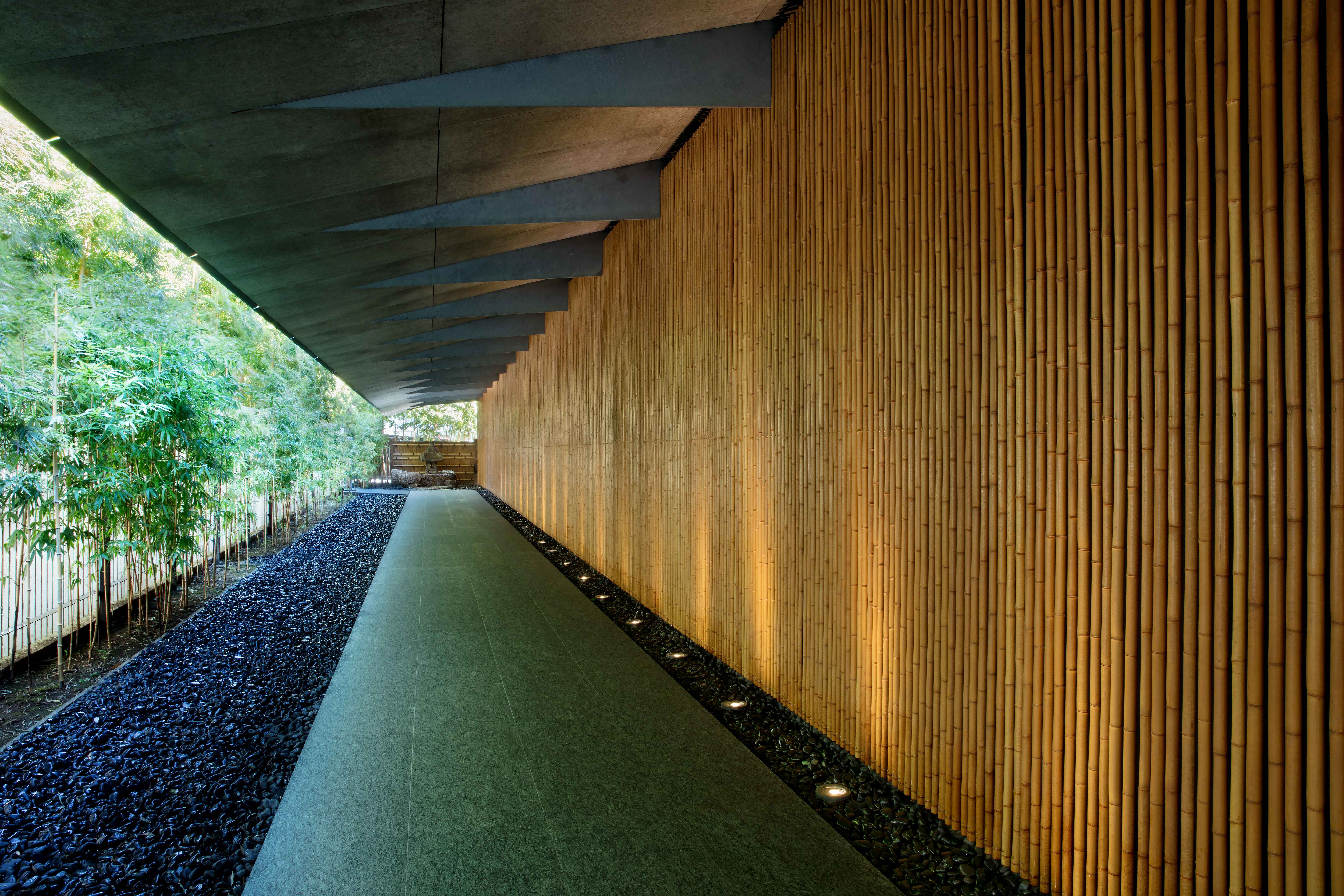
Yayoi Kusama Museum | Waseda
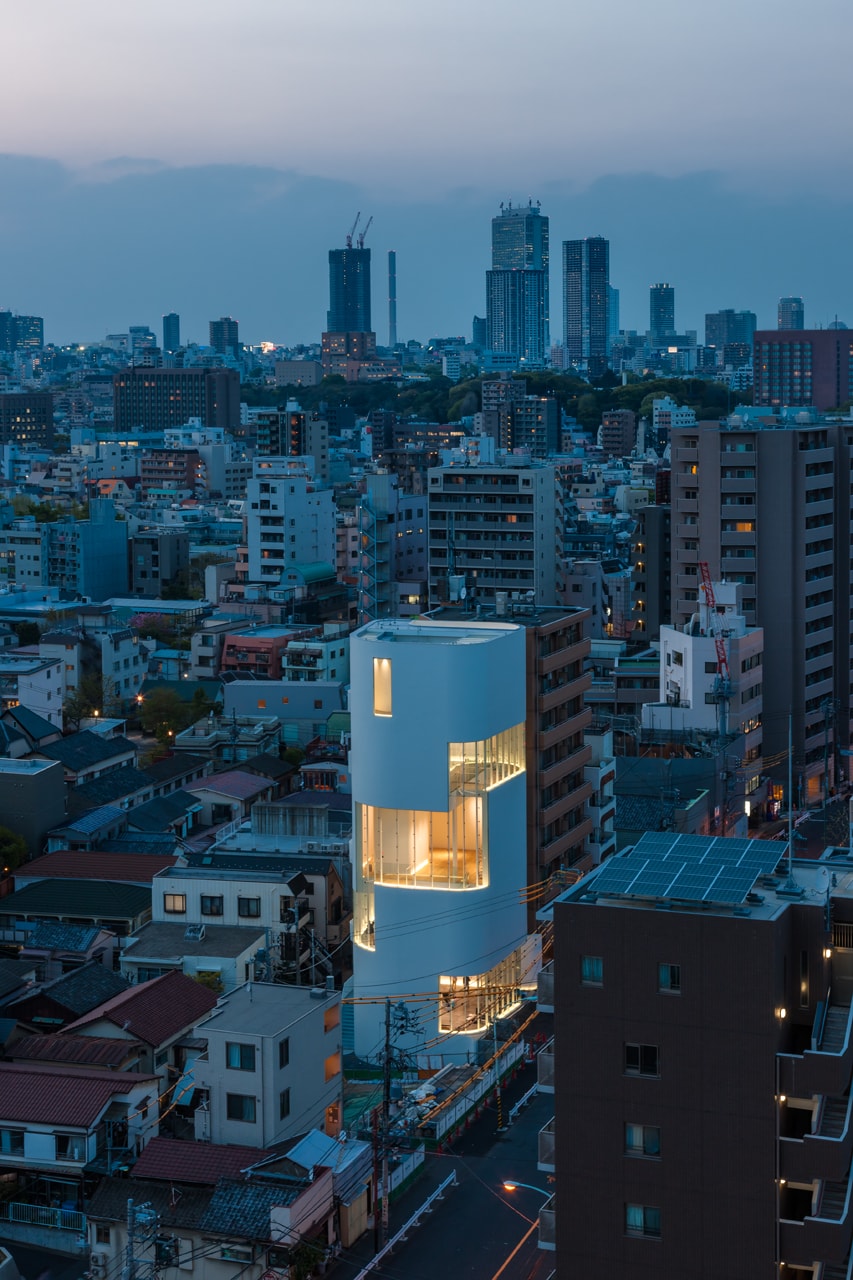
Espace Louis Vuitton Tokyo | Omotesando
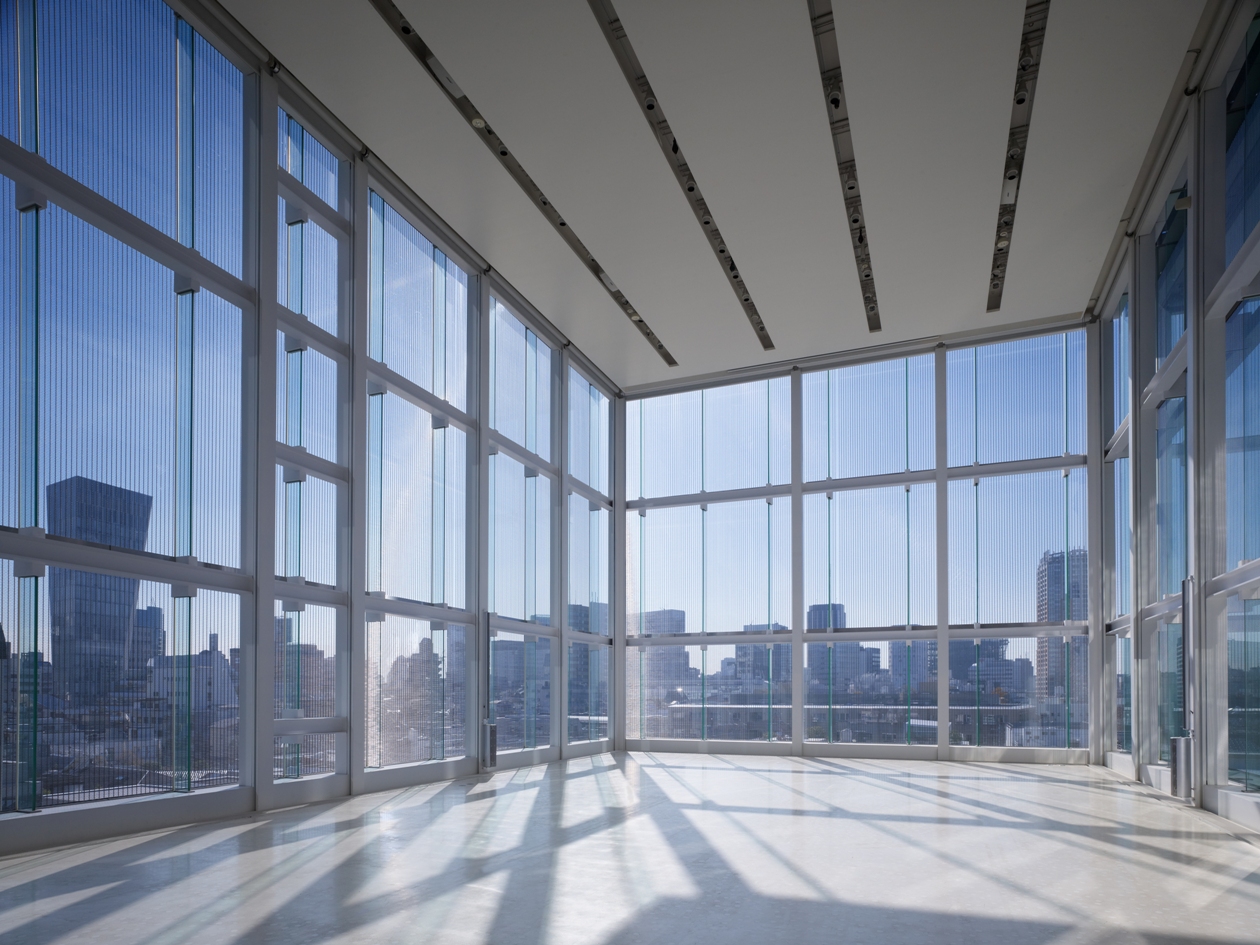
21_21 DESIGN SIGHT | Roppongi
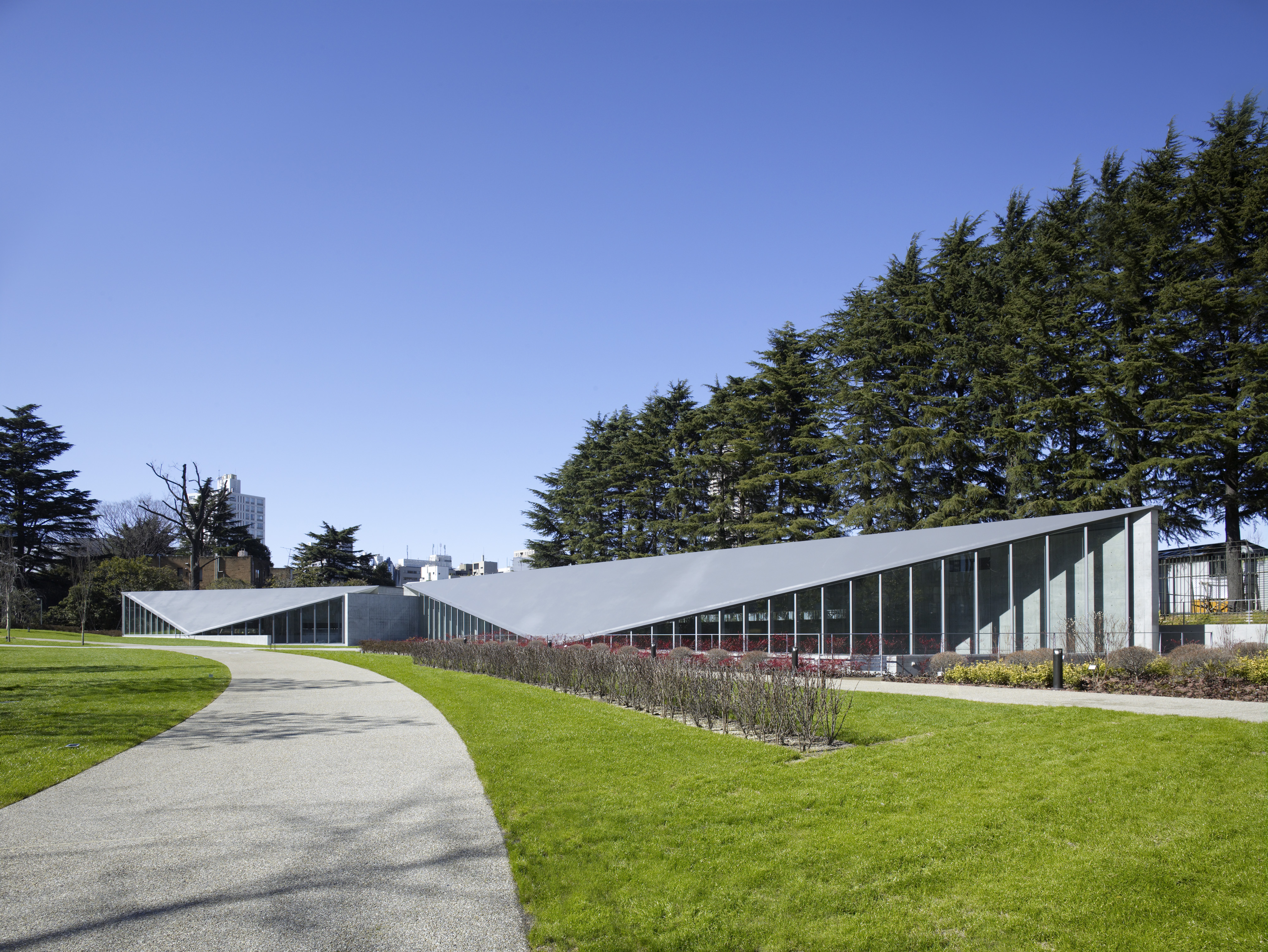
Tokyo Photographic Art Museum | Ebisu
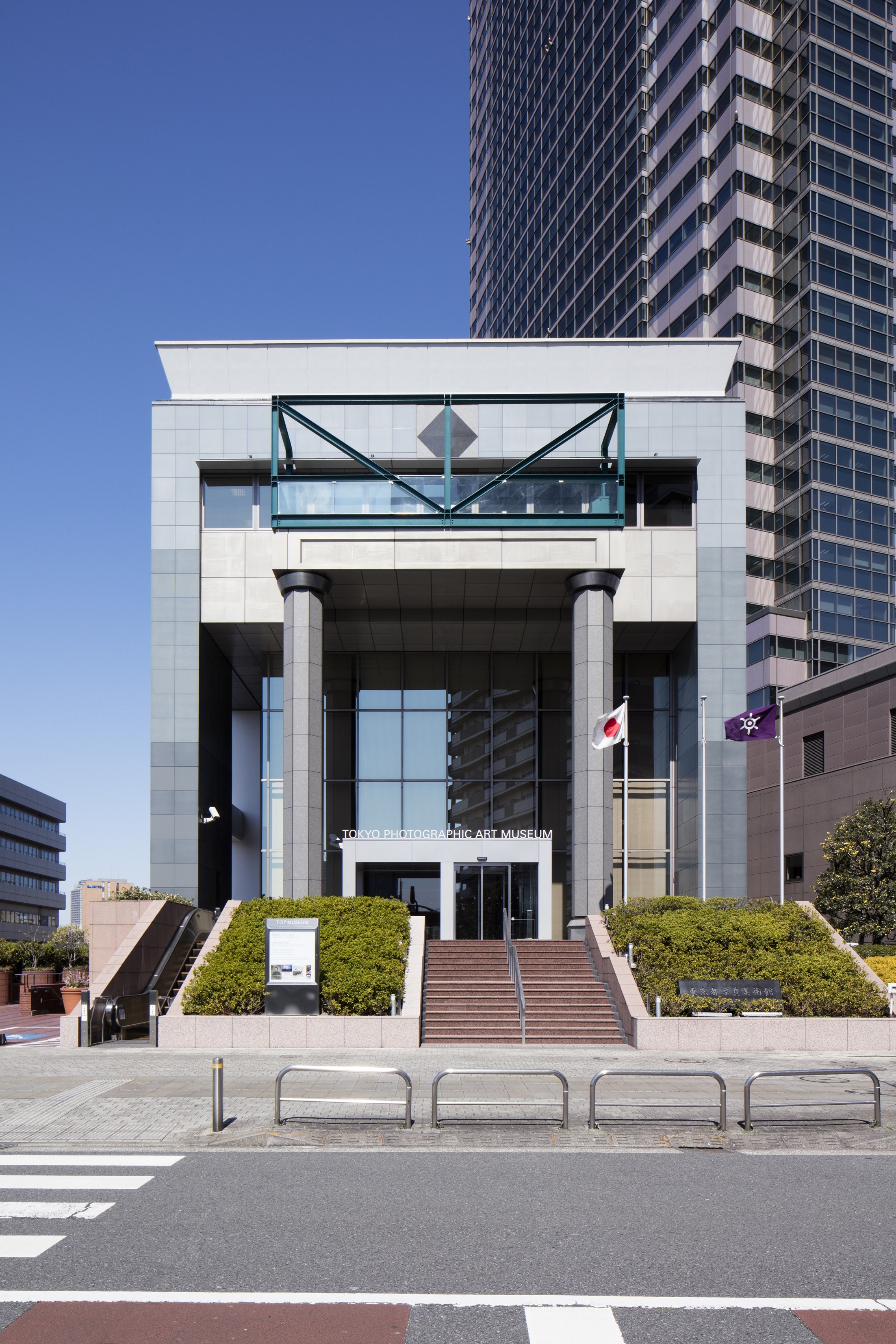
The National Art Center, Tokyo | Roppongi

Ginza Graphic Gallery | Ginza
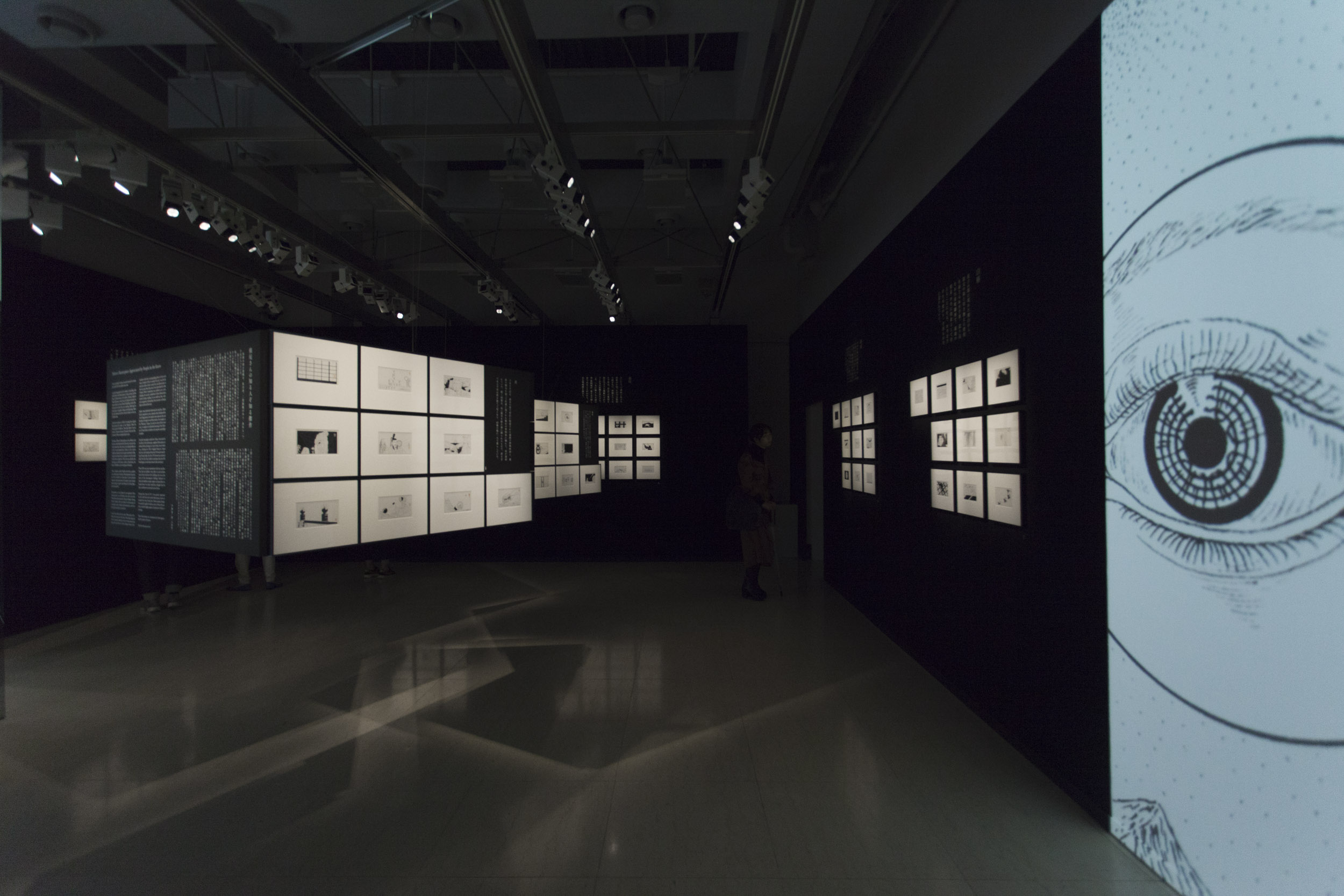
teamLab Planets | Toyosu
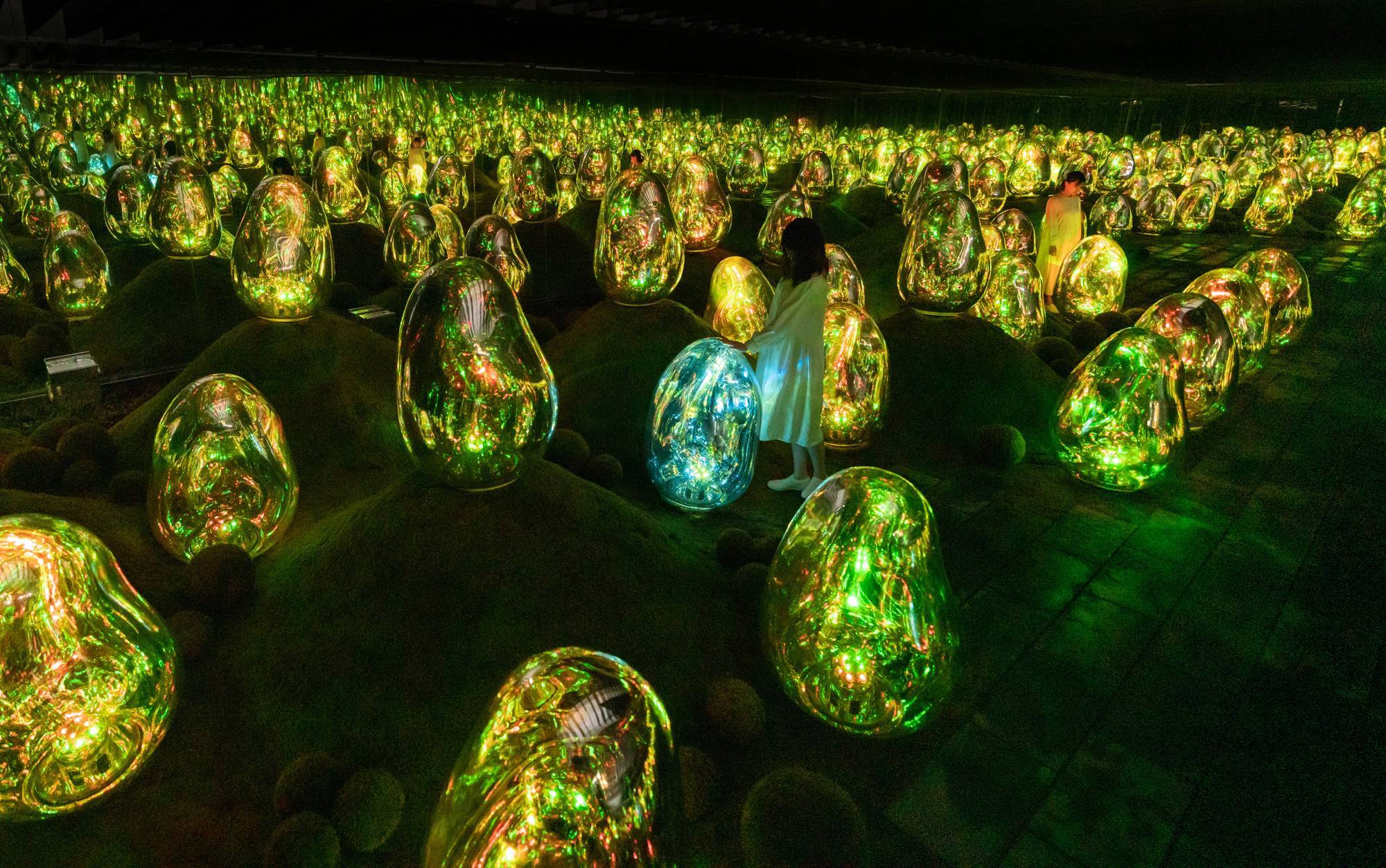
Intermediatheque | Marunouchi

Mori Art Museum | Roppongi
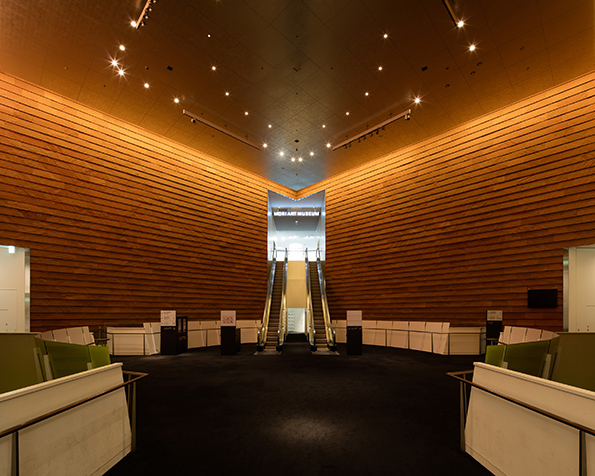
About Us Contact Terms of Use

Back to Top
THE 10 BEST Tokyo Literary, Art & Music Tours
Literary, art & music tours in tokyo.
- Cultural Tours
- Historical & Heritage Tours
- Literary, Art & Music Tours
- Up to 1 hour
- 1 to 4 hours
- 4 hours to 1 day
- 5.0 of 5 bubbles
- 4.0 of 5 bubbles & up
- 3.0 of 5 bubbles & up
- 2.0 of 5 bubbles & up
- Chinese (Simplified)
- Chinese (Traditional)
- Likely to Sell Out
- The ranking of tours, activities, and experiences available on Tripadvisor is determined by several factors including the revenue generated by Tripadvisor from these bookings, the frequency of user clicks, and the volume and quality of customer reviews. Occasionally, newly listed offerings may be prioritized and appear higher in the list. The specific placement of these new listings may vary.

1. Tokyo Studio Ghibli Museum and Ghibli Film Appreciation Tour

2. Private Ginza Architecture Walking Tour

3. Private 1 Day Tour to Mt Fuji and Hakone: Onsen, Arts and Nature

4. Manga Lesson with a professional Japanese Manga Artist in Nakano

5. Make your own BONSAI with a professional artist in Tokyo

6. Hakone Full-Day Private Tour By Public Transportation

7. Tokyo 6hr Instagram Highlights Private Tour with Licensed Guide


8. Guided Small Group Historical Tour in Asakusa

9. Asakusa Traditional Experience

10. Photoshoot with Professional Photographer in Tokyo

11. Anime Studio Experience

12. Tour with Pro Tokyo Photographer and take Edgy Unique Portraits

13. Shibuya House Disco Techno DJ Bars Experience

14. Private Ueno Park Architecture Walking Tour

15. Private Photography Tour in Tokyo with Kimono

16. Licensed Guide Walking Tour Featuring Club Warp Shinjuku, Tokyo, Japan

17. Japanese Calligraphy Experience with a Calligraphy Master

18. Asakusa: Live music performance over traditional dinner

19. Shimokitazawa Private Vintage Shopping Tour

20. Samurai Experience in Tokyo: Sword Training and Edo Indigo Dyeing

21. Tokyo Architecture and Contemporary Art Walking Tour with a local guide

22. Traditional Antiques Market Tour Tokyo

23. Tokyo Underground Music Scene Tour

24. Essential tour for fashion and art in Tokyo for 6 hours with local lunch

25. Samurai Night Jack in Shibuya

26. Half Day Anime Pilgrimage Walking Tour in Shinjuku

27. TeamLab Planets Walking Tour with Toyosu Fish Market Buffet Lunch

28. Lake Kawaguchi from Tokyo Bus ticket Oneway/Roundway

29. Tokyo Private Art Tour in Kagurazaka Shinjuku with Licensed Guide

30. Bonsai and Washi Museum visit in Tokyo
What travelers are saying.
- Tokyo Studio Ghibli Museum and Ghibli Film Appreciation Tour
- Manga Lesson with a professional Japanese Manga Artist in Nakano
- Make your own BONSAI with a professional artist in Tokyo
- A tour of record stores to encounter music from around the world
- TeamLab Planets Walking Tour with Toyosu Fish Market Buffet Lunch
- Context Travel Tokyo
- Otama Inari Shrine
- J-Rock Tours
10 Contemporary Art Spaces You Should Visit in Tokyo
A sprawling city with a robust appetite for contemporary art, there is certainly no shortage of galleries and museums to discover in Tokyo. With so much to choose from, Something Curated highlights ten must-visit art spaces in the Japanese capital.
Take Ninagawa
View this post on Instagram A post shared by Take Ninagawa (@takeninagawa)
Situated near Roppongi Hills, Take Ninagawa’s unassuming entrance belies its ambitious programme. The gallery, established in early 2008, has flourished under the directorship of founder Atsuko Ninagawa. Focused on promoting emerging Japanese artists within a cross-generational and international context, Ninagawa, formerly an independent curator in New York, sought to bring an NYC sensibility to Tokyo. Despite no longer being active in the US, her gallery continues to benefit from the international contacts she cultivated, consistently participating in the global art circuit as well as showing leading artists from around the world in Japan.
Mori Art Museum
View this post on Instagram A post shared by Mori Art Museum 森美術館 (@moriartmuseum)
Housed on the 53rd floor of Roppongi Hills Mori Tower, the Mori Art Museum is a globally oriented contemporary art institution. Showcasing visual art, architecture, and design, the museum offers a unique perspective on creative practices from around the world. Renowned for featuring works by prominent artists like Leandro Erlich and Bill Viola, the Museum’s initiatives also support art from the Asia-Pacific region, focusing on Japan and its neighbouring countries. Committed to accessibility, the museum oversees public art installations in Roppongi Hills and Toranomon Hills, along with collaborative art events in the local community.
Taka Ishii Gallery
View this post on Instagram A post shared by Taka Ishii Gallery (@takaishiigallery)
Taka Ishii Gallery was founded by Taka Ishii in 1994, and has since played a significant role in the Japanese and international art scenes, showcasing contemporary art by both emerging and established artists. Taka Ishii’s exhibitions programme has a dual objective of presenting international contemporary artists in Japan and providing a global platform for the art of emerging Japanese talents and contemporary masters. While rooted in photography, today, the gallery’s programme features works by represented artists across diverse media, including painting, sculpture and film.
Maison Hermès
View this post on Instagram A post shared by Designed to Last (@designed.to.last)
Crafted from specially made glass blocks and situated in Ginza, Maison Hermès was built between 1998 and 2001, designed by Renzo Piano with assistance from Bohlin Cywinski Jackson and Takenaka Corporation. At the eighth floor of the flagship store and corporate headquarters, there is a gallery space. This expansive, luminous gallery hosts three contemporary art exhibitions annually. In addition to a roof garden at the top of the building, there is also a recess, which divides the long facade into two, forming a courtyard that creates an access to the subway two levels below.
SCAI The Bathhouse
View this post on Instagram A post shared by SCAI THE BATHHOUSE (@scaithebathhouse)
Founded in 1993, over the years, SCAI The Bathhouse has hosted numerous exhibitions, and commissioned projects and public works. The gallery has championed leading artists, from Lee Ufan, a key figure in the Mono-ha school, to Toshikatsu Endo and Mariko Mori. Nestled in Yanaka, evoking old Tokyo’s charm, SCAI The Bathhouse is close by to Ueno’s vibrant arts district. Set in a historic 200-year-old public bath, the gallery welcomes visitors to a modern white cube space with a mortar floor and soft natural light, seamlessly balancing tradition and modernity through its architecture.
Yayoi Kusama Museum
View this post on Instagram A post shared by YAYOI KUSAMA MUSEUM (@yayoikusamamuseum)
Renowned Japanese artist Yayoi Kusama is celebrated for her avant-garde and immersive artworks. Born in 1929, Kusama gained international acclaim for her contributions to the Pop Art and Minimalist movements. Her distinctive style often features vibrant colours, polka dots, and repetitive patterns, with a focus on themes of infinity and self-obliteration. The Yayoi Kusama Museum in Tokyo is exclusively devoted to her work. Situated in the Shinjuku Ward in the western suburbs of Tokyo, the five-floor building was designed by the Japanese architecture firm Kume Sekkei. Completed in 2014 and inaugurated in 2017, the museum debuted with an exhibition featuring 600 of Kusama’s works.
Espace Louis Vuitton
View this post on Instagram A post shared by Fondation Louis Vuitton (@fondationlv)
The Fondation Louis Vuitton, a Paris based cultural organisation, curates an international art programme hosted in Tokyo as well as other locations such as Munich, Venice, and Beijing. Opened in 2011, Espace Louis Vuitton Tokyo is situated at the heart of Omotesando, atop the Louis Vuitton building designed by Japanese architect Jun Aoki. Since its inception, the striking glass-encased structure has hosted solo exhibitions by artists including Cerith Wyn Evans, Jesus Rafael Soto, and Christian Boltanski, along with group shows featuring works by artists from Finland, South Korea, India, and Japan.
Yumiko Chiba Associates
View this post on Instagram A post shared by Yumiko Chiba Associates (@yumikochibaassociates)
Established in 1998 as an artist management firm, Yumiko Chiba Associates has evolved into a gallery representing the estates of significant post-war Japanese artists such as Jiro Takamatsu, Masafumi Maita, and Katsuro Yoshida. The gallery also showcases artists from diverse generations, including Beat Streuli, David Shrigley, Ryudai Takano, and Chikako Yamashiro. Hosting solo and group exhibitions throughout the year, Yumiko Chiba Associates actively engages in international projects. In addition, the gallery is committed to art publication and critique, producing scholarly booklets that feature critical essays by curators and researchers.
WAITINGROOM
View this post on Instagram A post shared by WAITINGROOM (@waitingroom_gallery)
Founded in Tokyo in 2010, WAITINGROOM is dedicated to promoting and supporting progressive contemporary art across various mediums. The gallery collaborates with young, emerging artists navigating the balance between distinct perspectives and expressions. WAITINGROOM’s focus lies on the human presence in post-industrial society, encompassing social engagement, the connection with nature, cultural heritage, and the dreams that sustain faith in the world. The gallery fosters artistic creation through various programmes, including lectures and workshops, sparking dynamic discussions.
Kaikai Kiki Gallery
View this post on Instagram A post shared by Kaikai Kiki Gallery (@kaikaikikigallery)
In 2006, Kaikai Kiki relocated its headquarters from a small prefab studio in Asaka City to an urban office building in Motoazabu, Tokyo. Concurrently, the basement floor was transformed into a private viewing room for clients. In March 2008, it reopened as Kaikai Kiki Gallery, managing artists and selling artwork with the aim of instilling new social value into art. The gallery has hosted exhibitions for local artists and international figures like Mark Grotjahn, Matthew Monahan, Seonna Hong, and Friedrich Kunath. Kaikai Kiki Gallery continues to showcase artists globally, fostering connections between art and audiences through its unique programme. Feature image: Tsuruko Yamazaki, Red (Shape of Mosquito Net) , Installation view at Outdoor Gutai Art Exhibition Ashiya Park, Japan 1956. © Estate of Tsuruko Yamazaki. Courtesy of LADS Gallery, Osaka and Take Ninagawa, Tokyo
Rahel Stephanie Wants to Tell You About Indonesian Food
Rahel Stephanie is the Indonesian, London-based chef and food writing sensation behind the pop up brand Spoons, which she created, somewhat by accident, in 2019. Since then, she has flown. In April of this year, Stephanie released her debut zine, Pedas – a document devoted to the brand of Indonesian food culture she wants to share…
The Best Piece of Advice Painter Shaqúelle Whyte Has Ever Re...
Following his graduation from the Royal College of Art just last year, London based artist Shaqúelle Whyte’s career is on a rapid upward trajectory. His work was included in Hauser & Wirth’s major group exhibition, Present Tense, which ran until the end of April, and now he has a solo show open at Pippy Houldsworth…
Behind the Biennale: Yvonne Billimore and Jussi Koitela Want...
On the occasion of the 60th Venice Biennale — open now and running until 24 November 2024 — Something Curated continues its series, Behind the Biennale. Comprising a collection of essays from the curators of select national pavilions, the series offers first-hand perspectives on some of this year’s most exciting presentations. Following the curators of the National Pavilion of Saudi…
Stay up to date with Something Curated
teamLab Borderless: MORI Building DIGITAL ART MUSEUM, Tokyo
Borderless World
Light Sculpture
Bubble Universe / Microcosmoses
Future Park
EN TEA HOUSE
Sketch Factory
TEA HOUSE & SKETCH FACTORY

People understand and recognize the world through their bodies, moving freely and forming connections and relationships with others. As a consequence, the body has its own sense of time. In the mind, the boundaries between different thoughts are ambiguous, causing them to influence and sometimes intermingle with each other. teamLab Borderless is a group of artworks that form one continuous, borderless world. Artworks move out of the rooms freely, form connections and relationships with people, communicate with other works, influence and sometimes intermingle with each other, and have the same concept of time as the human body. People wander through the world, exploring with intention, creating and discovering a new world with others.
- Light Sculpture Highlight Video PLAY MOVIE
teamLab Future Park is an experimental educational project based on the concept of collaborative creation (co-creation). It is an amusement park where people can enjoy creating the world freely with others.
Make tea and a flower blooms inside the teacup. Flowers bloom infinitely as long as there is tea. The tea in the bowl becomes an infinite world in which the flowers continue to bloom. Drink in the infinitely expanding world.
Turn your own drawing into an item to take home with you. The fish you draw and bring to life in Sketch Ocean will be made into an original product such as a badge, hand towel, T-shirt, or tote bag. * Sketch Factory is located outside of teamLab Borderless.
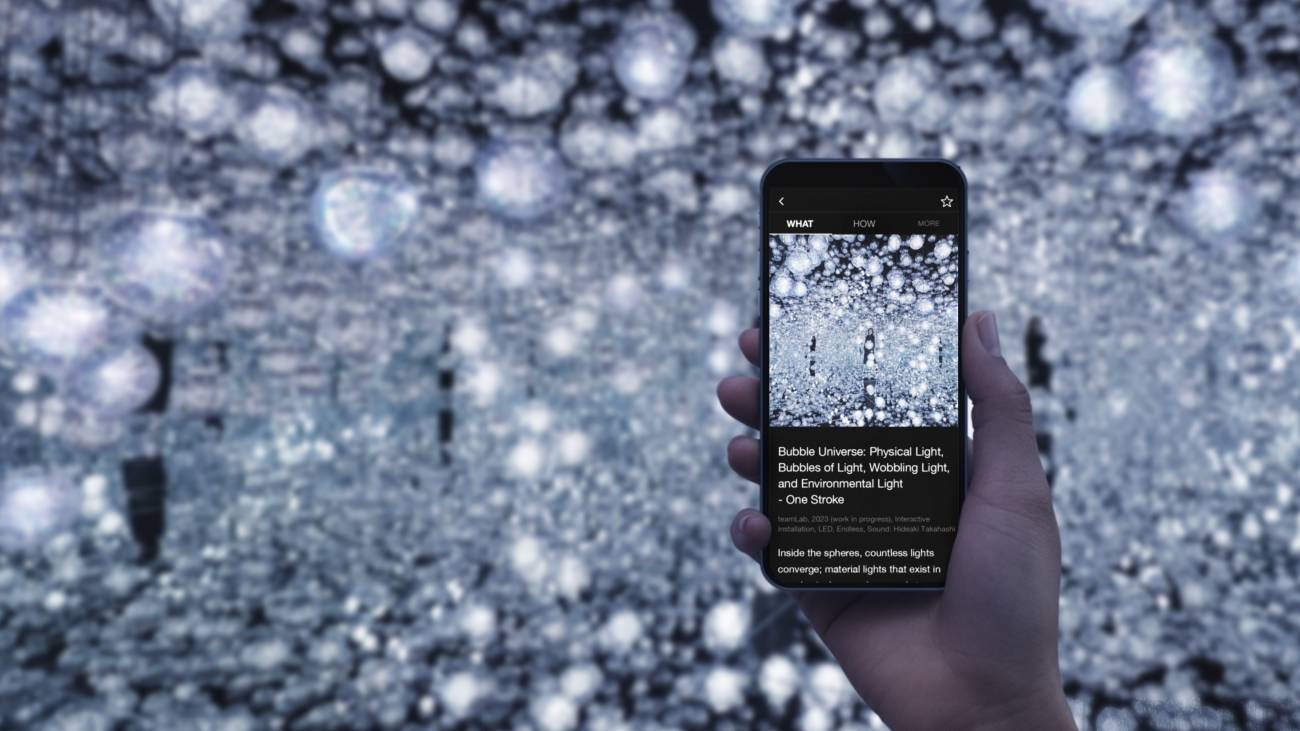
teamLab App
Learn There are no artwork captions in teamLab Borderless, because the artworks move across spaces. Use the app to read the artwork concept of the work closest to you. Learn in more depth, enjoy more. Participate You can participate in Infinite Crystal World through the app. Create the artwork, enjoy more. Avoid long lines Numbered tickets are issued via the app when the artwork space is crowded. The app will notify you when your time slot is approaching. Avoid long lines, and enjoy a smooth viewing experience.
Turn your own drawing into an item to take home with you. * Sketch Factory is located outside of teamLab Borderless
Venue Details
Azabudai Hills Garden Plaza B B1 1-2-4 Azabudai, Minato-ku, Tokyo Map of Azabudai Hills *Address for search in Google MAP 5-9-1, Toranomon, Minato-ku, Tokyo *There is no parking lot for the museum, so please use public transportation or the Azabudai Hills parking lot . Map
Address in local language: 麻布台ヒルズ ガーデンプラザB B1 東京都港区麻布台1-2-4
Regarding tickets
Will tickets be available on the day?
If not sold out, tickets can be purchased on the day of the event through the official ticket website. They can also be purchased on site, but at different prices. Tickets may be sold out.
Where can I buy tickets?
・Via the official ticket website Credit cards and PayPay are accepted.
Can I change or cancel the date of my ticket?
・In general, tickets cannot be canceled or changed once purchased. However, the date can be changed for tickets directly purchased from the official ticketing website. The date of the ticket may be changed up to 3 times. To do so, select 'Modify ticket date' displayed on the QR ticket and follow the procedure. Changes can be made up to 9:00 of the indicated date. The ticket date cannot be changed in the following cases: - The date has already been changed 3 times - Changing to a different type of ticket - Changing to date that has sold out or has insufficient tickets left - Changing the date for a portion of tickets within a multiple-ticket purchase - Changing to multiple dates within a multiple-ticket purchase - Changing to a date that is not yet available for purchase
Do I need to print my ticket?
1. If you own a smartphone, tablet, or similar device You do not need to print your ticket. Access the URL from your confirmation email and display the ticket screen at the entrance. 2. If you do not own a smartphone, tablet, or similar device Print your ticket from the "Print your ticket" button, available from 0:00AM of the reservation date.
Where can I view my purchased tickets?
Tickets purchased from the official ticket website can be viewed from the URL in your confirmation email (subject: teamLab e-ticket purchase completed). If you have not received this email, please contact us via the contact form here Please refrain from sending the ticket URL to third-parties.
What should I do if I haven't received the confirmation email?
If you haven't received your confirmation email, please consider the following cases: 1. The email has been filtered and stored in a folder other than your inbox. 2. The address @borderless-azabudai.ticket.teamlab.art is blocked on your server. In this case, please change your settings. Please contact us via the contact form if the above cases do not apply.
In the case of a group purchase, can ticket holders of the same group enter the exhibition separately by distributing the tickets beforehand?
Tickets can be distributed to other members of the group on the day of your reserved ticket. By doing so, visitors may enter the exhibition separately as long as they arrive at the time indicated on their ticket. To distribute tickets, select the ticket you would like to share from the “Share your ticket” button on the ticket screen. *Persons accompanying visitors with a Disability Discount ticket - please arrive together as a disability certificate will be requested upon entry.
Can I cancel the distribution of group tickets?
Yes, you can cancel the distribution of tickets from the "Modify shared tickets" option on your ticket page. The person with whom you shared the ticket will no longer be able to enter the exhibition, and an additional place will be available within the group reservation.
Regarding entry
Is re-entry permitted?
Re-entry is not permitted.
Can children (elementary school and below) enter by themselves?
Children (elementary school and below) must be accompanied by an adult who is 18 years old or above. There must be one accompanying adult for every fifth children, including children eligible for free entry.
Are there any admission limits?
Admission may be limited in some cases.
Will I have to wait before entering the exhibition?
During busy periods, you may be required to wait outside before entry.
Do I have to leave the museum before the next admission time?
There is no limit on how long you can stay in the museum after admission.
Can I bring a stroller inside?
No strollers are permitted. Please leave them in the luggage room.
Regarding the venue
Are there any restaurants, cafes, or vending machines?
There are no restaurants or cafes. Vending machines are available at the venue.
Are there any pamphlets (facility maps)?
teamLab Borderless is a world of art without boundaries, a museum without a map. No maps are provided so visitors can experience the art in line with this concept.
Are there any rest areas or nursing rooms?
There are two rest areas. There is no nursing room in the museum.
Are filming and photography allowed? Can I post them to social media?
Taking photos and videos, as well as posting them on social media are allowed. However, the following are prohibited: ・Use of monopods, tripods, selfie sticks and other auxilary equipment, as well as flash photography. ・Filming or photography for commercial purposes without prior consent. ・Other actions that may cause inconvenience to other visitors.
- By email General Inquiry Form
- By phone +81-(0)3-6230-9666(10:00 - 18:00)
- Media Inquiries Media Inquiry Form
- For Media Press Kit
Entrance Pass * Tickets for adults and visitors with disabilities are subject to a dynamic pricing system. Please purchase a ticket for the designated date/time upon checking the ticket price for that day. * +200 yen if purchased on site. * Official Sales Site are only available on the official ticket website and KLOOK
- Adults 18 and above JPY 3,800 〜
- 13 - 17 years JPY 2,800
- 4 - 12 years JPY 1,500
- 3 years and under Free
- Visitors with disabilities Tickets for visitors with disabilities are available for holders of a disability certificate and up to one accompanying person. One ticket per person is required for admission. JPY 1,900 〜
Premium Pass * Dates after June 1 are eligible. * This is a ticket for a specific date of admission. * There are no restrictions on the time of entry. Please come to the venue when you wish no later than the final entry time and line up in the entry line. Last entry is one hour before the museum closing time. * Have a cup of your favorite tea at the EN TEA HOUSE in the venue.
- Adult / Child JPY 10,000
- Official Ticketing Website Buy Tickets

- Organizers Mori Building Co., Ltd, teamLab
RECOMMENDED EXHIBITIONS
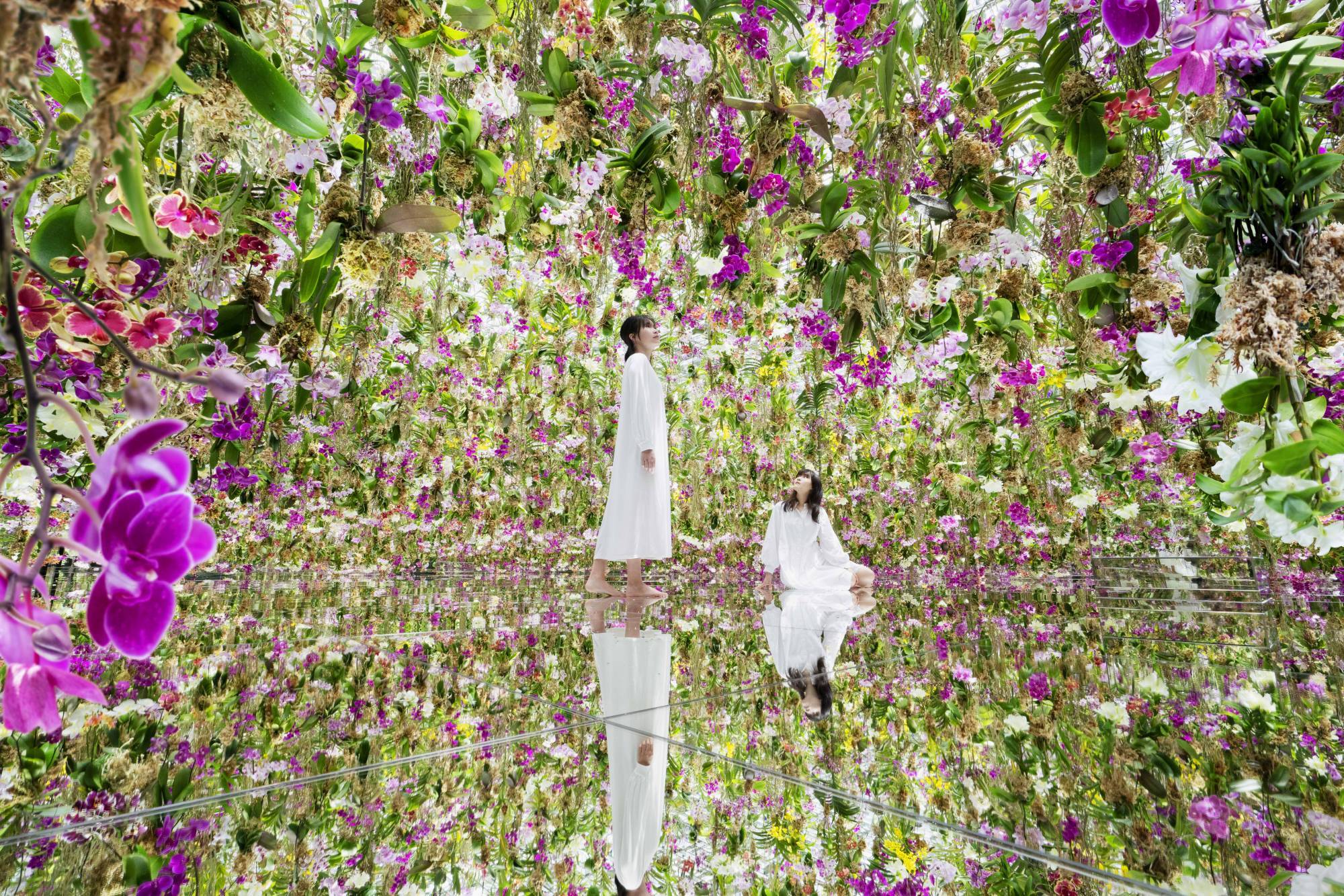
teamLab Planets TOKYO
July 7, 2018 - End of 2027
Toyosu, Tokyo
teamLab Museum

Galaxy & teamLab: Catching and Collecting in the Dinosaur Forest
April 08, 2023 - End Date TBD
Galaxy Harajuku, Harajuku, Tokyo
Solo Exhibition

MoonFlower Sagaya Ginza, Art by teamLab, Tokyo
Apr 01, 2017 - Permanent
MoonFlower Sagaya Ginza, Tokyo
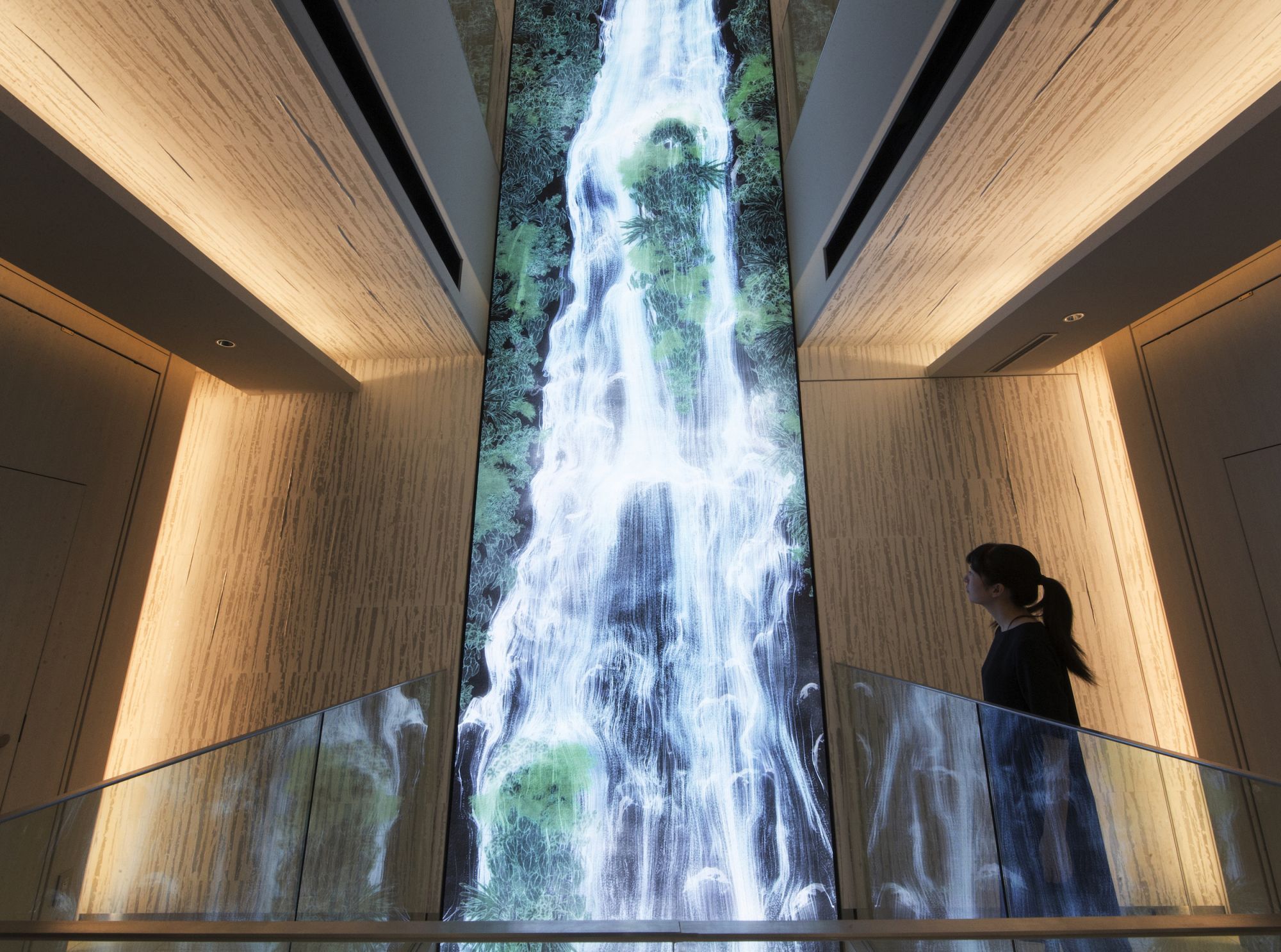
GINZA SIX, Tokyo
Apr 20, 2017 - Permanent
GINZA SIX, Ginza, Tokyo
OTHER EXHIBITIONS

teamLab SuperNature Macao
Jun 15, 2020 - Permanent
The Venetian Macao, Macao
Permanent Solo Exhibition
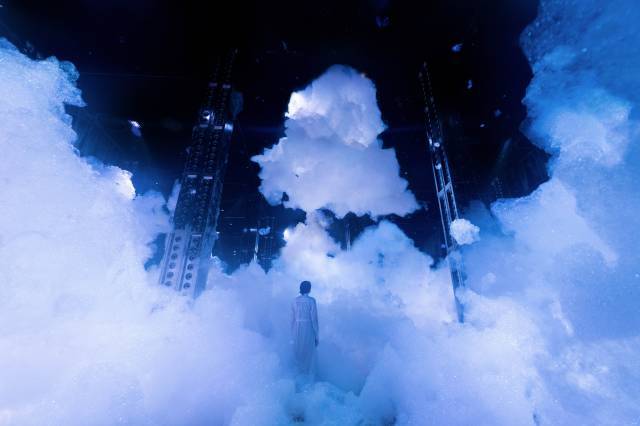
teamLab Massless Beijing
Dec 24, 2022 - Permanent
Chaoyang Joy City, Beijing

Tokyo Art & Culture Guide (Museums, Galleries, & More)
By: Author Jess Esa
Posted on Last updated: 8th December 2023
As the capital of Japan, Tokyo is steeped in a deep history of vibrant arts and culture which are still alive and popular today.
In the city, visitors can find everything from sumo matches and kabuki shows to see, a samurai museum and a variety of traditional art galleries to explore. Not to mention Disneyland and a host of wonderful and varied districts to get lost in.
Each area of Tokyo holds its own traditions and art scenes, and this art and culture bleed into the fashion, food, and architecture. There may not be a greater variety of arts and traditions to be found in a single city on Earth. Discover some of the unmissable spots while in Tokyo.

A Guide to Art and Culture in Tokyo
If you’re looking for incredible things to do around the rest of Japan then don’t miss this bumper article we wrote for Seeker. Each of the websites linked to has clear directions of how to get to the places mentioned but if you need any help, drop a question in the comments below!
You may also be interested in our Tokyo neighbourhood guide , full city guide , or our otaku guide to Tokyo.
Tokyo National Museum
This is the pinnacle of museums in Japan featuring everything that symbolises ancient Japan such as art, historical documents, and archaeological items. Totalling 110,000 items this beautiful museum found in Ueno Park is one of Japan’s oldest and most celebrated.
Opened in 1872, Tokyo National Museum is recommended for anyone who wants to learn more about and East-Asian culture and history.
Most of their exhibitions are fixed but they do have various seasonal displays so it’s always worth checking their website for more details. You’ll find several other museums right next door including the Natural History Museum if you want to carry on the education.
Read More : Books to Read Before You Visit Japan .

Tennozu Island Art Walk
This waterside neighbourhood was once derelict but after a huge drive to restore the area it has now become a bit of an art hub and features some of the best street art in Tokyo. By following the art walk trail you’ll be able to see everything this area has to offer.
Various pieces of graffiti are permanent fixtures but there’s always more being created making it a dynamic place to explore. Aside from the art, the area is surrounded by canals and is a unique and relaxed experience away from busy central Tokyo. You can walk there from Shinagawa Station.
Nakamise Shopping Street
A legendary street and one of the oldest shopping centres in Japan. This mix of 90 shops and stalls selling various Japanese souvenirs and antiques, some dating back to the Edo area, leads up to Sensoji Temple and dates back to 1688. Favourites include the vintage clothing stalls where you can pick up kimono and other beautiful Japanese style clothing.
Read More : 21 Unique Things to Do in Tokyo .
Studio Ghibli Museum
One of the most visited museums in Japan and a wonderful testament to the Japanese animation industry is the Ghibli museum .
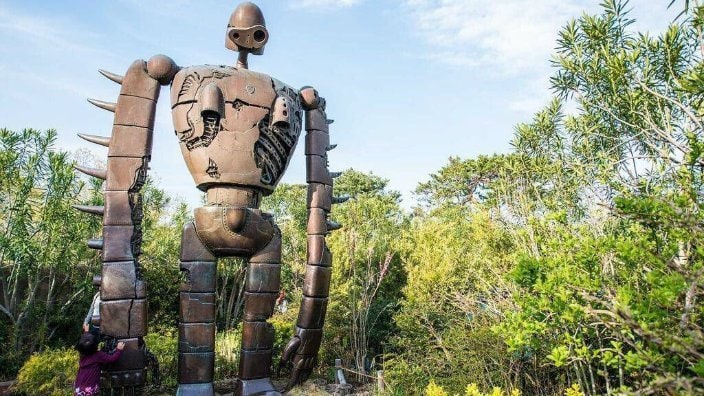
To fans, this place needs no introduction, but whether you’re a fan of Miyazaki and his films or not, there’s no better place to see the history of Studio Ghibli and watch the methods behind some of the most renowned animated films of all time: Spirited Away, Totoro, and Princess Mononoke (and many more). You can expect to see concept art, statues, animated shorts, and toys.
It’s worth noting that this museum is immensely popular and tickets have to be bought a month in advance, the easiest way being at the convenience store Lawsons or through a tour operator .
Tokyu Food Show
A small paradise beneath Shibuya station, located in the basement of Tokyu Toyoko Department Store, Tokyu Food Sho w is a collection of thousands of stalls and stores showcasing the best of Japan’s food, drink, and dessert culture.
It’s been called a ‘theatre of food’ and that is certainly an apt name for it. Here, shoppers can enjoy the full range of Japanese culinary delights: specialty foods and dishes from all over the country, all in one place. From chicken karaage and onigiri to fresh sushi and sashimi, there is something for anyone and everyone here.
Read More : The Ultimate Guide to Eating Sushi Like a Pro .
Taro Okamoto Memorial Museum
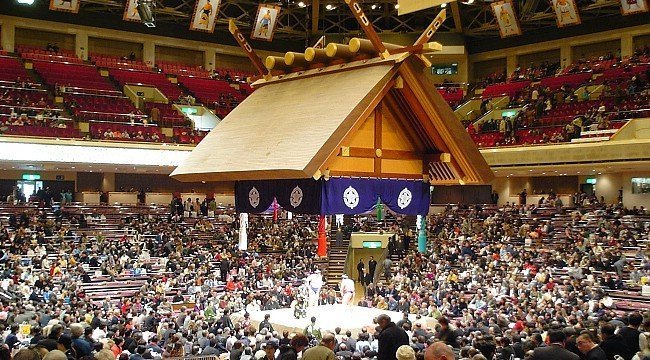
Taro Okamoto was a renowned Japanese painter of avant-garde style who passed away in 1996. Following this, his home was preserved in the form of a memorial museum . Here, visitors can see (and marvel at) not only his original paintings and sculptures, but also peruse his own personal workspace, allowing a rare glimpse into the life – both the workspace and living space – of a celebrated artist.
A glimpse like this one is rare and certainly an inspirational visit. The gift shop also offers Okamoto-related souvenirs and books to take home and enjoy.
Watch a Sumo Match at Ryogoku Sumo Hall:
To this day, sumo is considered the national sport of Japan and is certainly the most famous sport to come out of Japan. The goal, as most people will know, is for one of two combatants to unbalance the other and knock them out of the ring. The sport is an incredible sacred event with a deep cultural history, and tournaments are very frequent in Tokyo.
Ryogoku is the best place to see the big events, and the atmosphere is electric. The ceremonies at the beginning and end are enough the enthral audiences, and the matches are often short but intense. You can buy sumo tickets here .
teamLAB Borderless
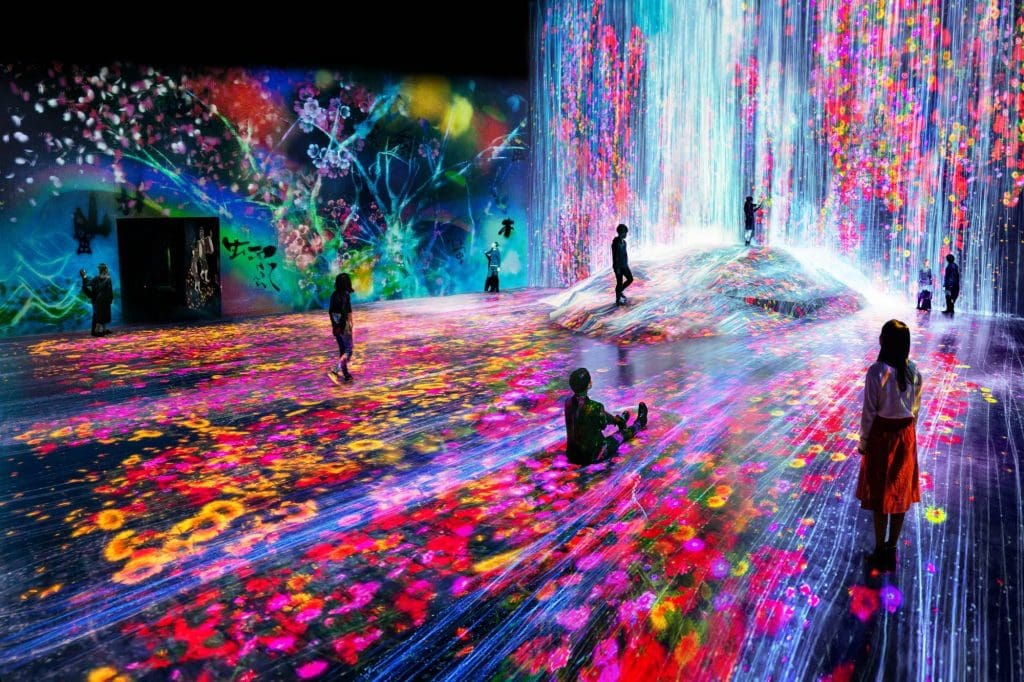
Borderless is an interactive and immersive art experience. Experience is probably the operative word here, as opposed to ‘exhibit’ or ‘show’.
Here you walk through and between rooms designed to react to your touch and movement. The art blends together and shapes itself around your experience, giving one the experience of living in another world, virtual or extra-terrestrial. It’s a truly spellbinding and unique experience. You can buy your tickets at the door, on their website or from here .
Tokyo Metropolitan Art Museum
Japan’s first public art museum , which opened in Ueno park in 1926. In addition to the special exhibitions and regular exhibitions, visitors can enjoy relaxing in the art lounge or restaurant. There’s a real range of styles here and it can take hours to get around the whole building.
Situated in Ueno Park, you can easily combine this with a stroll around the ground or one of the other museums there. You’ll find The Museum of Modern Art and The Museum of Western Art right next door.
Art Triangle Roppongi
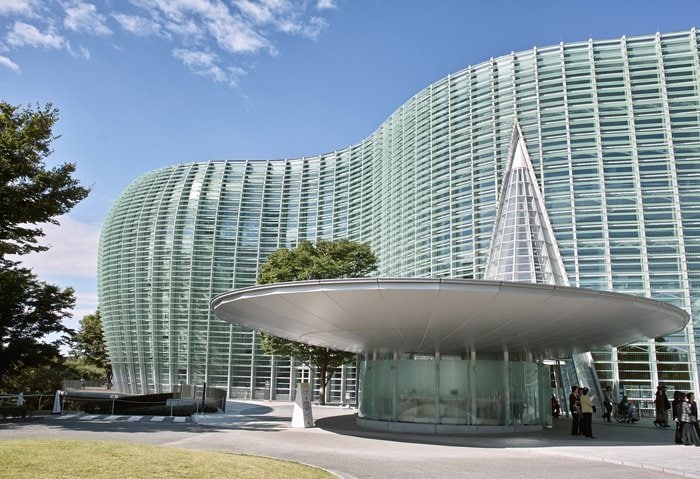
A triangle of museums including The National Art Cente, The Suntory Museum of Art which celebrates the idea of ‘art in life’, and the Mori Art Museum. Spend a day wandering the museums in Roppongi then enjoy the nightlife.
Edo-Tokyo Open Air Architectural Museum
An open-air architectural museum where structures such as old merchant homes and bathhouses can be viewed while enjoying nature walks.
A great way to take some olde worlde pictures while in Tokyo. This tour of the museum not only makes what you’re seeing a lot more relatable but also includes a Ghibli portion since many of the Edo style buildings in the museum inspired Miyazaki.
Tokyo Samurai Museum
Nestled in Shinjuku, the Samurai Museum is one of the most convenient and fun museums to go to while in Tokyo. Apart from learning about the history of the samurai, you see countless original samurai armour and weapons, see a short demonstration of fighting techniques and get to wear some of the armour yourself. The gift shop is also rather fun. You can buy tickets at the door or from here .
Where to Find Public Art in Tokyo
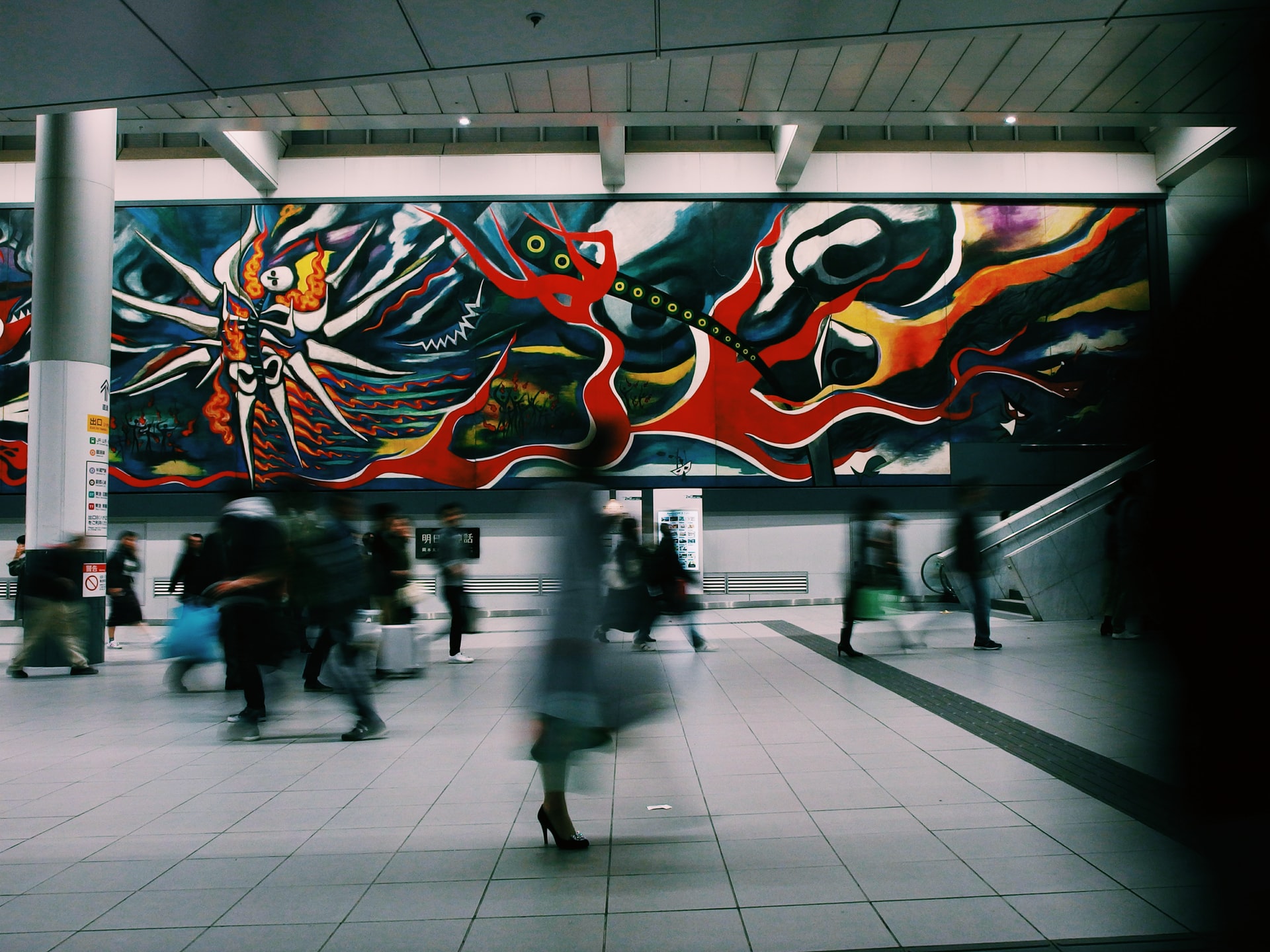
When you walk around in Tokyo , there is much to see wherever you look. Modern architecture is interspersed with sudden relics from the past, and depending on which area you are in you can still see old wooden constructions in areas like Yanesen while neighborhoods like Shibuya and Shinjuku are places of cyberpunkish beauty. But that is not all, as Tokyo is also a treasure trove of public art works. For those who look, there is a whole world of street art to discover. Let us take you to some of the best public art in Tokyo!
Koenji Mural City Project
Tennoz isle contemporary street art, the myth of tomorrow mural in shibuya, roppongi’s large spider, landmark public art in shinjuku, a mysterious cloud in kasumigaseki, tachikawa art in public, art tours in tokyo, other articles you might be interested in.
Koenji is located on the residential western side of the world’s largest metropolis, and among locals it is known as a local neighborhood with a hip and artsy vibe. Its status as a creative hub got a boost when the Mural City Project started in 2016. Seven street artists have lent their talents to make the area a whole lot more colorful with beautiful murals that are spread throughout the neighborhood. The artworks are vivid and lively, and they were created with various inspirational sources such as old Japanese folk stories or trips around the world.

Official website with maps
WIth a history as one of Edo ’s defence batteries and subsequently as an area of warehouses, Tennoz Isle used to be a rather grey and unpretty place. In the 1980s, however, a movement of development started that slowly turned the isle into a space where people can come to work, relax, and be entertained in a stimulating environment. Old structures were thankfully not all razed, and some of the warehouses were repurposed as office and restaurant space and as an art gallery. To further brighten up the area, street art installations were created and an Art Walk was born. Three contemporary works called 2005 Sasayaki, Work 2012, and Tap are located within a 5-minute walk from one another. The TERRADA Harbor One Building nearby is also very much worth a visit for those who are interested in original Japanese art supplies.
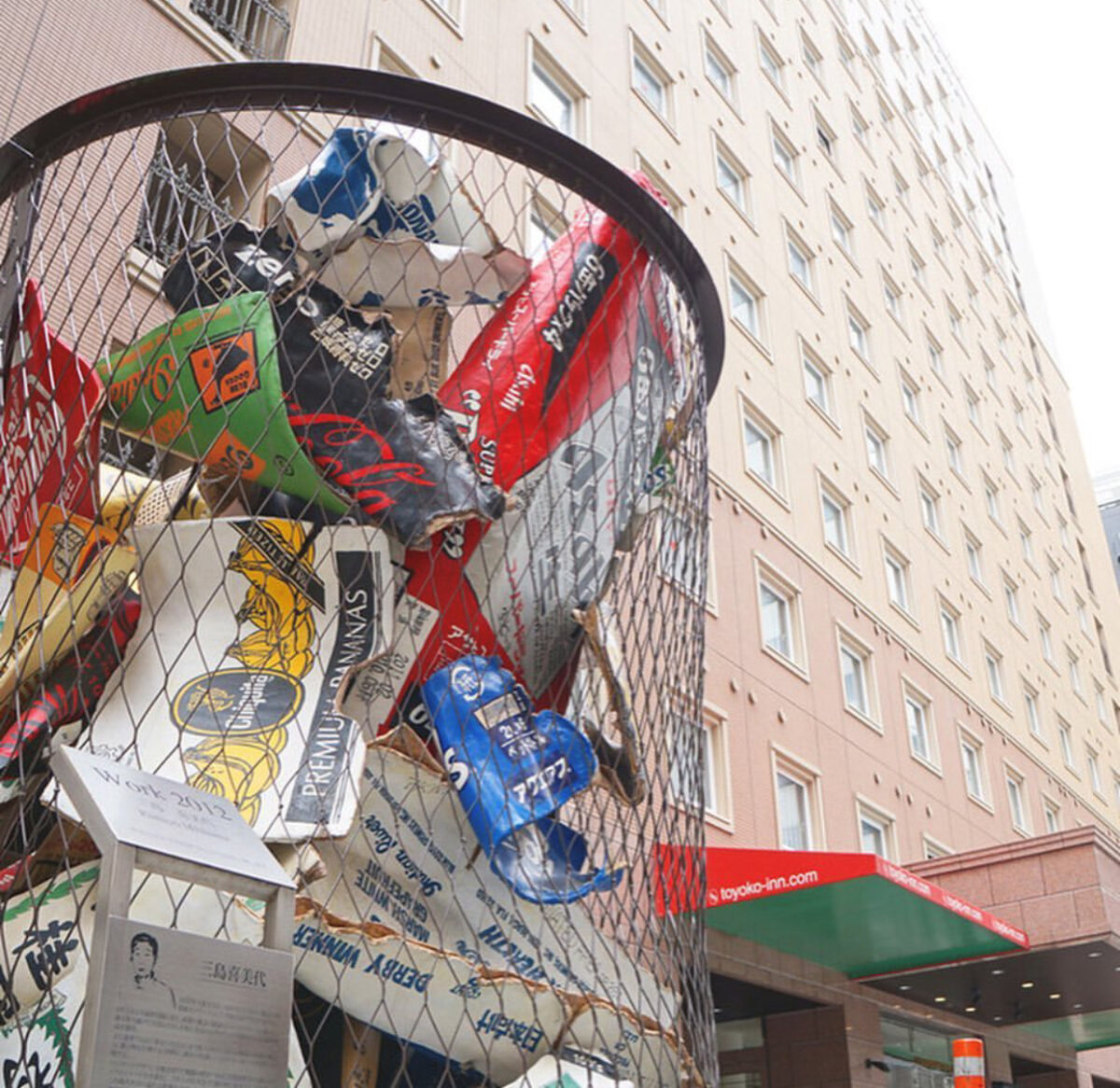
Official website of the Tennoz Isle Art Walk
Of course, most people come to Shibuya to experience the busy scramble crossing , go shopping, and see the statue and mural of loyal dog Hachiko. But most visitors don’t know about another interesting mural that is a bit hidden away in Shibuya Station. When you walk through the pedestrian overpass between the JR Yamanote line and the Keio Inokashira line, you will see a slightly ominous-looking 30-meter long mural on the wall. Surrealist artist Okamoto Taro made this artwork called ‘The Myth of Tomorrow’ in the 1960s with atomic warfare as its theme. After having been lost for decades, the artwork was found again, repaired, and installed in Shibuya in 2008.
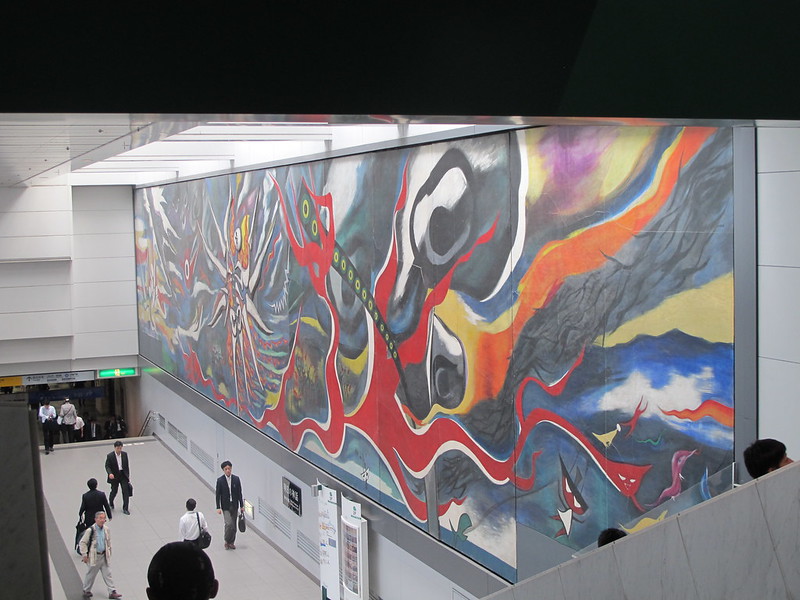
Roppongi is one of Tokyo’s cultural centers with the wonderful Mori Art Museum at its creative heart. On Roppongi’s busy streets you can find multiple works of public art. Look out for the child robots of Sakurazaka Park, the Kin no Kokoro golden heart in the Mohri pond, the ‘chair that disappears in the rain’ along Keyakizakadori, the Rose in 66 Plaza, and many more. Giant spider Maman by French artist Bourgeois deserves a special mention as the most famous work of street art in Roppongi. You can’t miss this more than 9-meter tall statue in Roppongi Hills that symbolizes the positive emotions of nurture, protection, and the weaving of new information, in spite of its slightly terrifying sight.
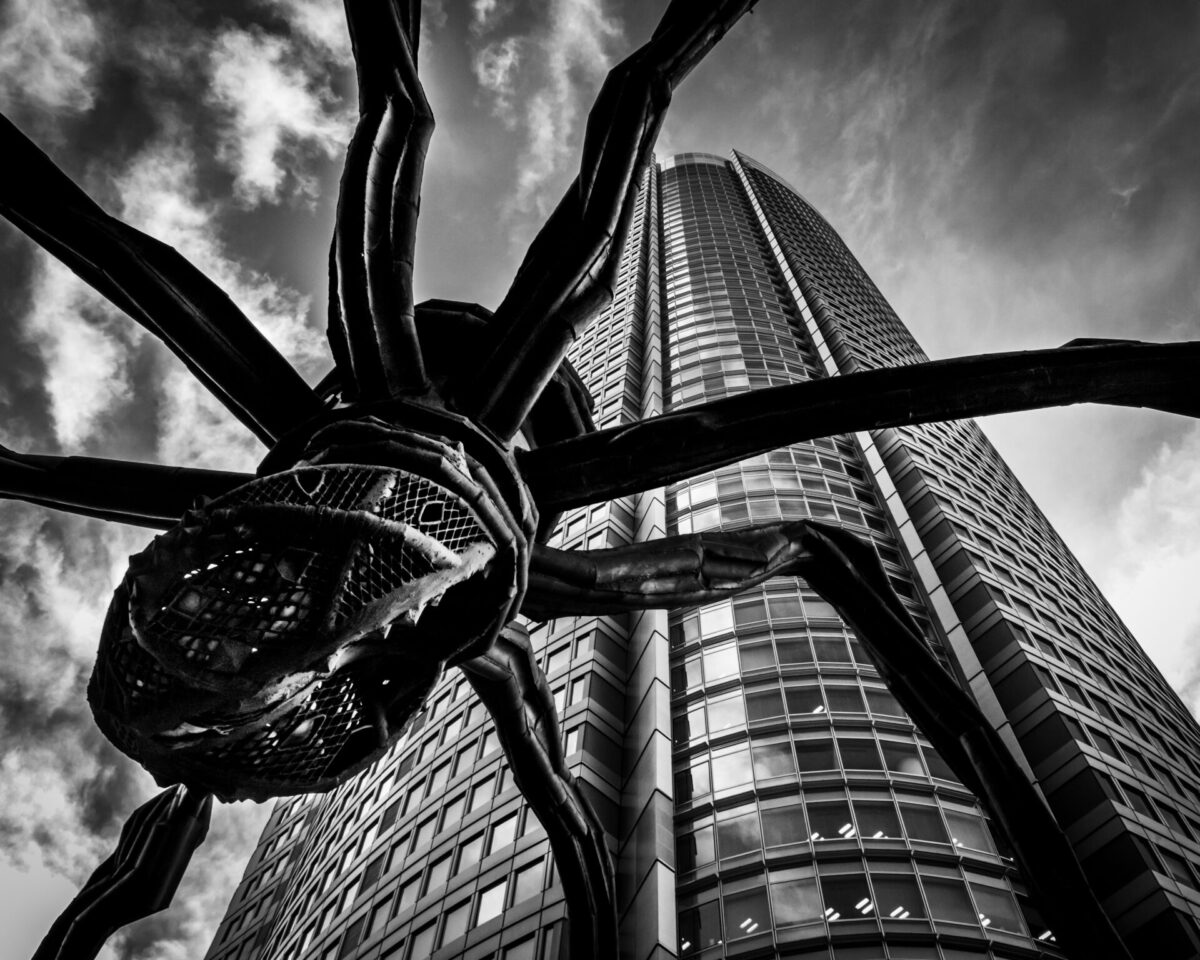
As Tokyo’s main night-time entertainment district, Shinjuku gets plenty of foot traffic every day and night. It is also a popular neighborhood to visit for tourists, who love to take pictures of the hustle and bustle while they are there. So it is no wonder that Tokyo’s version of Robert Indiana’s Love statue, which can be found in several large cities around the world, is located in Shinjuku. The red statue is a popular picture spot for couples and friends, and it is located in front of a building called Shinjuku i-LAND near Nishi Shinjuku Station. Another popular public art work is The Eye of Shinjuku, which has been sitting on a wall of the Shinjuku Station West Exit Underground Plaza since 1969 and has since become a symbol of modern Shinjuku. Artist Yoshiko Miyashita says that the colorful and moving eye looks at everything that flows in the modern world. Some people think it is a bit creepy, which gave rise to urban legends that say that a door near the eye leads to a secret room.
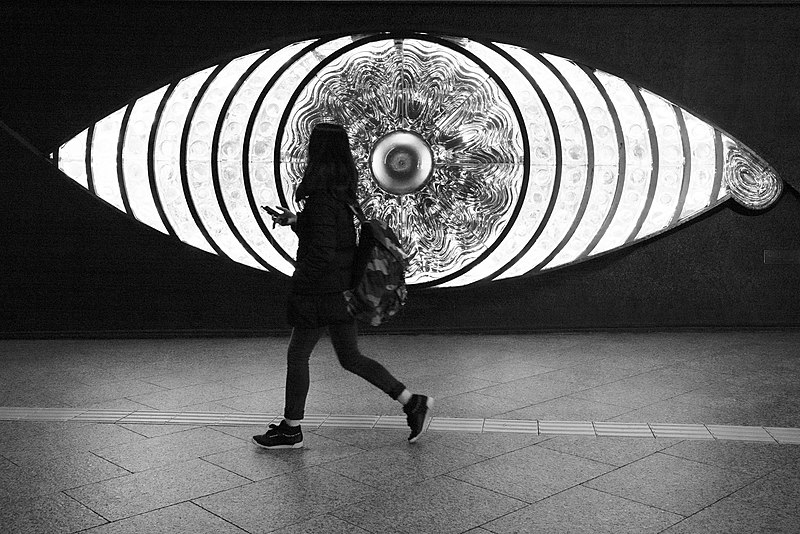
Kasumigaseki is not usually a neighborhood you would visit just for fun, as it is a rather boring district with many impersonal office buildings. It is where the government of Japan is seated, and there isn’t much else to do. There is, however, one good reason to make a quick stop in this otherwise boring part of Tokyo; a work called Cloud by contemporary Argentinian artist Leandro Erlich. Best visited at night when it looks most mysterious, this seemingly floating cloud in a box looks fascinating to even those who aren’t especially fond of modern art. It can be seen in the covered area in front of the Iino Building.
If you are going to Kasumigaseki to see the Cloud, you can just as well also stop by nearby Toranomon, a bustling business district with many nice local restaurants . The Mori Art Museum supervises a 10-meter large sculpture that is seated in the Oval Plaza garden by artist Jaume Plensa. He is famous for works that have a deep conceptual meaning, and this work in Tokyo, which is called Roots, is no different. The statue that consists of many winding lines represents 2 human figures standing close together, and it symbolizes the bonds that tie humanity together and the new cultures that emerge around Toranomon area now the area has been redeveloped.
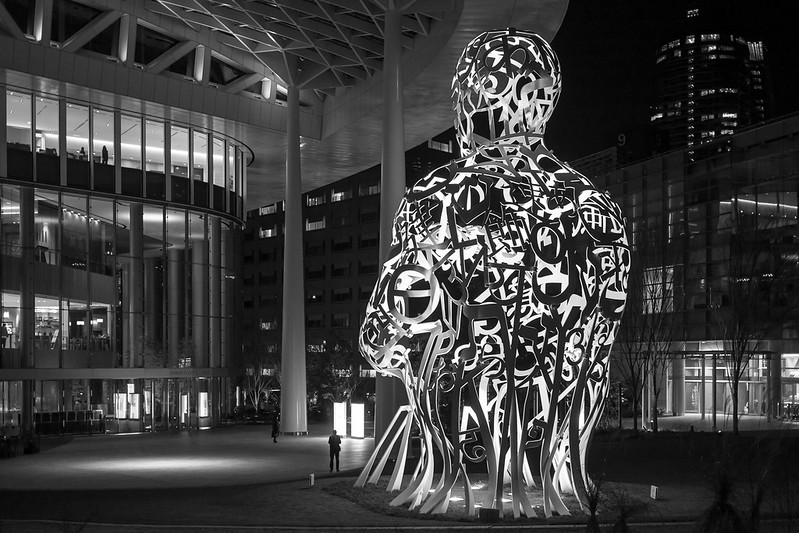
Not far from the New Otani Hotel , which is located in the very middle of central Tokyo, you can see the new luxury development Tokyo Garden Terrace Kioicho. In the foreground, the beautiful former residence of Yi Un, who was a Korean prince and an army general of the Japanese Imperial army, is still standing. There are several public art objects around the area with the White Deer by Kohei Nawa as one of the most outstanding works. It was inspired by deer , who are regarded as sacred animals in Japan for being messengers of the Shinto gods .
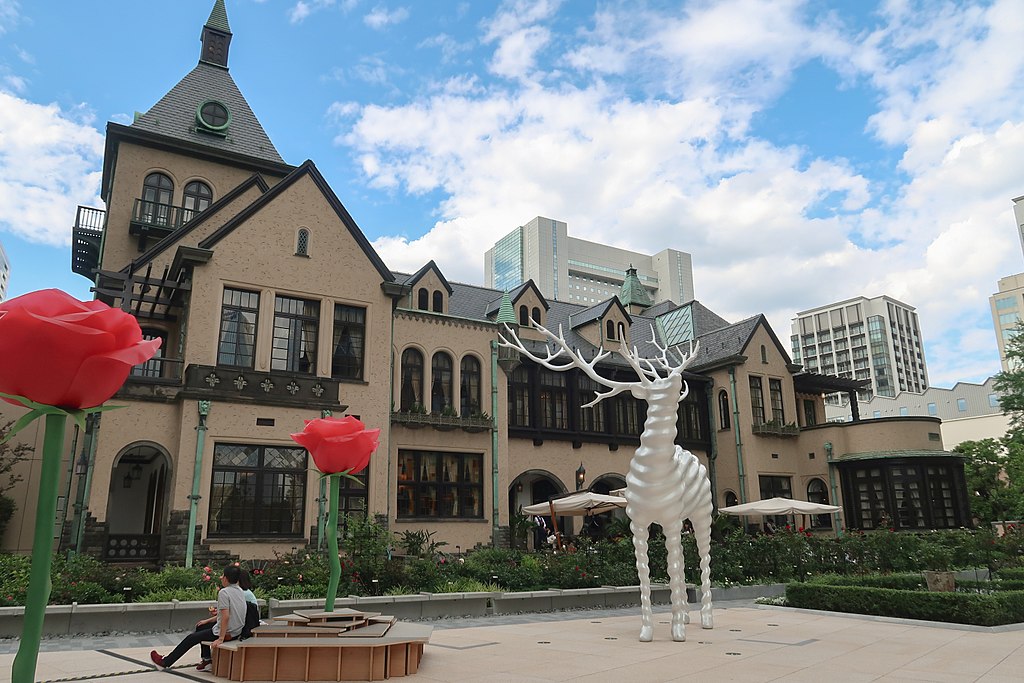
For this one you will have to travel a bit further from central Tokyo, as Tachikawa is located around 30 kilometer west of Shinjuku. The convenient JR Chuo line, however, makes it an easy 24-minute direct ride to Tachikawa station if you take the train. Art project FARET Tachikawa is only a short walk from the station. There are 109 works of 92 artists displayed in and around buildings that contain a hotel, a department store , a library, and offices. A lot of art works are not just art but also useful objects for the space such as benches, ventilation ports, and streetlights.

Official website of FARET Tachikawa
While it can be fun to go in search of public art in Tokyo by yourself, especially if you are new to the city and not in the know about art in Japan, it can be rewarding to book a private guide. As private tours can be customized to fit your interests, the guide can build an itinerary around your personal interest in art and architecture if so desired. We offer half-day and full-day customized tours in Tokyo. If you let us know upon booking about your interest in art, we will match you with the best guide.
Follow us on Instagram , Facebook and Twitter for more travel inspiration. Or tag us to get featured!
Happy traveling!

Stefanie Akkerman moved from the Netherlands to Japan in 2013 with her Japanese husband and son. She jumped into the niche of Dutch tour guiding in Tokyo and Kamakura in 2015 and occasionally writes articles about all the great sights and activities Japan has to offer. She loves (Japanese) food, and to work that all off she goes diving, snorkeling, cycling, or hiking.
This post contains some affiliate links. When you click through and make a purchase we may receive some commission, at no extra costs to you.
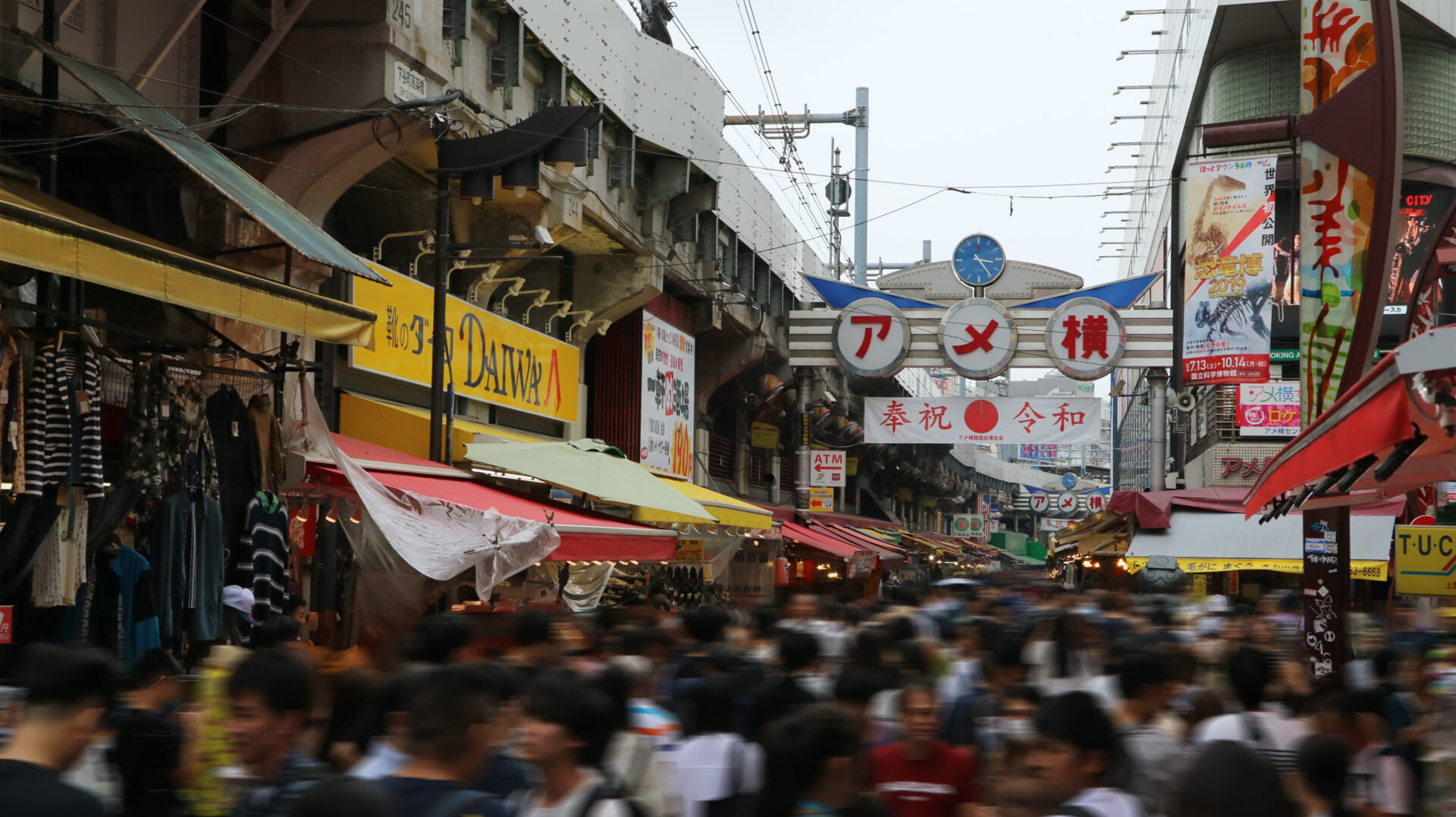
- Popular destinations
- Hidden places in Japan
- Tours and workshop
- Food and drink in Japan
- Itinerary in Japan
- Places to visit in Tokyo
- Food and drink in Tokyo
- Seasonal events
- Tours & workshops
- Tokyo This Week
- Day trip from Tokyo
- Itinerary in Tokyo
- Places to visit in Kyoto
- Food and drink in Kyoto
- Itinerary in Kyoto
- Day trip from Kyoto
- Travel tips
- Accommodation
- Cultural tips
- Transportation
- Tokyo Tours
- Kyoto Tours
- Kimono Rental
- Fukushima Tours
- Mount Fuji Tours
- Tour Package
- Media Kit(English/日本語)
- +61 7 3368 1966
Home / Small Group Tours /
2025 Garden and Art Tour of Japan
Top tour highlights.
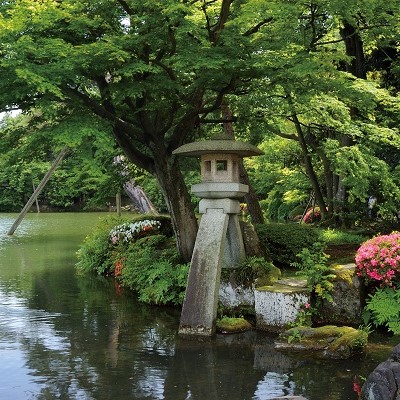
Most awarded Japanese gardens like Kenroku-en and Koraku-en
Learn the breath and depth of great Japanese gardens and their styles from your expert guides
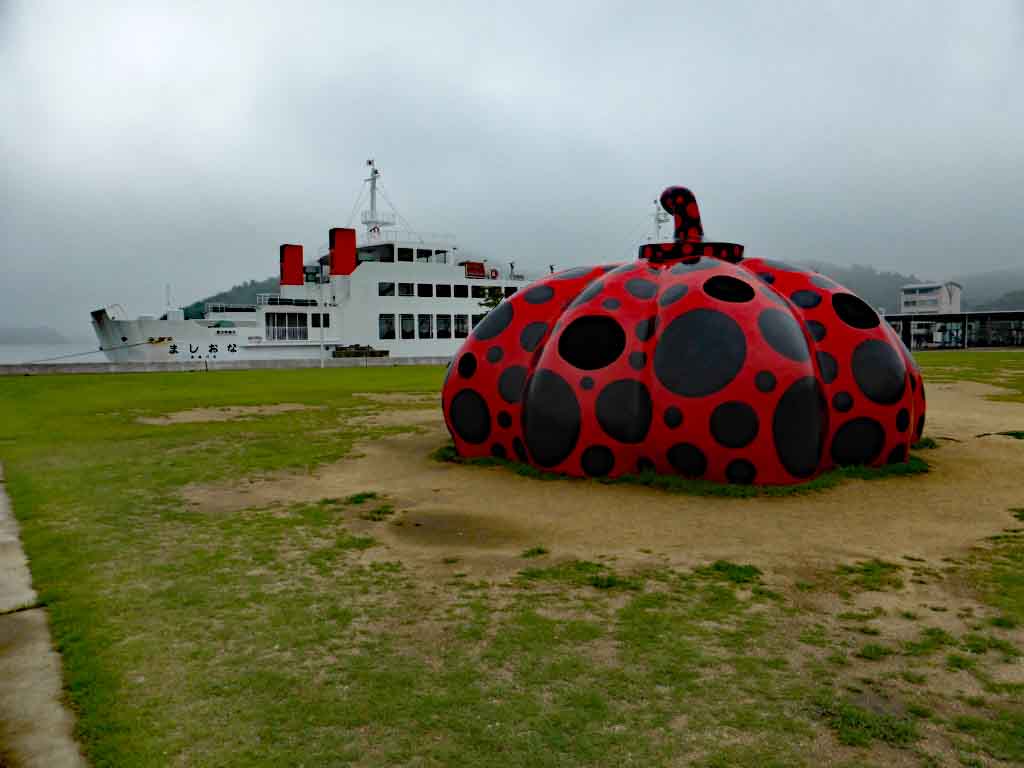
Overnight on Naoshima
Be inspired by the contemporary art works on the magical Naoshima Island
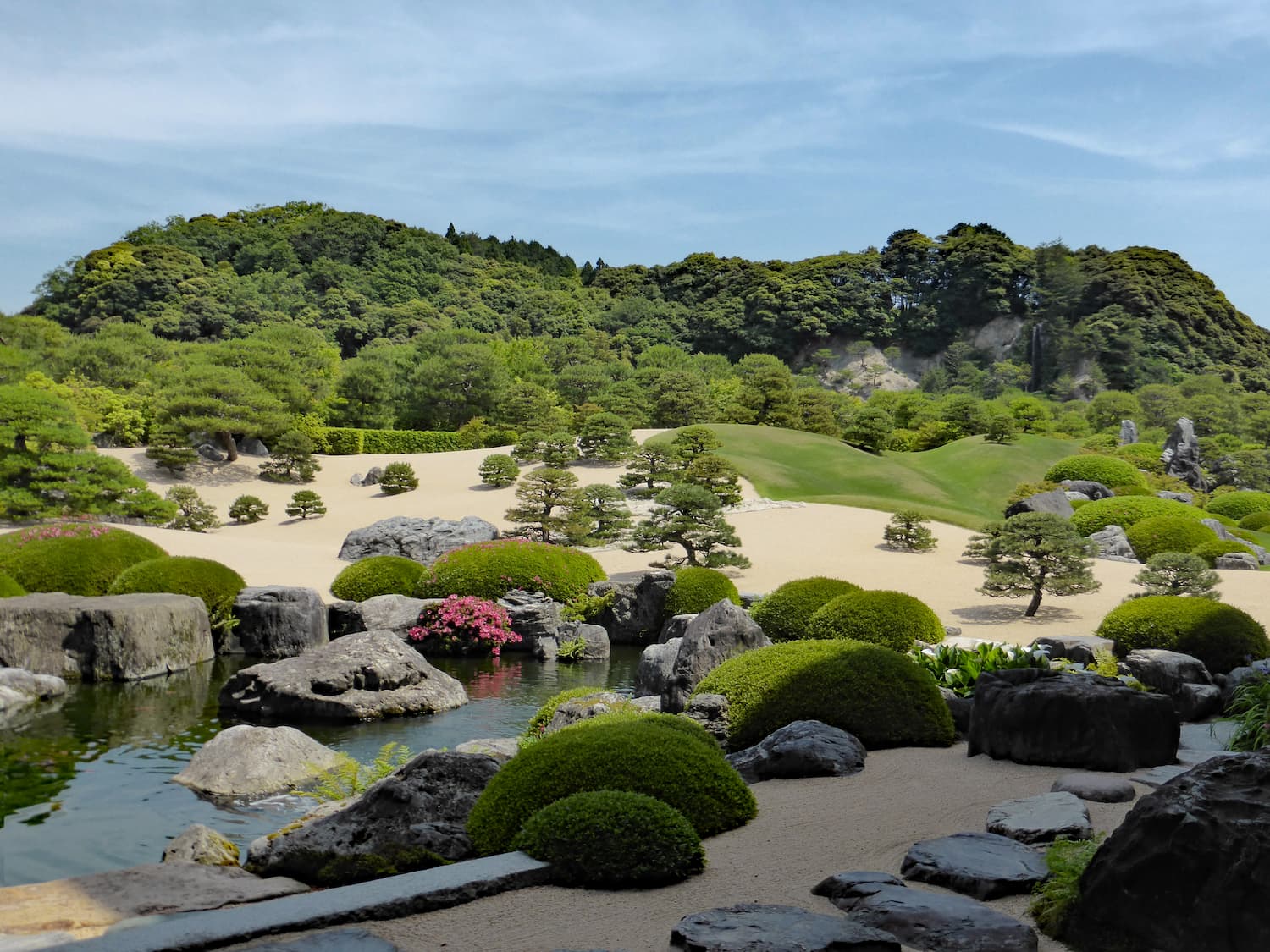
Internationally acclaimed art museums such as Adachi Art Museum and Miho Museum
Adachi Museum of Art was awarded best Japanese garden for 17 consecutive years
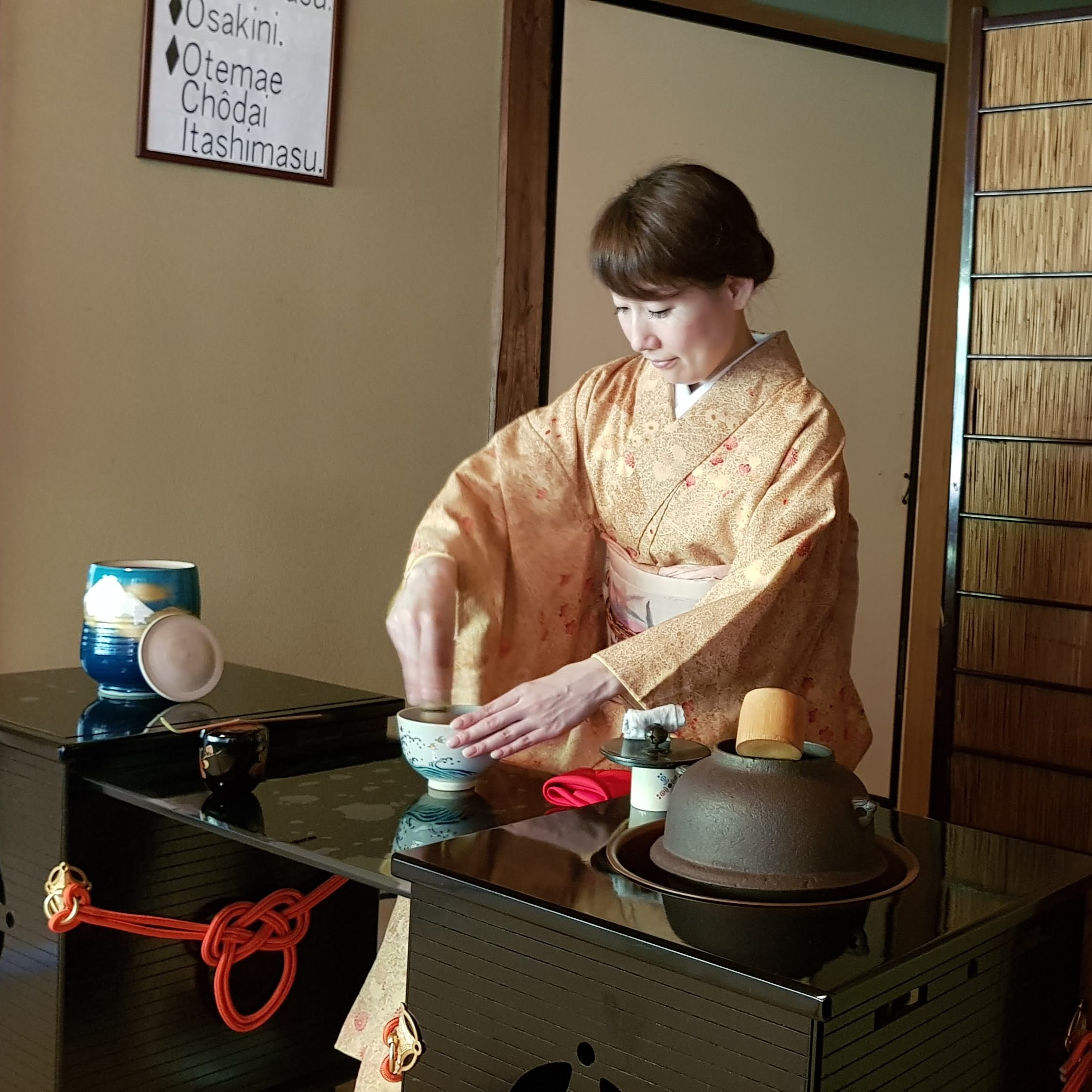
Cultural experiences such as tea ceremony
Join in hands-on cultural experiences of bonsai workshop and tea ceremony
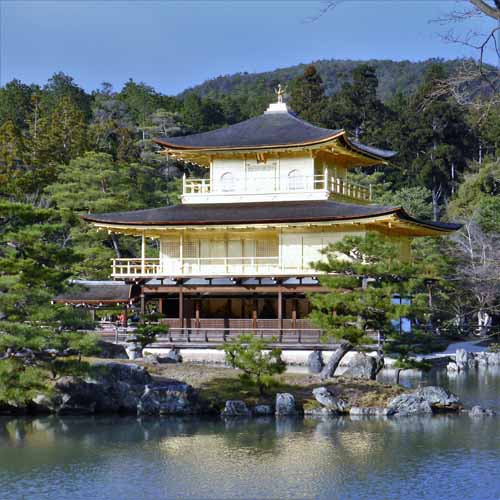
Ancient capital Kyoto
Be charmed by the ever so popular Japan's old capital Kyoto and its iconic sites such as Kinkakuji, Golden Pavilion
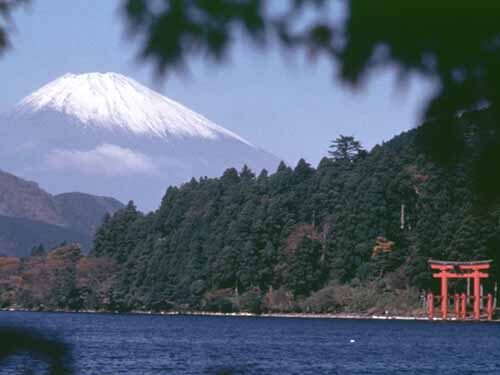
Mt Fuji in Hakone
Relax at a resort town of Hakone and enjoy onsen hot spring bath overlooking Mount Fuji
Tour Overview
The 2025 Garden and Art Tour of Japan visits a selection of the wonderful Japanese gardens and international standard art museums. The 15-day tour will give you a great grounding of Japan, as you visit Tokyo, Hakone, Kanazawa, Okayama, Kurashiki, Bizen, Naoshima and Kyoto on your way to exploring the world of garden and art both traditional and contemporary. The tour also includes a variety of accommodation and food styles along with excellent cultural experiences which are the main attractions of people visiting Japan.
The tours take place in May and October – ideal times of year to visit Japan. The weather is typically warm and sunny, and the gardens are at their best. The tours are not designed specifically for horticulturists or garden experts (though always welcome), but rather for general lovers of gardens and art who want to explore Japan and learn more about its deeply fascinating culture.
*From 2025 all our 8-member Small Group Tours will have guaranteed departure from 2 guests.
Welcome to Japan! On arrival at Narita or Haneda International Airport , you will be met by a Journey to the East guide and escorted to your hotel by public transport.
Today is an arrival day for this small group journey and no group program is scheduled. Your hotel is located right in the middle of Tokyo near the glitzy Ginza . Why not take a stroll, relax and be ready to start the first full day of your 2025 Garden and Art Tour of Japan .
*Many of our guests arrive a day or so early to settle in before the tour starts. We can try arranging your additional nights accommodation in the same room as the tour.

After meeting your guide and fellow travelers at hotel lobby, your Japanese garden and art adventure starts.
This morning, you will firstly visit Hamarikyu Garden , Tokyo's pre-eminent Japanese garden. It was built by the ruling Tokugawa family during the Edo era in the 17th century, and remodeled as a public garden and opened to the public in 1946. There are many points of interest including an impressive 300-year-old pine tree very carefully pruned over the centuries into an impressive weeping expanse.
After strolling the relaxing garden, you catch a suburban train northwest, to arrive at suburb of Omiya in Greater Tokyo. Visiting an outer suburb away from the central Tokyo is an interesting experience in itself seeing how ordinary Japanese people live.
After the visit to the Omiya Bonsai Museum , an opportunity opens up where you can learn more about the art of bonsai, the care and preservation of these beautifully manicured miniature trees, and creating your own bonsai in the friendly bonsai workshop . (*You can't take it home for biosecurity reasons, but the skills are yours to keep.)
Tonight's "Welcome to Japan" dinner is at a modern Japanese restaurant with a great night view of Tokyo.
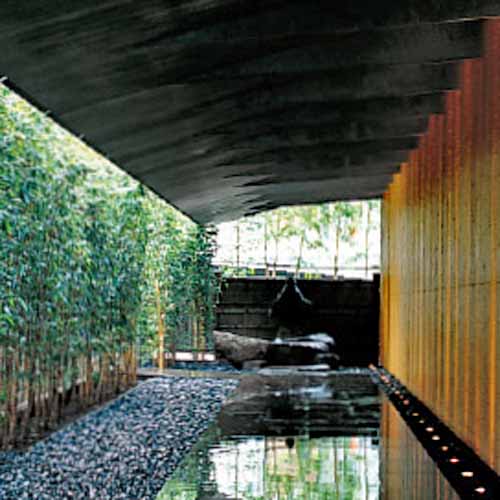
On the second day of Tokyo, you will see a mix of old and modern-day Japan. The highlights include;
- Visiting Meiji Jingu Shrine, historically significant and a magnificent shrine in the thick forest, most surprising in the middle of busy Tokyo,
- Stroll along Omotesando avenue, arguably the most fashionable street in Japan with cutting-edge architecture and the top brands of the world,
- Wander through Ota Memorial Museum which specialises in ukiyo-e (wood print) art, and
- Amble through the wonderful Nezu Museum of Art , designed by Kengo Kuma, where you can enjoy the contemplative Japanese garden and take in one of the finest collections of Japanese and East-Asian pre-modern art.
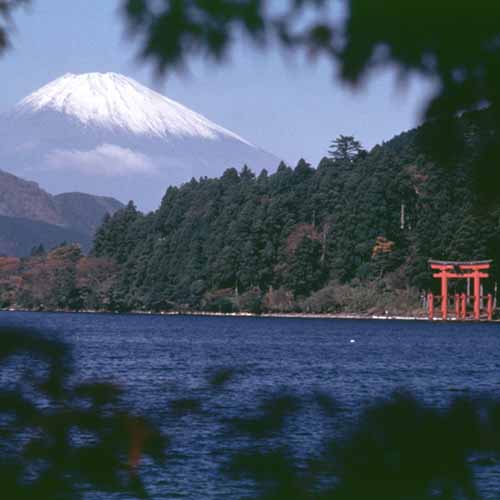
Start with a ride on Japan's impressive shinkansen , the bullet train, for a lovely overnight trip to Hakone , a scenic hot springs resort area located in the mountains near Mt Fuji .
With its proximity to Tokyo, Hakone has been a popular destination for Tokyoites seeking rest and rejuvenation for centuries. You tour the general Hakone region by private vehicle, travelling through the Izu-Hakone National Park and, depending on the weather, catching glimpses of Mt Fuji up close. Hakone has some outstanding world-class museums and galleries. You will firstly visit the Okada Museum of Art . It is a private art museum, the largest in Hakone by floor area, exhibiting Japanese paintings, oriental ceramics, Asian art and religious art. As well as the art works, enjoy the beautiful garden and natural surrounding. The next stop is the Hakone Open-Air Museum with its amazing outdoor sculptures from the likes of Henry Moore and Rodin set against a spectacular backdrop of maple and cherry trees. You will also cruise on a 'Viking ship' on Lake Ashi , and take a ropeway over the Owakudani to witness the geothermal activity below which is the source of healing in hot spring spa baths.
Tonight you will stay at one of Hakone’s premiere traditional ryokan with a beautiful garden. Featuring onsen hot spring mineral baths , you’ll experience Japan’s onsen culture firsthand and understand why an onsen visit remains one of the top past-times of the Japanese.
The ryokan will serve a kaiseki multi-course banquet of beautifully presented fresh local produce for dinner.
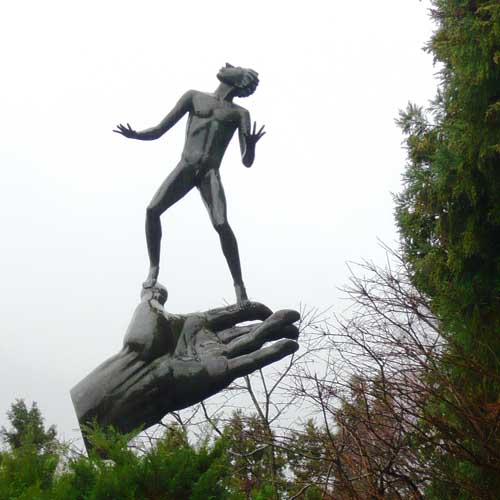
This morning you will enjoy a relaxing breakfast at your ryokan before embarking on another day in Hakone. While you are here, you will visit Narukawa Art Museum , which is dedicated to the Japanese style paintings (Nihonga).
After lunch, you will get back on shinkansen heading back to Tokyo. This evening is free for you to enjoy the last night in this mega city.
Another shinkansen ride will take you to the city of Kanazawa on the shores of the Japan Sea. Kanazawa is commonly known as “Little Kyoto” and is home to many traditional Japanese arts and cultures, history from the samurai era and the outstanding Kenrokuen Japanese Garden . Today you will visit among others;
- Kenrokuen Garden, originally designed as a castle garden dating back to the 17th century and regarded as one of the three great gardens of Japan,
- A traditional tea house in a beautiful Japanese garden where you experience 'The Way of Tea' (commonly known as tea ceremony in English), one of the most well-known aspects of Japanese culture.
After briefly resting back at your hotel, you will sample wagyu beef at a teppanyaki restaurant for dinner tonight.
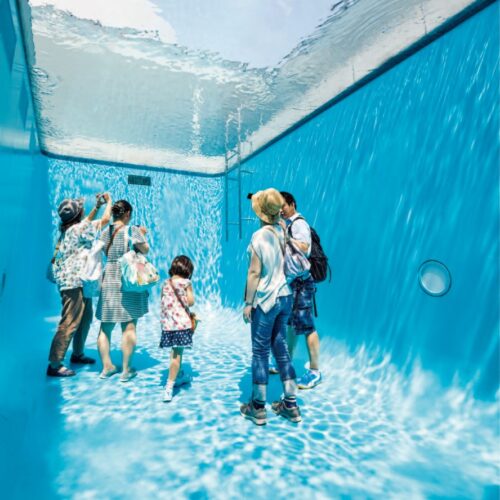
This morning you will stroll around the Nagamachi samurai resident district then move onto the 21st Century Museum of Contemporary Art , noteworthy for the unusual glass cylinder structure which envelopes the building to reduce its environmental footprint designed by SANAA. Your guide will continue taking you on a backstreet walk of Kanazawa art district exploring some prominent small art galleries including D.T. Suzuki Museum .
The rest of the day is free. You can continue your exploration of Kanazawa checking out many craft shops offering exquisite kimono, gilded lacquerware and local sake products. You may like to visit the Higashi Geisha District , a well-preserved area of narrow streets. In days gone by, immaculately presented geisha would have entertained wealthy patrons in slatted wooden tea houses. Here you can visit the Gold-leaf Museum , the Kanazawa’s number one traditional craft.
The evening is also free tonight. We are more than happy to make dinner recommendations.
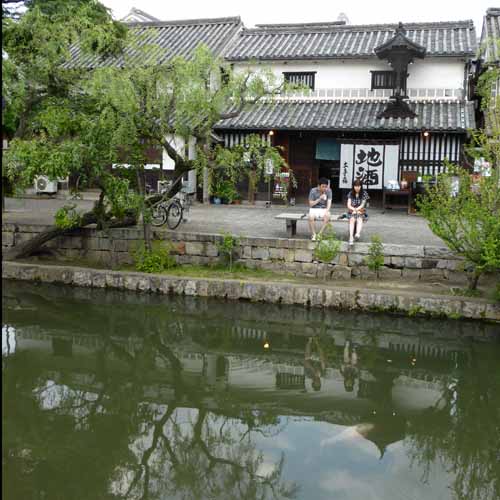
After a couple of days in Kanazawa, you head for Kurashiki , which was a prosperous trading town during the feudal era.
On the way, you stop at Okayama , for a guided tour of the magnificent Koraku-en Garden , another one of the three most beautiful gardens in Japan. Initially completed in 1700, Koraku-en is prized for being a great example of the “scenic promenade” garden style, which reveals a new view to the visitor on every turn along its meandering path.
Finally, you will arrive at Kurashiki, your base for the next two days. It is delightfully historic and picturesque town to walk around. It has maintained its charming streetscape of traditional black-and-white storehouses, merchant residences and canals lined with willow trees. Here you visit the Ohara Museum of Art , with a superb collection of ceramics, paintings and antiquities from Japan, China and other ancient civilizations.
You will have a French style dinner at your hotel tonight.
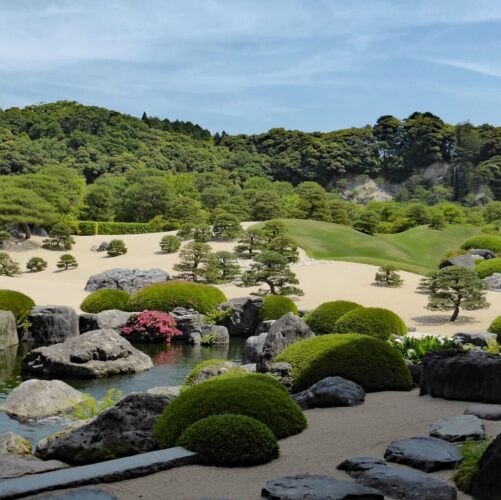
Today you travel to Yasugi, a rural town on the western coast of Japan’s main island, to visit the garden at the Adachi Museum of Art. This garden has been nominated Japan’s most popular garden for 17 consecutive years. Designed in the “borrowed scenery” style, the mountainous backdrop to this extensive garden makes it appear that the mountains are a seamless part of the garden itself.
You will also visit the Photography Museum of an award-winning photographer, Shoji Ueda .
You return to Kurashiki to have a free evening.
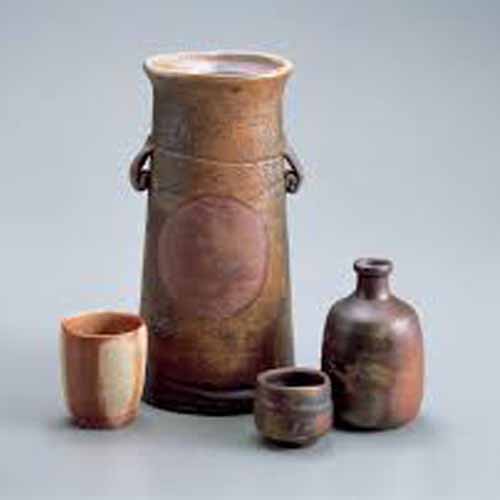
A minivan ride will take you to the small regional town of Imbe , which has been producing Bizen ceramic for some 1,000 years. Bizen-ware is still highly prized among pottery enthusiasts both in Japan and overseas. Today you will;
- Engage first hand with one of Imbe’s most awarded potters in his own studio and private garden,
- Visit the ancient 'climbing' kilns, and
- Wander through the galleries and craft shops.
Potentially the biggest surprise of your trip awaits this afternoon. You hop on a ferry across Seto Inland Sea to an art island, Naoshima . This afternoon, you spend time at Ando Tadao Museum and the House Project .
Tonight, you stay at a sublime Japanese style ryokan on the island and experience Japanese hospitality at its best!
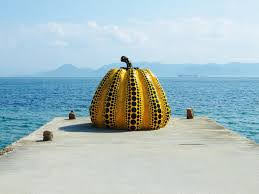
Once home to just a few remote fishing villages, Naoshima is now known as the "Art Island" in Japan’s magical Seto Inland Sea.
Thanks to the Benesse Corporation and the visionary Naoshima Art Project, Naoshima has been transformed into a cutting-edge contemporary art island and it is visited by leading architects and artists from all over the world. Today after a relaxing breakfast at your ryokan you;
- Spend time on the island visiting Valley Gallery, Chichu Museum , Lee Ufan Museum , and Benesse House Museum and its surrounding monuments,
- Also enjoy the laid-back atmosphere and stunning natural scenery of the Seto Inland Sea,
This evening you will cross back to the mainland, and take a shinkansen to your final destination, Kyoto .
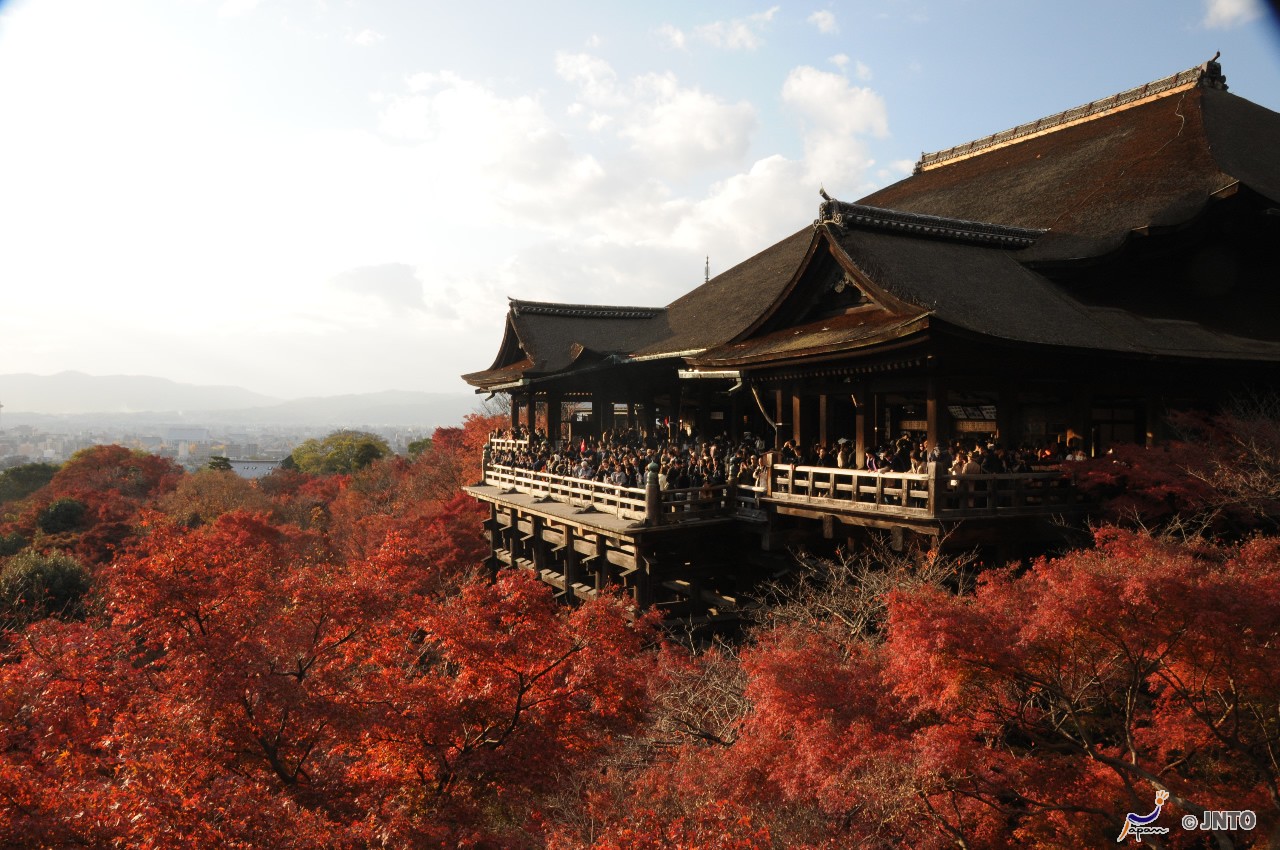
With 17 UNESCO World Heritage Sites (at last count!), Kyoto is the historical heart of Japan’s culture and the guardian of many of its ancient traditions. Originally made capital way back in 794, present-day Kyoto offers an incredible range of contemplative gardens often associated with the ancient temples and shrines.
While Kyoto has many iconic sites, our walking guided tour today will focus on hidden treasures not often found in a guide book. You will visit a select temple garden, small galleries of local artists, and walk along the ever so attractive backstreets of Kyoto.
In the afternoon you will visit Kiyomizu Temple at the end of Gojo slope, a street filled with Kyoto style ceramic shops.
Tonight is free for you to wonder around the atmospheric city of Kyoto.
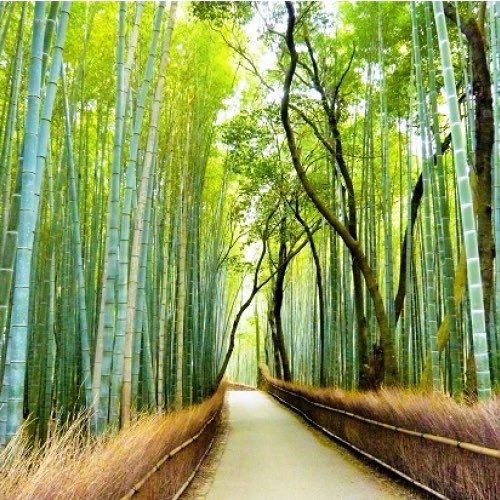
Today you explore Kyoto's western suburb, Arashiyama. At Arashiyama you will;
- Observe superb examples of “stroll” style Japanese gardens at Tenryuji Temple ,
- Wander through the bamboo grove, famous for its extensive forest of thick bamboo stands and ethereal light,
- Visit the historic villa of Okochi Sanso , built on a hill-side, it offers magnificent views of Kyoto. The sprawling gardens, villa and tea house showcase the Japanese garden aesthetic at its very best.
- Lunch is a classic lunch of tofu , a local specialty with roots in Kyoto’s Buddhist vegetarian past,
- Stop at Kinkakuji Temple, better known as Golden Pavilion . The temple is a stunning three-storied pavilion covered in dazzling gold leaf.
Another free evening for you to try endless choice of restaurants in Kyoto tonight.

This is another very special day. Past guests have said this visit ranks as one of the most impressive days of the tour.
Today you visit the stunning Miho Museum . Here you can experience a thorough immersion into the world of art, architecture and landscape design.
Renowned architect I.M. Pei designed this museum with much of the site built into a forested hillside. Miho was built to house an extensive private collection of some 2,000 antiquities from ancient civilizations.
The contrast of the glass and steel structure of the museum’s roof against the surrounding natural environment is spectacular. It is this seamless integration of the man-made and the natural which creates today's indelible memory.
Back in Kyoto, you will have some free time this afternoon.
Tonight you will gather one more time for a final meal. Chat about your memories of the tour at a contemporary Kyoto cuisine restaurant which represents the complexity of this fascinating old capital.
This morning after breakfast, your 2025 Garden and Art Tour of Japan concludes.
You can return to Tokyo by train or air to fly home, or depart from Osaka’s Kansai International Airport . Perhaps you might like to linger in Japan for a little longer. We will be delighted to plan your personal post-tour extension to show you a different part of Japan. Please see our Model Extension Itineraries on Private Tour page for inspirations!
Note: The cost of transfer to your departure airport is not included in our Small Group Tours (as we found many guests choose to stay in Japan a bit longer), however, we are happy to arrange your transfer to next destination or to exit airport in accordance with your plans. Please see our FAQ for more details.
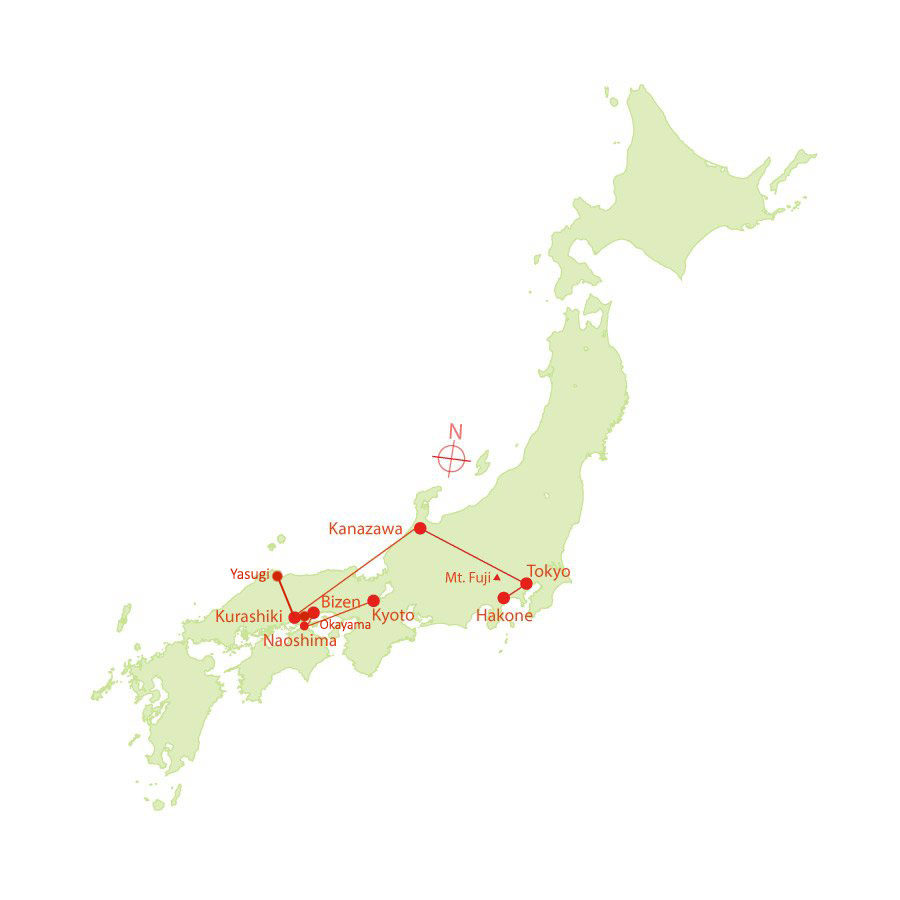
Dates & Prices
Per person twin share:, single supplement.
Each guest is personally looked after with one-on-one interactions with our hand-picked, expert tour guides. As part of your investment, this tour includes:
- First-class wisdom and higher standard of individual care and attention
- 14 nights’ accommodation (including traditional Japanese inns)
- All breakfasts
- 6 lunches (7 free choice lunches)
- 8 dinners (5 free choice dinners)
- Airport meet & greet on arrival
- Hotel transfer by public transport on arrival
- All local transport (train and private minivans)
- Pre-loaded Suica card
- Expert English speaking tour guides (locally licensed)
- Cultural activities and entry fees included in itinerary
- Luggage transfers (1 piece per person)
DISCLAIMER: Unless otherwise stated, this tour does not include the costs of international and domestic airfares, transfers on the last day, travel insurance, alcoholic and non-alcoholic beverages, transport during free time, personal expenses (laundry, internet, telephone, coin lockers etc.) and Visa (if required).
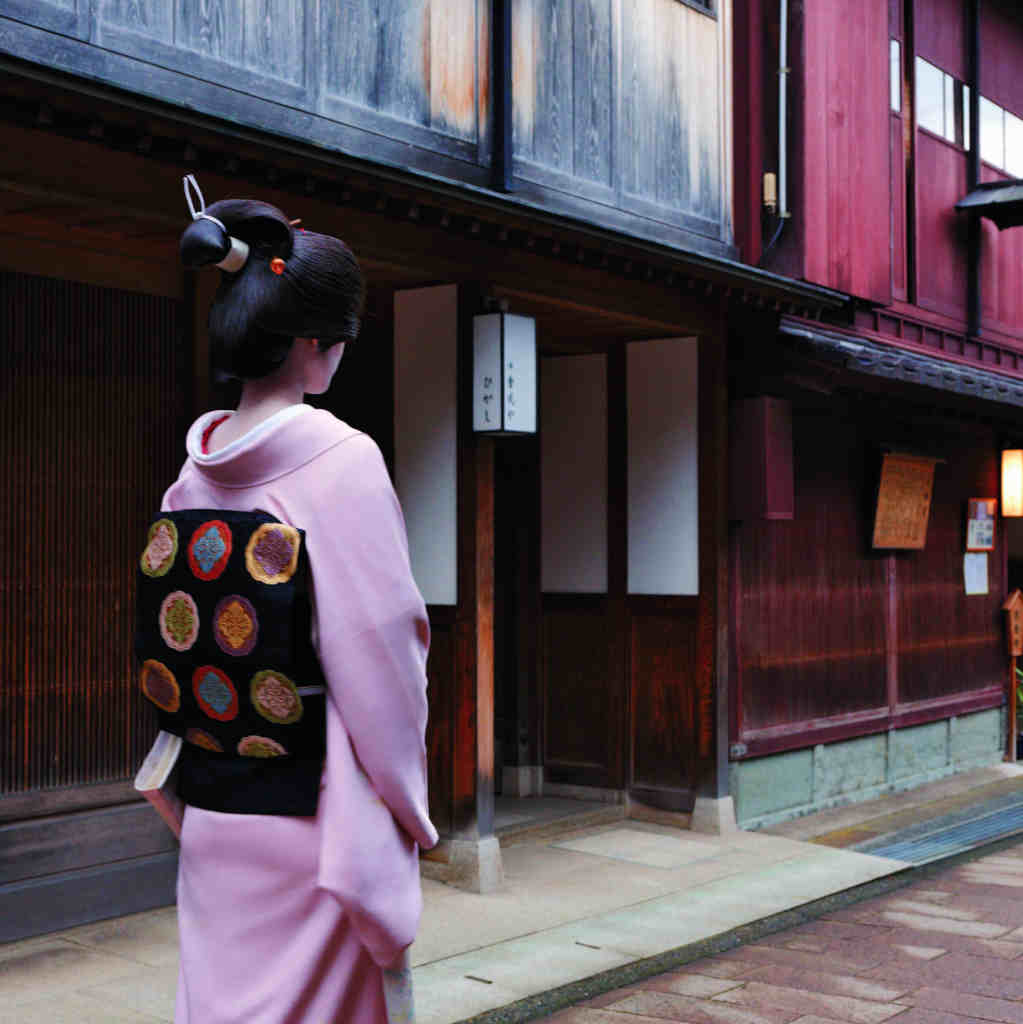
Who this Japan tour is for...
This is a perfect tour for people who:
- Want to visit the best Japanese gardens and art museums both traditional and contemporary
- Wish to cover the iconic sites of popular destinations like Tokyo, Hakone, Kanazawa, Kyoto in 15 days
- Enjoy strolling through backstreets with your guide and find hidden gems avoiding the tourist traps
- Join a superbly-organised tour packed with visits and cultural experiences as well as some free time
- Be up-close and interact with locals through public transport
- Experience a variety in style , and typically 4 star boutique accommodation with private bathroom including traditional Japanese ryokan
A specialist company using local guides and the small size of the group make this a fantastic holiday!
Terence Watton
I would be very happy to recommend Journey to the East Tour company to anyone wanting a small group tour with superb variety in art, gardens, food and Japanese experiences. Terrific trip.
Bronwyn Chapman
New zealand.
Japan is truly magical and the country is beautiful, the contemplative gardens impart a feeling of harmony, the culture is friendly, helpful and everything works well. A trip I will always remember as truly satisfying.
Kathryn Daniels & John Chichester
Exceeded our expectations. We loved everything about the Art & Garden Tour, particularly the companionship a small group of eight added to our holiday.
Brenda & Janice Appleton
Have a question about this tour get in touch with our staff directly., privacy overview.
Boutique Japan
Naoshima: Japan’s Art Island
Naoshima, commonly known as Japan’s art island, is a tiny island in the Seto Inland Sea, and one of our absolute favorite places in Japan. It’s home to whimsical sculptures and installations, and modern museums and galleries featuring impressive architecture and artwork.
Until the early 1990s, Naoshima was a remote and sleepy island, but — thanks in large part to an art-loving Japanese businessman’s vision — it has gradually become one of the world’s most unique destinations for art lovers and travelers seeking one-of-a-kind experiences.
The island was included in National Geographic’s 19 Places to Indulge Yourself , featuring tips from Boutique Japan founder Andres Zuleta .
Originally written in 2014, this post was updated and republished on July 24, 2017.
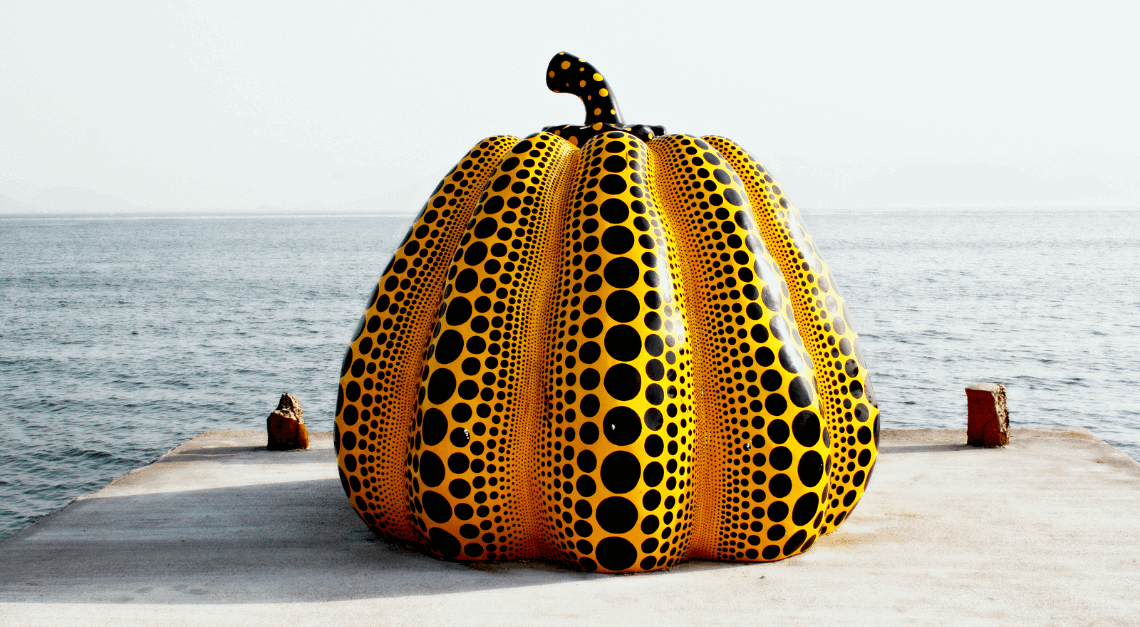
While usually missed by first-time visitors to Japan, Naoshima is just a short ferry ride from Japan’s main island of Honshu, and has an atmosphere like nowhere else.
In addition to its tiny traditional fishing villages, Miyanoura and Honmura, you’ll find stunning architecture by Tadao Ando, museums, colorful galleries and installations, and charming cafes – all in a laid-back atmosphere amid beautiful scenery.
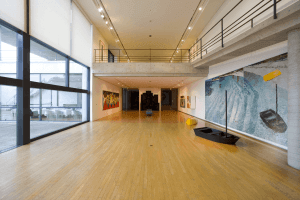
Getting to Naoshima
Traveling to Naoshima is relatively easy. Take the shinkansen (bullet train) — from, for example, Tokyo, Kyoto or Osaka — to the city of Okayama, home of the famous Korakuen Garden.
From Okayama, head south by local train (or, better yet, private vehicle) to the small port town of Uno about one hour away.
Finally, from Uno it’s a short 20-minute journey by ferry to Naoshima’s Miyanoura Port. Guests of Benesse House can then hop in the hotel shuttle to check in, or begin seeing art.
More on getting to Naoshima , and the Uno-Naoshima ferry schedule .
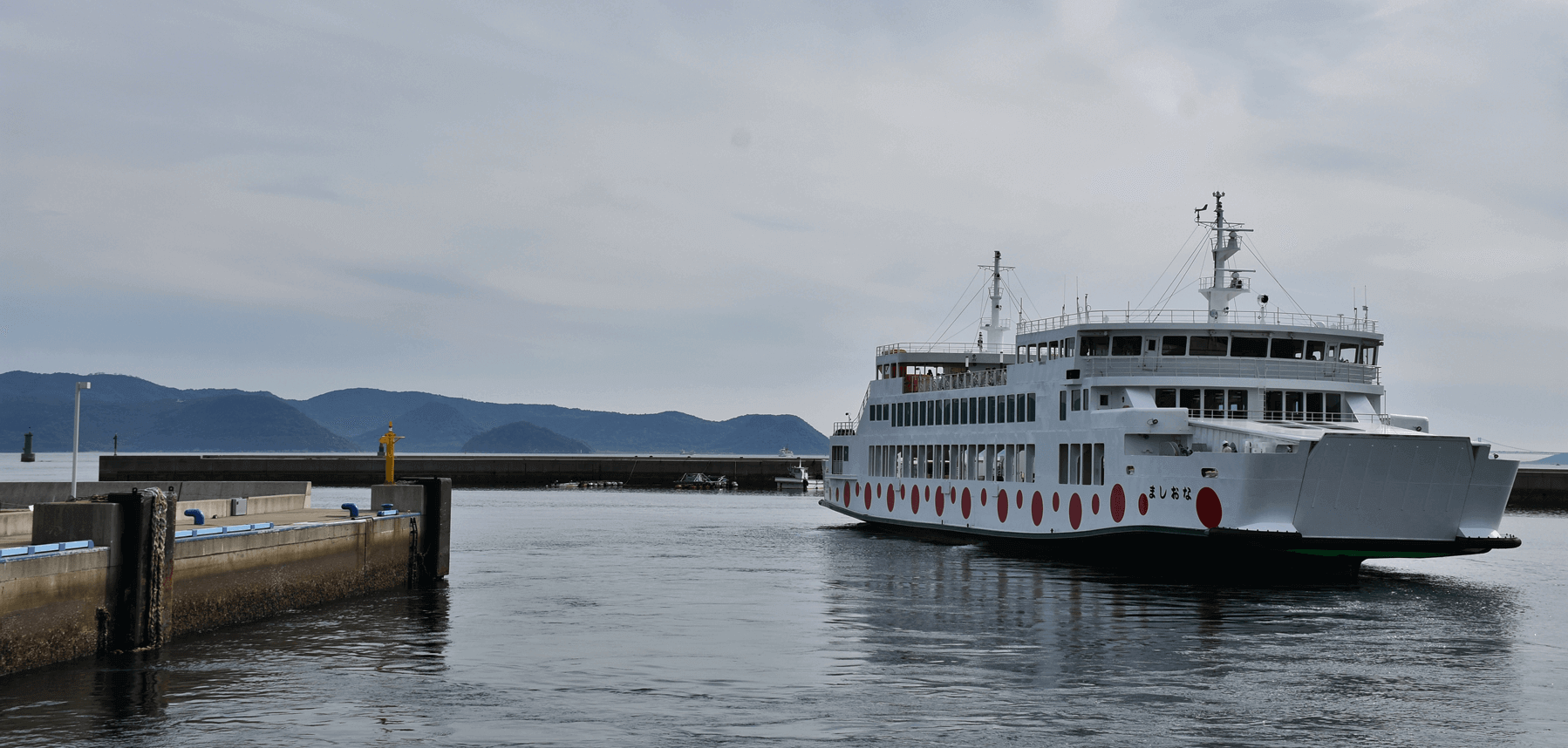
Getting Around Naoshima
Once on Naoshima, getting around is fairly easy:
- Benesse House guests have access to the convenient hotel shuttle, which does a loop of the island’s main art sites.
- Non-guests can use the island’s local buses (less frequent but easy to use).
- Naoshima is also bicycle friendly (we recommend renting an electric bicycle to navigate the island’s hills).
Read more about getting around Naoshima .
Planning Your Trip: When to Visit Naoshima
Before planning your trip, make sure to consult the Benesse Art Site Calendar .
On Naoshima island itself, most exhibits are usually closed on Mondays. However, during holidays (for example, over 3-day weekends), most exhibits remain open on Monday and close on Tuesday instead.
On the neighboring art islands of Teshima and Inujima, most exhibits are usually closed on Tuesdays.
As for how long to stay, while visiting Naoshima as a day trip is possible, it would be quite rushed – so we typically recommend spending at least one or two nights on the island.
Read about the seasons and when to visit Japan.
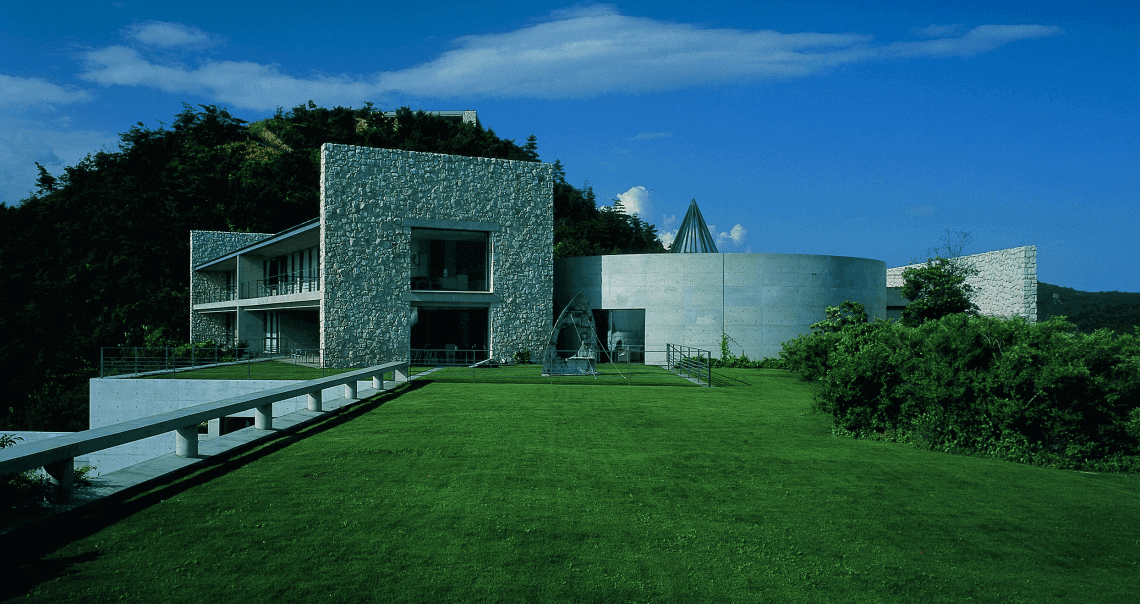
Accommodations: Where to Stay on Naoshima
Naoshima’s most unique and coveted accommodation option is Benesse House .
Overlooking the Seto Inland Sea, Benesse House (which was designed by renowned architect Tadao Ando) doubles as both a museum and boutique art hotel.
Benesse House guests have special early-morning and late-night access to the museum, and the hotel also has a spa, two restaurants (Japanese and French), and a very convenient shuttle to Naoshima’s art sites.
Apart from Benesse House, Naoshima is home primarily to budget-oriented accommodations, such as traditional minshuku (Japanese guesthouses), as well as yurts .
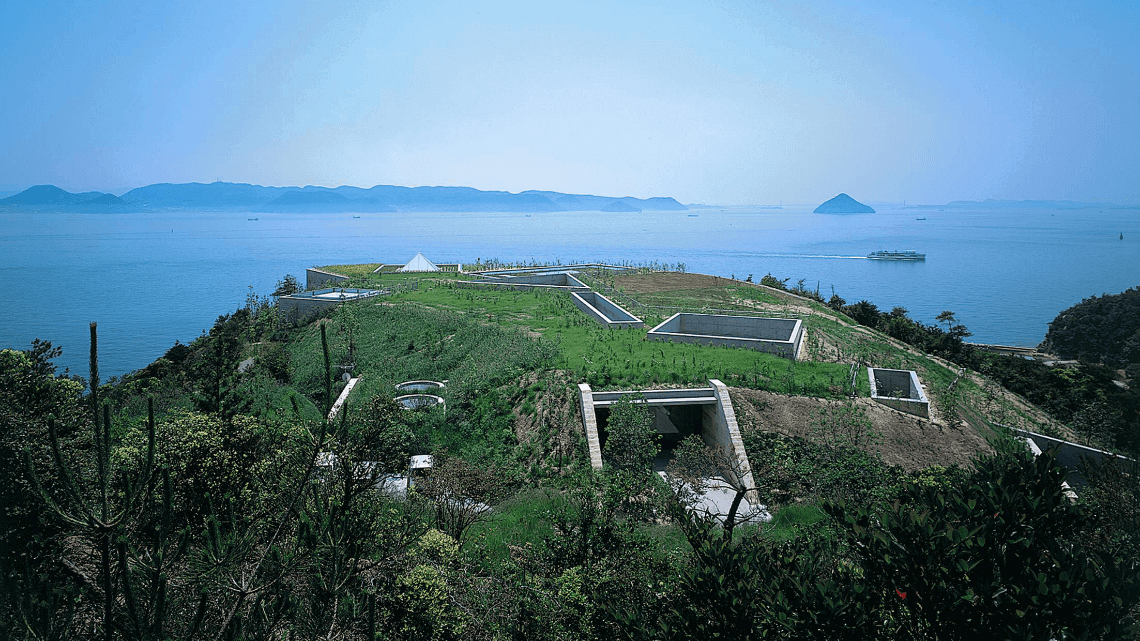
Naoshima’s Museums, Galleries & Installations
Below are some of Naoshima’s many highlights.
Art House Project
The tiny fishing village of Honmura, on the eastern edge of Naoshima, is home to the Art House Project , a collection of abandoned houses and workshops (as well as a temple and a shrine), that have been converted into venues and art installations by artists from Japan and around the world.
The Art Houses are scattered throughout the village, within walking distance of one another. Intersperse your visits with a coffee break or lunch at one of the handful of charming cafes run by a mix of locals and transplants from cities like Tokyo and Osaka.
Chichu Art Museum
For many (myself included), Naoshima’s highlight is Tadao Ando’s stunning Chichu Art Museum . Much of the building is underground, and Ando designed it to let in an abundance of natural light that alters the appearance of the artwork it houses throughout the day.
Chichu houses a small but impressive collection of works by artists including Claude Monet, James Turrell, and Walter De Maria. On most Friday and Saturday evenings, the museum also hosts the Open Sky Night Program, a special sunset viewing of James Turrell’s “Open Sky.”
Fewer Clients, Richer Experiences
We live and breathe Japan, and want you to experience the Japan we know and love. If you’re as obsessed with the details as we are, chances are we will be a good fit.
Get Started
Benesse House
After also visiting the nearby Lee Ufan Museum , make your way to what is arguably the island’s centerpiece, Benesse House.
Introduced above, Benesse House is a museum-hotel that is home to works by Hiroshi Sugimoto, Gerhard Richter, Shinro Ohtake, Richard Long, David Hockney, and many more.
Another site not to be missed is Japanese artist Yayoi Kusama’s famous “Kabocha” (Pumpkin) sculpture, located a short walk from Benesse House’s Park building.
Time and energy permitting, a fitting way to end the day is with a soak at Naoshima’s kitschy and wonderful Naoshima sento (bathhouse), “I♥YU” ( yu means hot water, or bath, in Japanese).
The colorful bathhouse was designed by Shinro Ohtake, and a soak here is a truly unique way to immerse yourself in art – and Japanese culture. You may need to bring your own towel and soap (sometimes available for purchase at the bathhouse front desk).
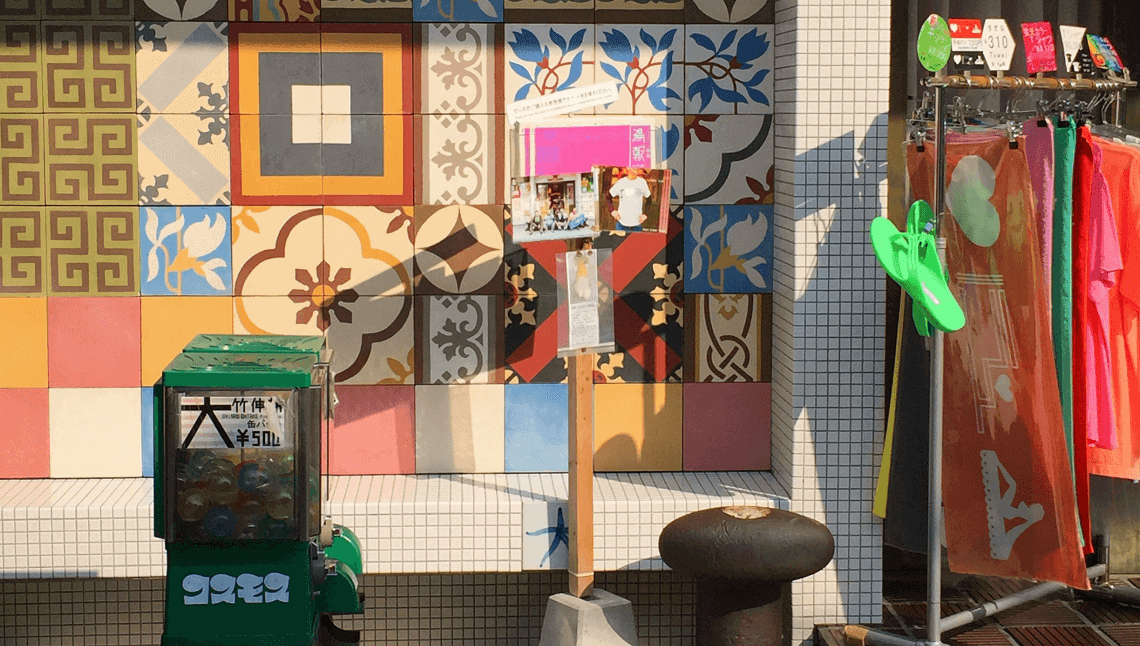
The Art Islands of Teshima and Inujima
If your schedule allows, we highly recommend making a side trip by ferry to one or more of Naoshima’s neighboring art islands.
Teshima and Inujima — which, along with Naoshima, form part of the greater Benesse Art Site Naoshima — are hidden gems that almost make Naoshima feel fast-paced.
Reaching them requires some extra effort, although during the Setouchi Triennale inter-island ferry frequency is increased.
The laid-back island of Teshima is located about thirty minutes by ferry from Naoshima.
At the heart of the island is the incredible Teshima Art Museum , an awe-inspiring structure shaped like a drop of water by architect Ryue Nishizawa and artist Rei Naito.
The Teshima Art Museum itself is reason alone to visit, but the island is also home to several other highlights, including Christian Boltanski’s “Les Archives du Cœur” and the Teshima Yokoo House.
Getting to and around Teshima is not always easy. Ferries to and from the island are somewhat limited ( access to Teshima ), and the Teshima Shuttle Bus also has a limited schedule (not to mention requiring a fairly significant amount of walking).
Electric bicycles and scooters can be a good option for navigating the hilly island. Where possible, advance rental is advisable. Benesse Art Site provides the most up-to-date information on works, schedules, and getting to and around Teshima .
The small island of Inujima is located about forty minutes by ferry from Naoshima, or just ten minutes by ferry from the mainland port of Hoden.
This little-visited art island is home to the Seirensho Art Museum , its very own “Art House Project,” and the Seaside Inujima Gallery.
Once on Inujima, you can simply get around on foot.
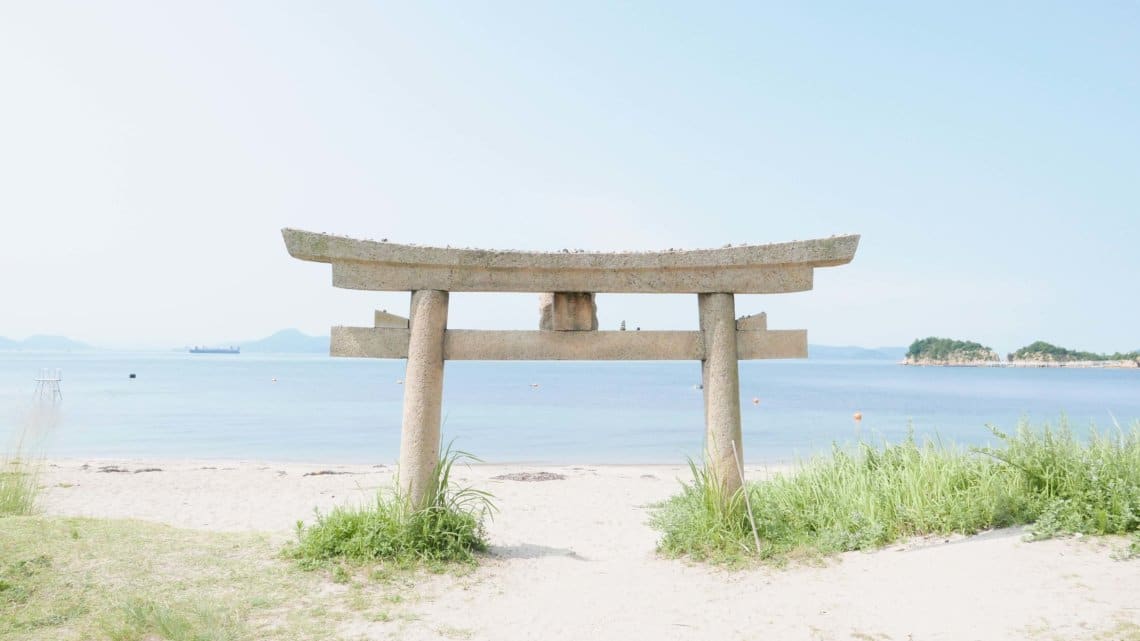
Enjoy your visit to Naoshima and Benesse Art Site, and make sure to also see our post on Japan’s best art destinations !
More Great Posts

Japan’s Best Boutique and Luxury Hotels & Ryokans
The best hotels and ryokans in Japan range from charming traditional inns in the countryside, to stylish design hotels and…

Traveler’s Guide to the JR Pass (Is It Worth It?)
The Japan Rail Pass (or JR Pass, for short) can be a good way to get around Japan, but many…

Major Holidays and Peak Travel Seasons in Japan
If you’re considering a trip to Japan during one of the country’s peak travel seasons, be aware that things can…
Plan Your Japan Trip
Learn more and contact us to discuss your unique trip.
- The Process
- Testimonials
- Subscribe Digital Print

- Tourism in Japan
- Latest News
- Deep Dive Podcast
Today's print edition
Home Delivery
- Crime & Legal
- Science & Health
- More sports
- CLIMATE CHANGE
- SUSTAINABILITY
- EARTH SCIENCE
- Food & Drink
- Style & Design
- TV & Streaming
- Entertainment news
Art award show offers trippy scenes of seeing and being seen

If you’re not fazed by the possibility of being deeply unsettled, catching a performance by the Japanese artist known as Saeborg (a self-styled “imperfect cyborg that is half human and half toy”), at the Museum of Contemporary Art Tokyo, should be a good Golden Week outing.
The uncommon dual recipient format of the award, which has the quality of a research grant rather than an accolade, is a strong point of the TCAA, in the sense that it potentially promotes more critical viewing. The award process is also notable for supporting “mid-career” artists, something relatively rare in the art scene, and even more so in Japan. Historically, funding programs here tend to favor organizations, rather than individuals. Money then trickles down to young and emerging artists, who receive exposure and financial support for the duration of a biennale or festival, but are left to sink or swim between gigs.
Saeborg’s work, “I Was Made for Loving You,” includes giant inflated turds with stylized flies hovering over them. In a country that is home to the toilet humor of family-friendly manga character Crayon Shinchan, these pop objects may not cause much of a stir. Seasoned art-goers might even find the blow-up crap a bit hackneyed — given that the American artist Paul McCarthy’s giant fecal coil “Complex Pile” floated its way onto the art scene 17 years ago. On the other hand, the hour-plus-long spectacle of someone in a latex dog costume shambling around an illuminated dais, the kind of fixture that you’d find in a strip club, shows off the Joshibi University-trained Saeborg’s take on the human condition, and our treatment of animals, very pointedly.
The dog suit, like the rest of “I Was Made for Loving You,” hints at cartoon cuteness, but the design is a bit off. That is to say, it doesn’t have the manipulative power of a character carefully put together by a multinational corporation or commissioned by a national government. At the same time, it isn’t outright creepy, or lifelike enough to directly trigger visceral unease, like an actual dead cow cut in half.
A spotted tongue hangs limply out of the mouth of what the artist has dubbed “Saedog.” It has air valves rudely sprouting out of its body. Its head and paws wobble uncontrollably because they are not rigid and extend beyond the head, hands and feet of the person inside the suit. Its slow, ungainly movements are nominally dog-like, but also not a skilful imitation of how a dog moves around. Saedog is meant to be hybrid and “unnatural.”

Saedog is a pathetic sight, and as a result viewers are put into a highly compromised position. The precedent for humans looking at animals for visual pleasure is the zoo, and as photography is permitted for the performance, the reaction of some visitors will be to snap a picture or film it. Saedog doesn’t really do anything, though. An electronic soundscape playing in the background gives the feeling that something is about to happen. But the experience of watching and being watched by Saedog is extremely awkward, as nothing does happen. The visual cues of cartoonishness, color and bounciness suggest fun and innocence, but rather we are nudged toward contemplating captivity and confinement, and the power of the gaze.
One viewer tried stroking Saedog, but stretched latex is not fur and does not softly yield to the touch. I imagined it must be hot, claustrophobic and very hard on the knees for the performer, and proffered a caffeine-infused gummy to them. A few visitors chuckled, but a gallery invigilator quickly pounced forward and told me to sit back down. Saeborg, who was in the audience, laughed and gave a thumbs up. The whole experience was exemplary of French philosopher Michel Foucault’s assertion that prisons, hospitals, museums and mental hospitals share a common goal of discriminating between “healthy” and “aberrant.”
In comparison to “I Was Made for Loving You,” the other half of the TCAA exhibition, Tsuda’s “Life is Delaying” is visually restrained, overtly high concept and does not go directly for the feels. Tsuda originally studied systems engineering, and correspondingly, her work comes across as cerebral rather than emotive.
In one darkened room, opaque projection screens, mirrors and empty frames mess with your head as to what is you — and not you. Videos show performers dressed in grey and white miming common daily actions, such as opening a closet, cooking and shaving, as well as moving as if they themselves have become the object in use.
Viewing the very deliberate enacted movements of the performers put me in mind of the work of social psychologist Erving Goffman and his work, “The Presentation of Self in Everyday Life.” Goffman suggested in this 1956 treatise that we all play-act in order to manage how we are perceived. Moments when a women actor genteely kneeled to mime opening a sliding door, or a male actor pretended to gruffly shave, were indicative of how we rehearse, enact and reinforce gender roles in everyday actions, for example.
Another installation occupying a long corridor also features a mirror, an empty frame and projection screen. A camera records footage of the corridor and plays back short clips after a delay, enabling visitors to see themselves, or other people walking down the corridor a few seconds earlier. It’s trippy.

Tsuda’s largest installation, “Hello Camera,” includes a rebuilt kitchen/dining room, and photos and video of actors re-enacting a 1988 home video of Tsuda’s family as they switch on and muck about in front of their newly bought camcorder, which is treated as a fellow sentient being. “Camera-san, are you hungry,” one of the family asks at one point.
The videos and photos show actors playing different family roles; the same actress can be seen playing the father in one video, and the youngest child in another. The quality of the acting, to a significant extent, dictates how this role-reversal comes across. In contrast to the potentially funny but pretty grim Saedog, “Hello Camera” is, perhaps unintentionally, a bit farcical. If Tsuda were ever to get hold of, say, Joaquin Phoenix and Tilda Swinton, it could be quite a different work.
As much as the two exhibitions visually contrast with one another, there are some things in common: Both envisage a space of creative and intellectual freedom beyond compartmentalization, and in this show in particular, both artists query the distinction between human and non-human. This might be a challenging view for anyone from a region with Judeao-Christian roots, but perhaps a less uncontroversial perspective in the context of the animistic tradition of Shintoism, which allows for the sacred to reside in the inorganic and organic. There is also common ground in their investigation of the physical body and constraint.
Struck by how Saeborg and Tsuda explore similar themes through profane and more formal visual styles, I asked Shino Nomura, a member of the TCAA selection committee, if the award’s recipients are chosen as a complementary pair or completely separately.
“We focus on individual artists, and then think about the pairing,” Nomura said. “In this case, the two artists deal with similar issues. We are human, not AI, so we can’t tell exactly how much the choice of one artist influences our choice of the other,” she joked.
The Tokyo Contemporary Art Award exhibition is on view at the Museum of Contemporary Art Tokyo through July 7. For more information, visit mot-art-museum.jp/en/exhibitions/TCAA_2022_2024 .

In a time of both misinformation and too much information, quality journalism is more crucial than ever. By subscribing, you can help us get the story right.

IMAGES
VIDEO
COMMENTS
Art. Roppongi Until 1 Sept 2024. This debut Japanese solo show from Chicago-born Theaster Gates takes place at one of Tokyo's most prestigious art venues. Gates's rise to prominence is very ...
Modern & Contemporary Art Tour. For art lovers and collectors, we offer a private contemporary art tour of Tokyo's must-see museums and hidden galleries led by an art curator familiar with the modern art world. Come see why Japan's contemporary art scene has taken to the global stage. ©Marie Takahashi. ABOUT THE EXPERIENCE.
Odaiba. Roppongi Akasaka. Harajuku Aoyama. Shinjuku. Ebisu Daikanyama Meguro. Shibuya. In Tokyo, art lovers are spoiled for choice. This 1 Day Tokyo Art Lovers Itinerary is the best way to see the four best museums in Tokyo at a sedate pace.
Also, right outside the museum, in Brick Square, are several restaurants and cafés. Definitely worth a visit! 12. Tokyo Metropolitan Art Museum. 550. Art Museums. Ueno, Asakusa. By warrenD190. Tokyo Metropolitan Art Museum is one of several spots to include on a day visit to Ueno Park.
Private 1 Day Tour to Mt Fuji and Hakone: Onsen, Arts and Nature. 10. Experience Japan like a local, far from the crowded and usually frequented places. Focus on relaxation and well-being without neglecting scenery and culture. We will pick you up from your hotel and drive you to Hakone, one of Japan's most beautiful hot-spring towns.
Take an immersive tour into the artistic genius of Japan during our Japan Pottery and Art Tour, with Tokyo Extension! As a perfect blend of sights and experiences related to Japanese ceramics, art, and architecture, this one-of-a-kind Japan tour creates the perfect opportunity to study in-depth the country's artistic and creative history and culture - revealing a different side of Japan missed ...
Back to Tokyo's Highlights Tokyo's Best Art and Design Galleries + Museums With an abundance of art and design seemingly...
To cap your tour of Tokyo art, let's visit Toyosu, the latest art hotspot. Here, you can experience the new sensations of digital art from teamLab. 1. Roppongi Hills. Roppongi, a hub for galleries including the Suntory Museum of Art and the Mori Art Museum, is a key art hotspot in Tokyo. Arriving in Roppongi, you will find yourself face to face ...
A: The best Street Art Tour in Tokyo according to Viator travelers are: Mt Fuji, Hakone Lake Ashi Cruise Bullet Train Day Trip from Tokyo. Tsukiji Fish Market Food and Culture Walking Tour. Tokyo Grand Sumo Tournament Viewing Tour. Tokyo Architecture and Contemporary Art Walking Tour with a local guide.
Exclusive tour for art lovers! Gallery hopping in Tokyo produced by a young art lover! tour unrated (all ratings for this guide) Meet Your Guide. Akemi I. Shinjuku, Tokyo, Japan (95) ... which is why I'm determined to share hidden galleries and art spots in Tokyo and discuss the future for arts with you guys! This is a 6 hours tour, and you can ...
A private contemporary art tour of Tokyo's must-see museums and hidden galleries for art lovers and collectors. Contemporary . Explore Virtual Reality with Japan's Leading VR Artist. Get lost in the mesmerizing world of Japanese art with leading Virtual Reality/ NFT artist, Aimi Sekiguchi. Experience a live painting performance and even learn ...
Ueno Park known for its beautiful cherry blossoms is an important cultural and art center in Tokyo. It is also home to many…. 10. Private Photography Tour in Tokyo with Kimono. This is a guided photo tour led by professional photographers specializing in portraits, with the aim of capturing participants…. 11.
6. Tokyo Station Gallery. Tokyo Station Gallery is a small art museum which is located in JR Tokyo Station. Since 1988, it has served as a symbolic gallery that offers great opportunities for people using the metropolitan station to stop by and spend their time appreciating the art more closely.
The Yayoi Kusama Museum in Tokyo is exclusively devoted to her work. Situated in the Shinjuku Ward in the western suburbs of Tokyo, the five-floor building was designed by the Japanese architecture firm Kume Sekkei. Completed in 2014 and inaugurated in 2017, the museum debuted with an exhibition featuring 600 of Kusama's works.
For those seeking an extraordinary art experience, a visit to teamLab's Borderless Museum in Tokyo is a must.Reopening at central Tokyo's Azabudai Hills in February 2024, the teamLab Borderless Museum offers an interactive and immersive experience through its unique digital installations.(Excerpt from the text)
Tokyo National Museum. This is the pinnacle of museums in Japan featuring everything that symbolises ancient Japan such as art, historical documents, and archaeological items. Totalling 110,000 items this beautiful museum found in Ueno Park is one of Japan's oldest and most celebrated. Opened in 1872, Tokyo National Museum is recommended for ...
Art project FARET Tachikawa is only a short walk from the station. There are 109 works of 92 artists displayed in and around buildings that contain a hotel, a department store, a library, and offices. A lot of art works are not just art but also useful objects for the space such as benches, ventilation ports, and streetlights.
Tour Overview. The 2025 Garden and Art Tour of Japan visits a selection of the wonderful Japanese gardens and international standard art museums. The 15-day tour will give you a great grounding of Japan, as you visit Tokyo, Hakone, Kanazawa, Okayama, Kurashiki, Bizen, Naoshima and Kyoto on your way to exploring the world of garden and art both ...
Naoshima: Japan's Art Island. Naoshima, commonly known as Japan's art island, is a tiny island in the Seto Inland Sea, and one of our absolute favorite places in Japan. It's home to whimsical sculptures and installations, and modern museums and galleries featuring impressive architecture and artwork. Until the early 1990s, Naoshima was a ...
An exemplar model of the harmony between culture and nature, Naoshima Island is today one of the most remarkable art, architecture and design destinations in the world. For art lovers with a strong penchant for creative eccentricity in search of an escape from Japan's fast-paced metropolises, Naoshima Island is a worthy side trip that does ...
The performance is part of a two-person exhibition, alongside Ishikawa Prefecture-based artist Michiko Tsuda, which presents the conclusion of the 2022-24 cycle of the Tokyo Contemporary Art Award.
The group of 16 being led through Tokyo's old downtown district are on the "Uso no Tsua," translating as "lies tour," an unexpectedly successful guided trip along a 2-kilometer route in one of Tokyo's most-visited neighborhoods. The tour, which comes as AI-generated text, images and videos raise fears about what information can be trusted ...